49+ Types Of Paintings Styles And Techniques [Mediums Included]
What are the types of paintings? How are painting styles different from painting techniques? These are questions that haunt every art student.
I personally request you throw everything that you know about all these types of painting, styles, and techniques because I am going to school you in a better way!
For starters, let’s just say that painting types, painting techniques, and painting styles are three different stories, although often confused.
Painting styles are subjective to an artist and mark their unique type of painting, whereas painting techniques refer to the procedure or the method used while painting.
For instance, Van Gogh’s paintings incorporated the Impasto technique, but his style was predominantly that of Post-Impressionist Artists.
Now, the type of painting would primarily mean whether it is representational, conceptual, symbolic, narrative, or emotive. So, Van Gogh’s type of painting can be considered representational as he mostly painted what he saw but in his own style.
To top it all, there is something called painting mediums too which mostly means which type of medium is used to paint. It can be anything from an oil painting on canvas to a charcoal pencil drawing.
So whether you are setting foot in this world of art or just inquisitive about this language of colors – I have it all covered for you.
Here’s a list of things that we will cover in this blog:
- 7 Types of Painting
- 11 Types of Art Mediums
- 22 Painting Styles
- 33 Painting Techniques
This will thoroughly make out between each element that forms a complete artwork. If at any point you feel that you want to skip, you can directly land on your choice of topic with the help of our Table of Content.
Let’s start with painting types…
7 Different Types Of Paintings
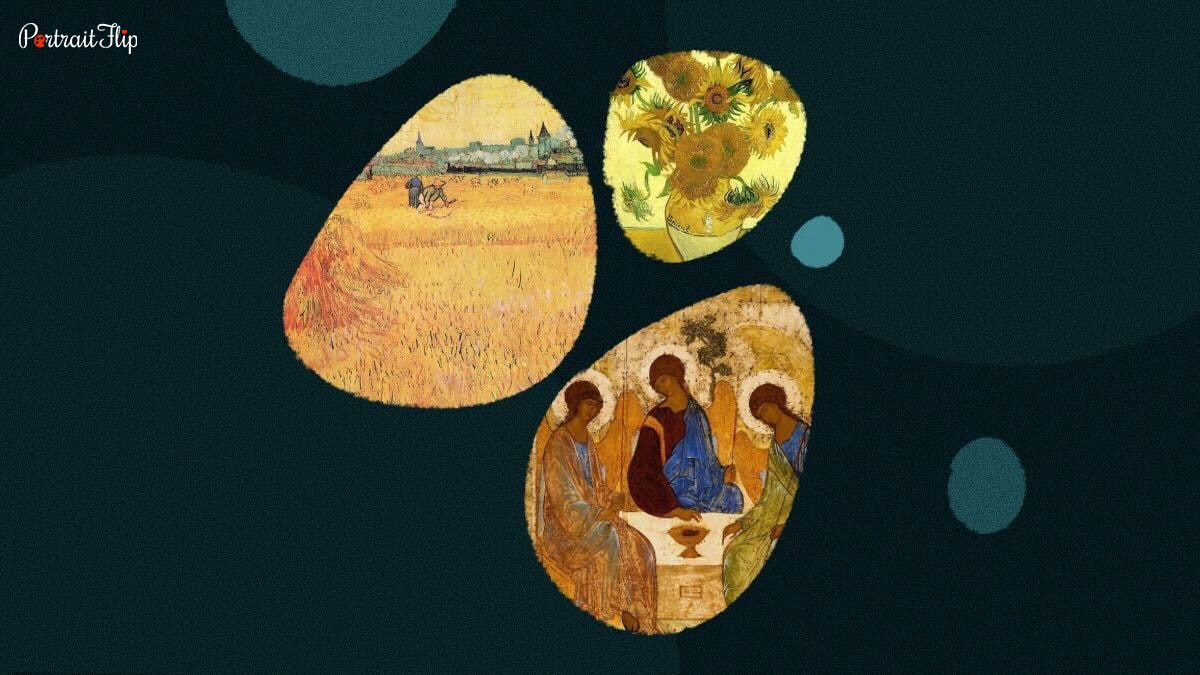
There can and possibly are only 7 different types of paintings.
Despite a thousand different styles, the painting can only exist in the form of any of these painting types.
E.g., one of the famous paintings of Frida Kahlo, Self-Portrait with Thorn Necklace and Hummingbird, was painted in Naïve art style while the technique used was oil on canvas; the painting still comes under Portrait Painting.
A type of painting is really personal to the artist, but it can never truly differ from these 7 types of art painting.
Let’s try to understand each painting type, one at a time.
1. Portrait Paintings
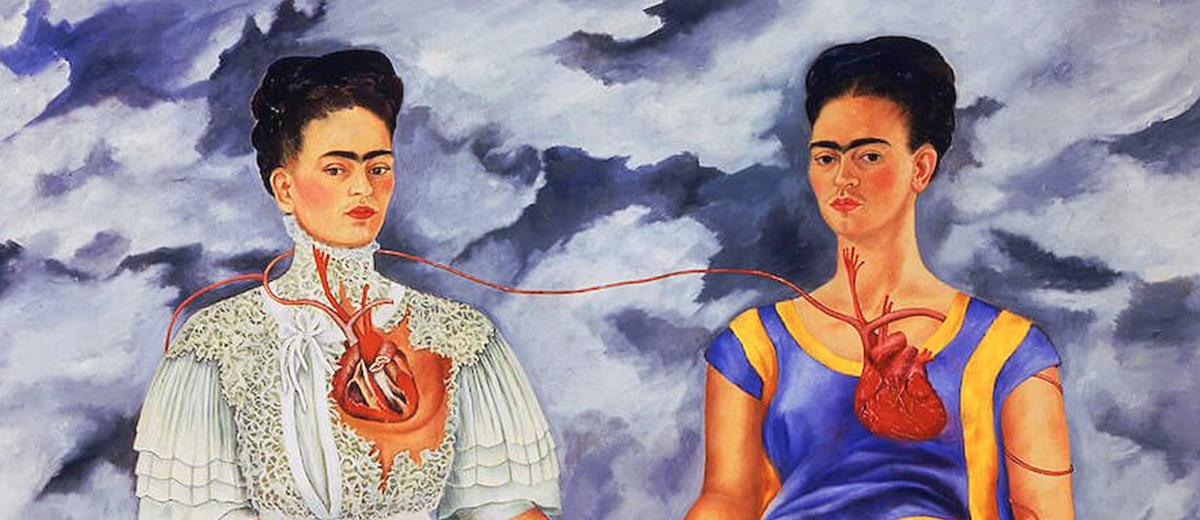
“Every portrait painted by an artist is the portrait of.”
Portrait painting is the most common and famous type of painting.
Its whole and sole purpose characterizes it; capturing a character on canvas.
The characters of a portrait painting are not limited to only humans.
Besides, it is not even limited to just one character.
Portraits can be captured in any medium the artist seems fit for his masterpiece.
Portrait paintings are best known to be kept as a remembrance of a lost loved one or for family heirloom purposes.
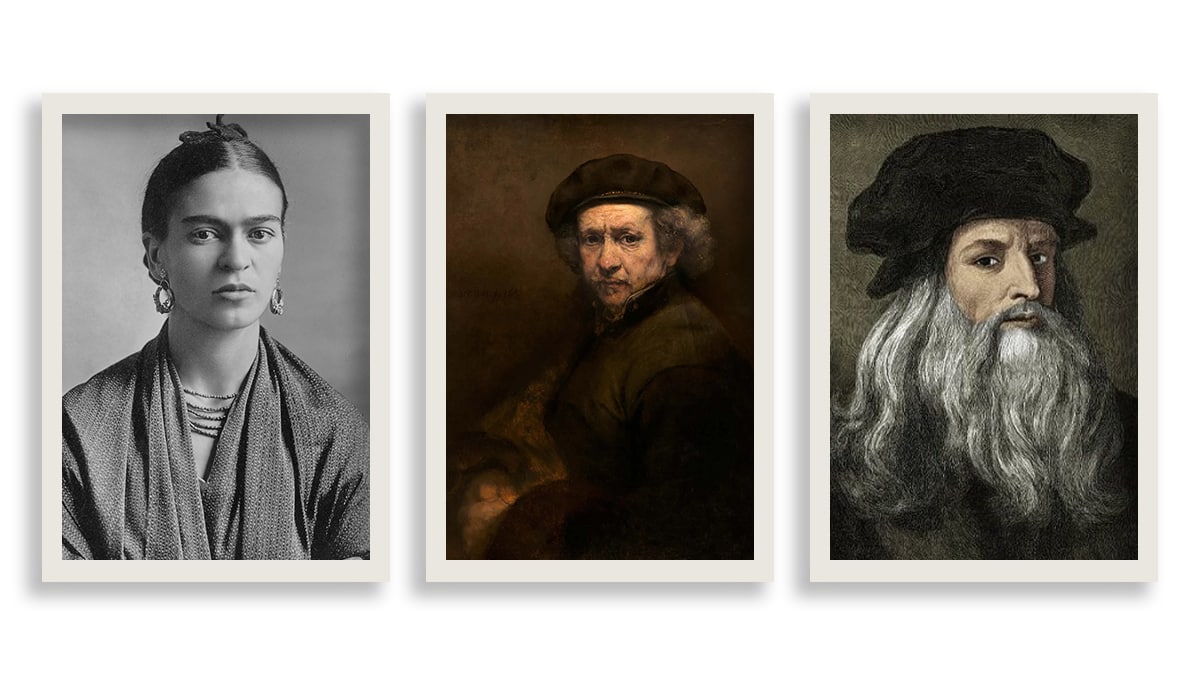
Famous Portrait Artists (from left): Frida Kahlo, Rembrandt, Leonardo da Vinci
2. Landscape Paintings
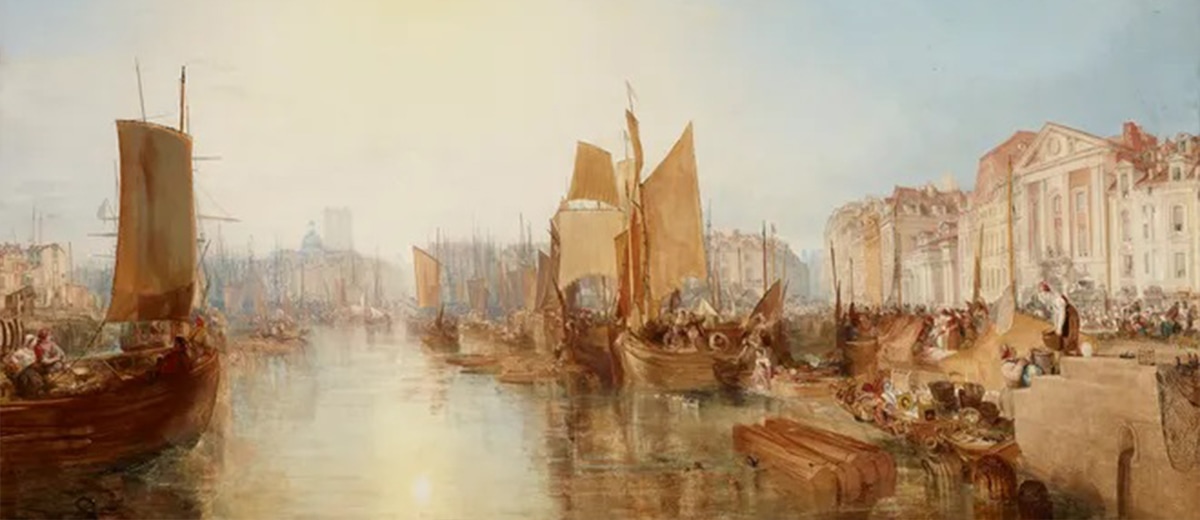
Landscape paintings are one of the most renowned types of painting that focuses on capturing natural elements on the canvas.
It can be safely said that this type took fame through the works of Van Gogh and his likes.
The famous landscape paintings’ main objective has been to capture all the natural components.
These types of paintings have mostly been known to mirror the emotional side of the artist or reflect their thoughts through natural elements.
These components include terrains, skies, mountains, rivers, trees, etc.
Landscape paintings can be a part of memory paintings or a copied reality.
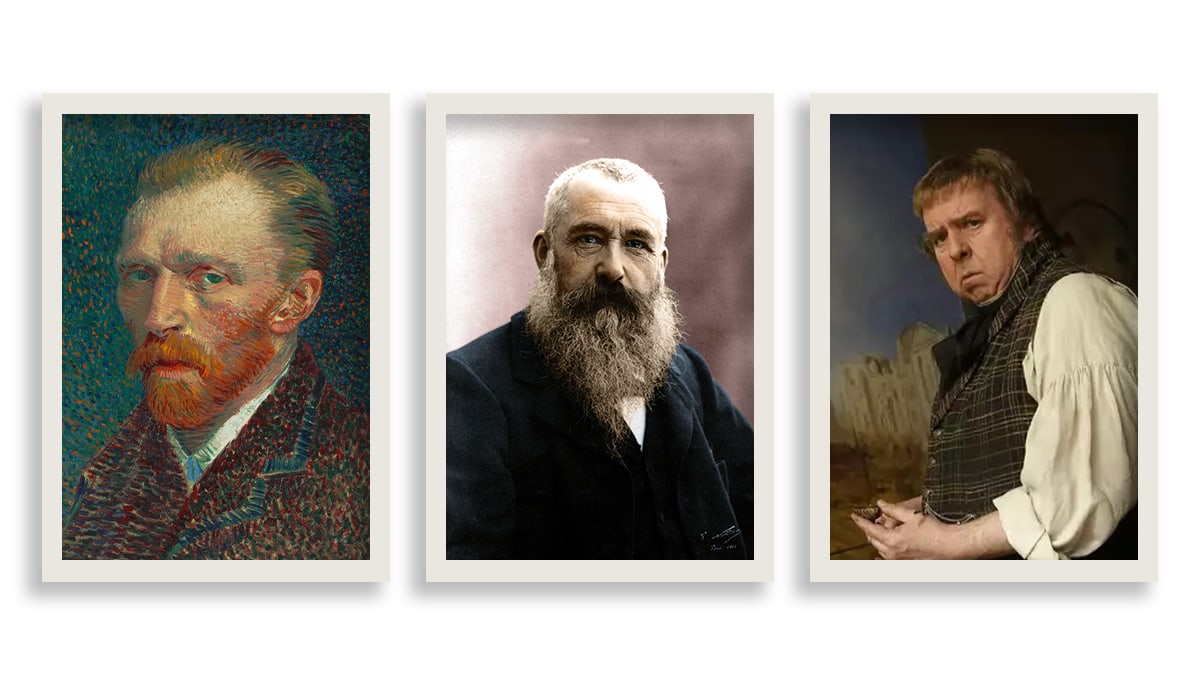
Famous Landscape Artists (from left): Vincent Van Gogh, Claude Monet, J.M.W. Turner.
Suggested Reading – Claude Monet’s Paintings
PS. – The famous Landscape paintings serve as a wonderful gift for housewarming. Although, these masterpieces were meant to be hung in museums. The same can be copied into replica art and gifted as a present.
3. Still Life
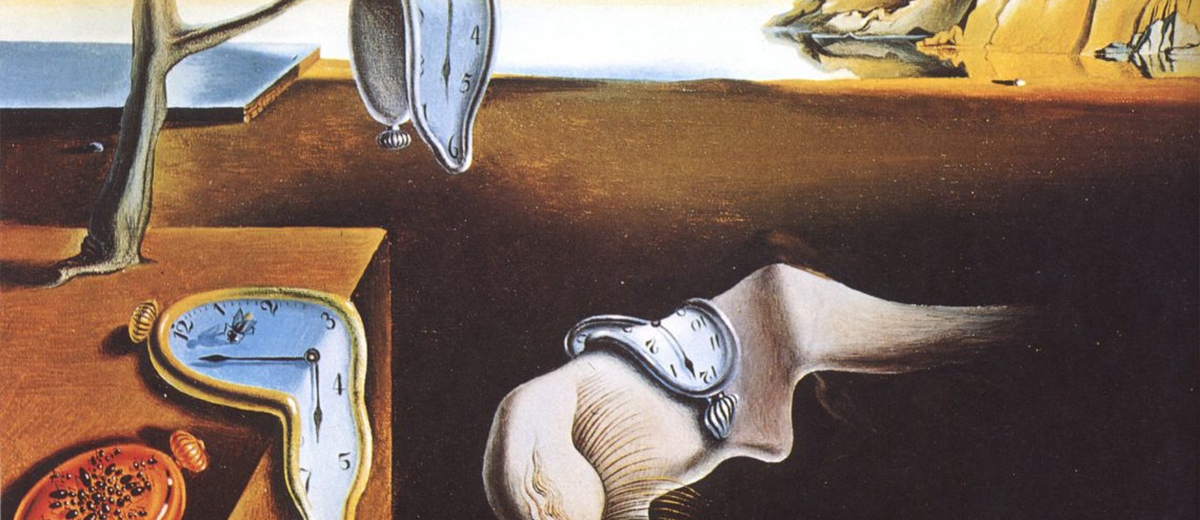
Still-life painting literally translates to a type of painting that shows inanimate objects as the subject of the painting.
Any object that is “still” and does not move is painted on the canvas, and these types of paintings are often referred to as “pieces.
Still-life paintings are mainly of 4 types –
1. Flowers and Florals
2. Banquets or Breakfasts
3. Animals
4. Symbolic Paintings, also known as Vanitas.
For people who think that these paintings are nothing but just another boring art piece do not know that these paintings are a “figure of speech” for the art world.
Most of the famous Still-Life paintings have complex narratives and are packed with evocative and emotional meaning.
Besides, still-life paintings are considered to be the perfect painting type for beginners to understand the nuances of colors, texture, and composition of elements.
And if you’re studying art academically, tools like Paperwriter can support you in writing essays, critiques, or research papers about painting techniques and history.
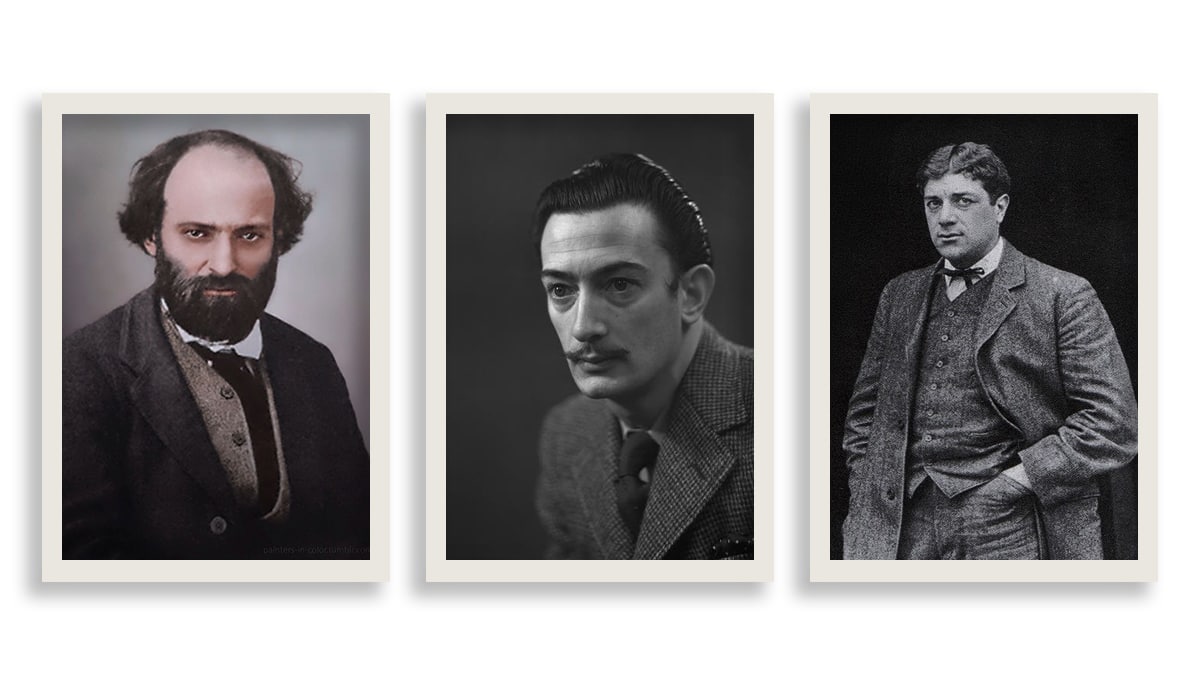
Famous Still Life Artists (from left): Paul Cèzanne, Salvador Dali, Gorges Braque
4. Abstract Painting
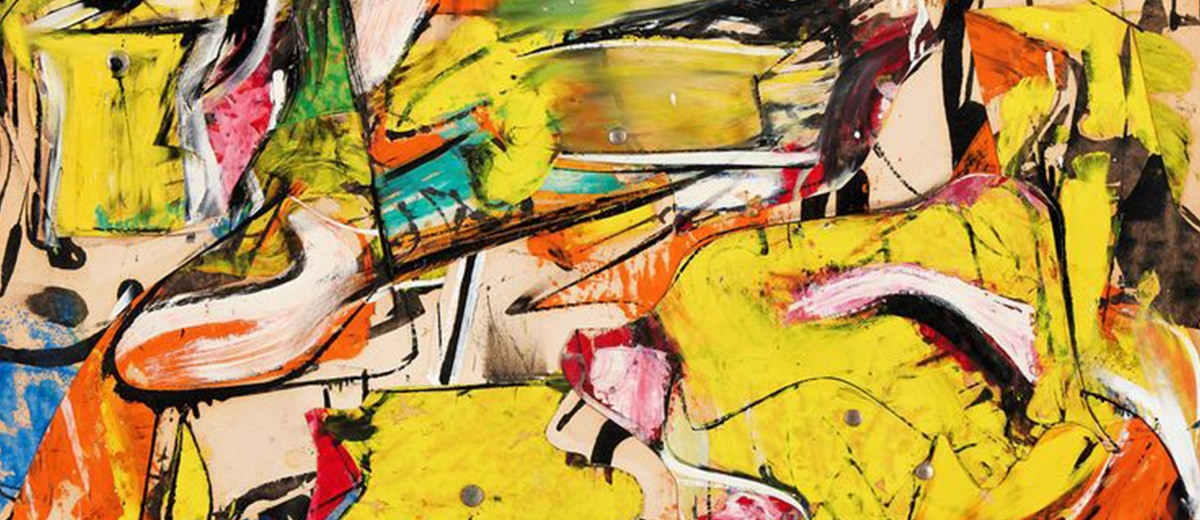
Abstract Painting is one of those painting types that does not attempt to represent an accurate reality.
It instead uses shapes, colors, forms, gestures, and sometimes geometric patterns to achieve its effect.
Abstract Painting is known to be one of the most influential movements in the entire painting history.
The attempt of every Famous Abstract Artist has remained to add a meaningful expression to a disfigured and almost shapeless painting.
Like Still-Life paintings, Abstract paintings also have different types, namely –
1. Expressive Abstraction
2. Minimal Abstraction
3. Conceptual Abstraction
4. Geometric Abstraction
5. Action/Gestural Abstraction
6. Hard Edge Painting
7. Optical Abstraction
8. Geometric Abstraction
9. Color Field Painting
While there are many aesthetes who consider Abstract art as nothing but just a couple of dots, Abstract artists stand for a really strong message.
“Abstraction of any and all elements in the eye of a human can express and evoke emotions.”
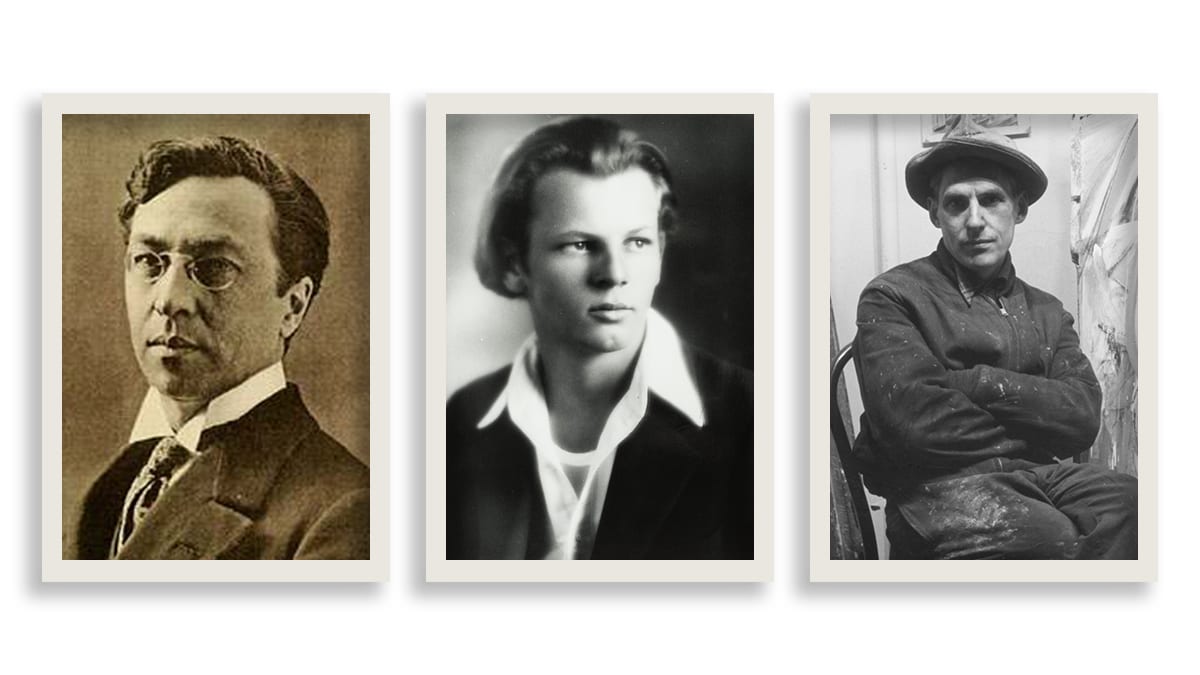
Famous Abstract Artists (from left): Wassily Kandinsky, Jackson Pollock, Willem De Kooning
Suggested Reading – Paintings by Kandinsky: The Sound of Abstract Art
5. History Painting
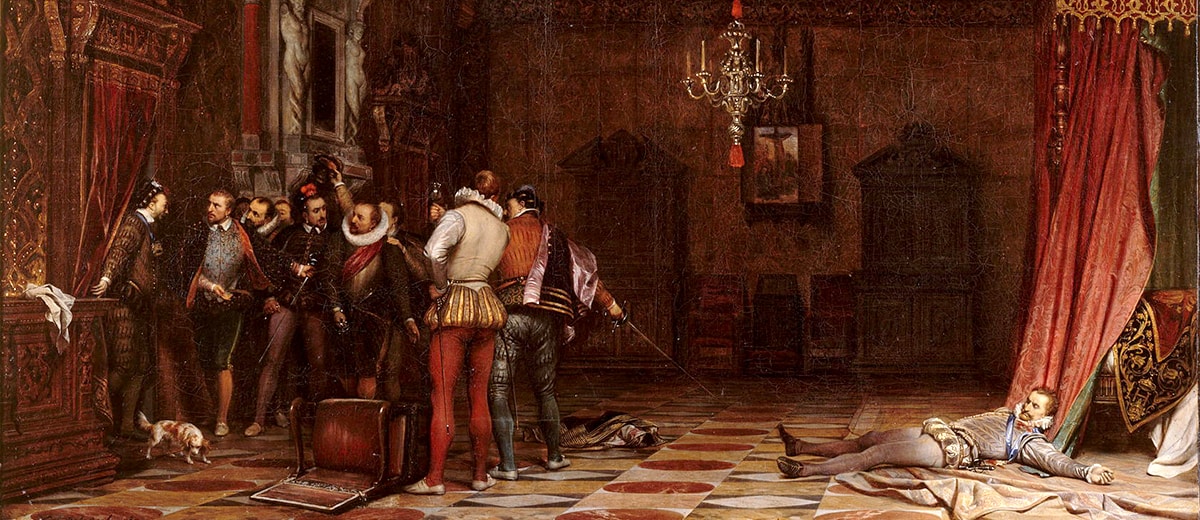
History paintings or historical paintings are mostly narratives.
These are those types of paintings that capture a historical event and the main objective of the painting remains to tell a story of a specific period.
More often than not, French Revolution, Renaissance, and Fight for Independence have been static subjects of Historical paintings.
We have seen some of the major historical events being painted on canvas like “The Declaration of Independence” and “Liberty Leading The People”.
As already mentioned, these paintings were a means to depict the period from the artist’s point of view.
There are not enough modern historic paintings but there definitely are a bunch of modern political paintings.
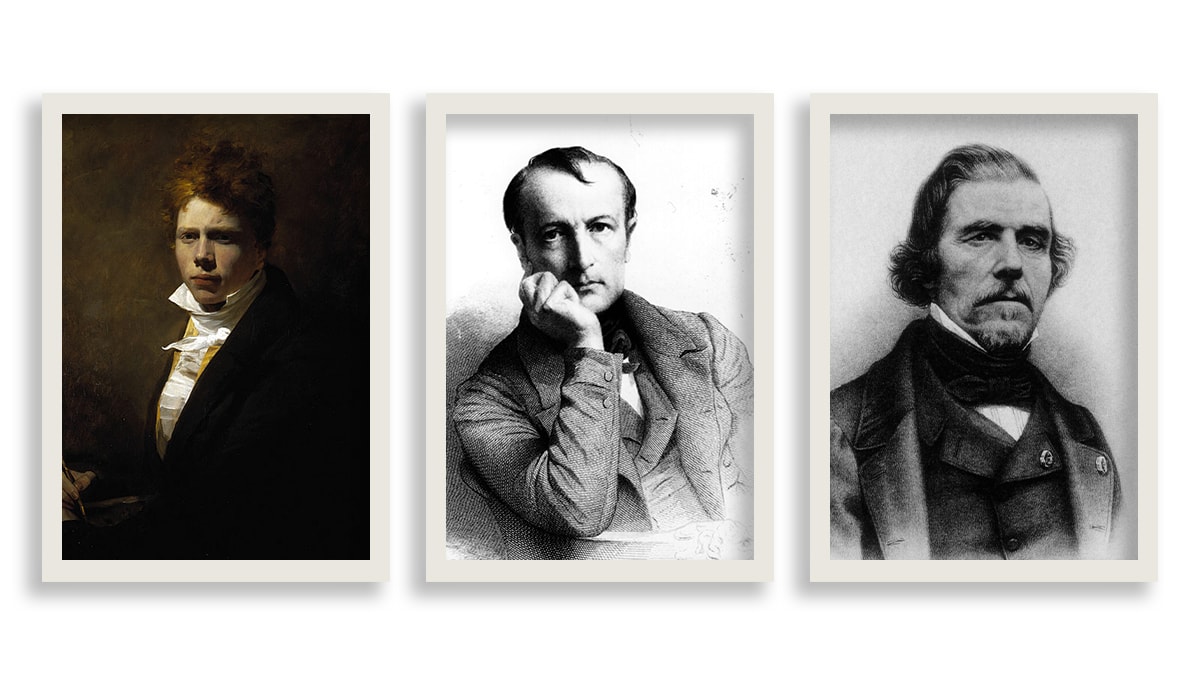
Famous Historical Painting Artists (from left): Sir David Wilkie, Paul Delaroche, Eugène Delacrioix
6. Religious Painting
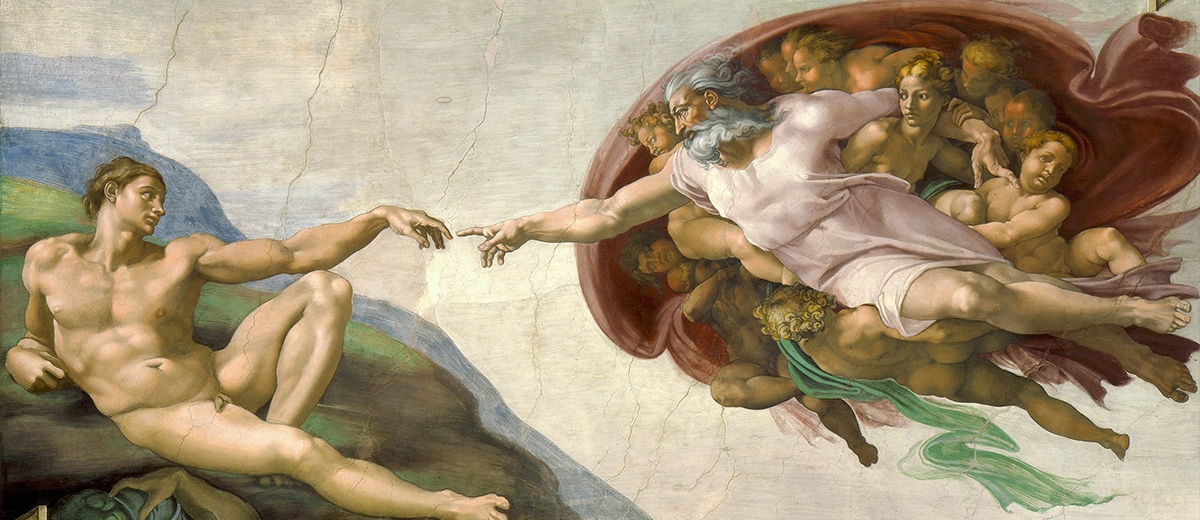
You must have come across several Religious Paintings especially when you visit Chapels. The first of the religious arts was seen in the 2nd Century in the Roman catacombs.
However, Leonardo Da Vinci’s Baptism of Christ and The Last Supper changed the look of religious paintings once and for all.
These paintings have been a clear depiction of Greek and Roman Mythology and Biblical stories.
Paintings of Jesus, mythological creatures, or paintings of religious outbursts typically started to be called Religious or Mythological paintings.
Some of them, like Michelangelo’s God and Adam painting, were an exact artistic representation of the story.
Most of these paintings were a part and parcel of the Renaissance Period and have seemingly become a part of ceiling paintings or frescoes.
We will learn more about frescoes in the later part of the blog, so keep reading!
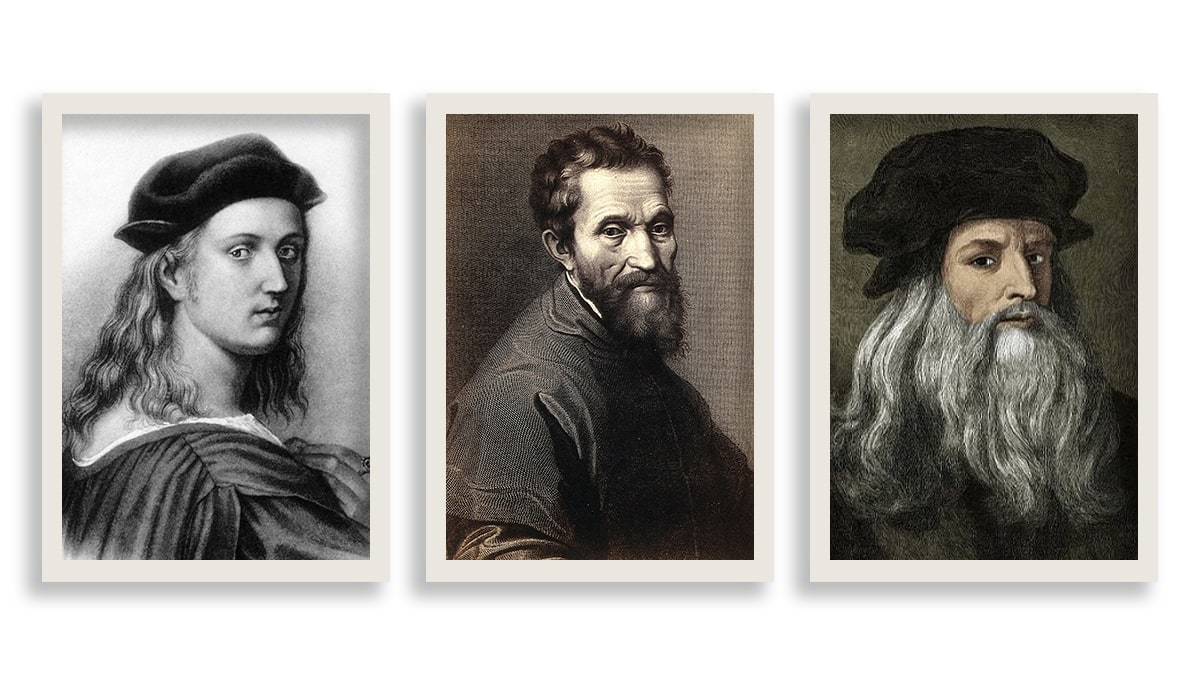
Famous Religious Painting Artists (from left): Raphael, Michelangelo, Leonardo da Vinci
Now of course, you cannot own this famous hands-touching painting, more because it is intact on the ceilings of Sisting Chapel but you can always commission a replica of the Creation of Adam.
7. Allegorical Painting
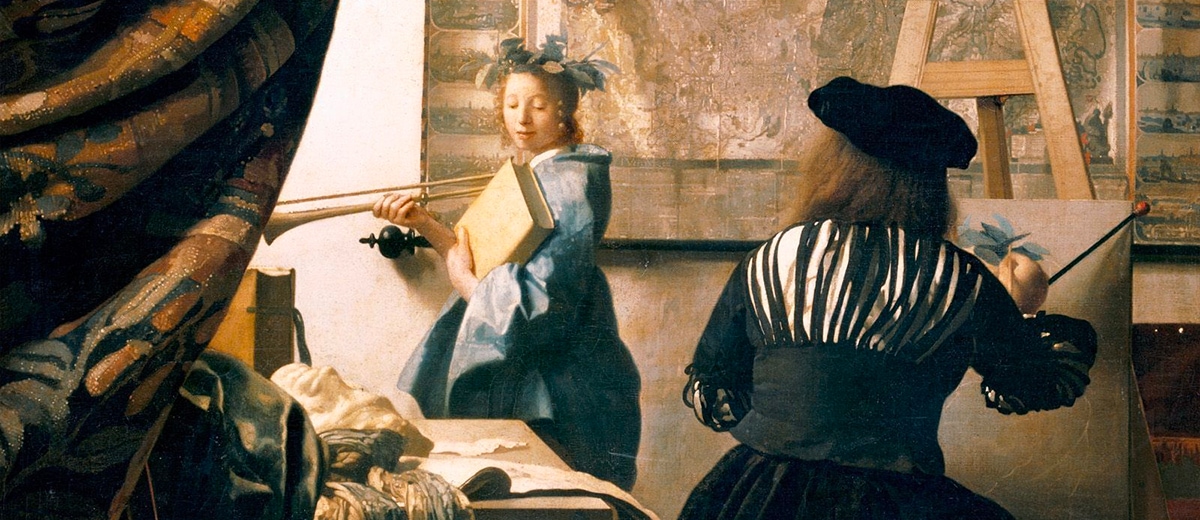
A lot similar to Religious Paintings, an Allegorical Painting type symbolizes a deeper spiritual or moral meaning.
These types of paintings mostly deal with subjects of life, death, love, virtue, justice, and the like of it.
Allegory has been used in all forms of art since ancient times, both as a literary device and artistic form.
It can be considered as a narrative or visual representation of a character or a situation that is going to unfold a hidden meaning or moral.
Primavera, one of the most famous paintings of Sandro Botticelli, is a classic example of an Allegorical painting type.
One of the key features of this painting type is that it can easily illustrate complex ideas and concepts through simplified paintings.
In modern art, allegory is defined as an art type where the depiction of narration actually means something different altogether.
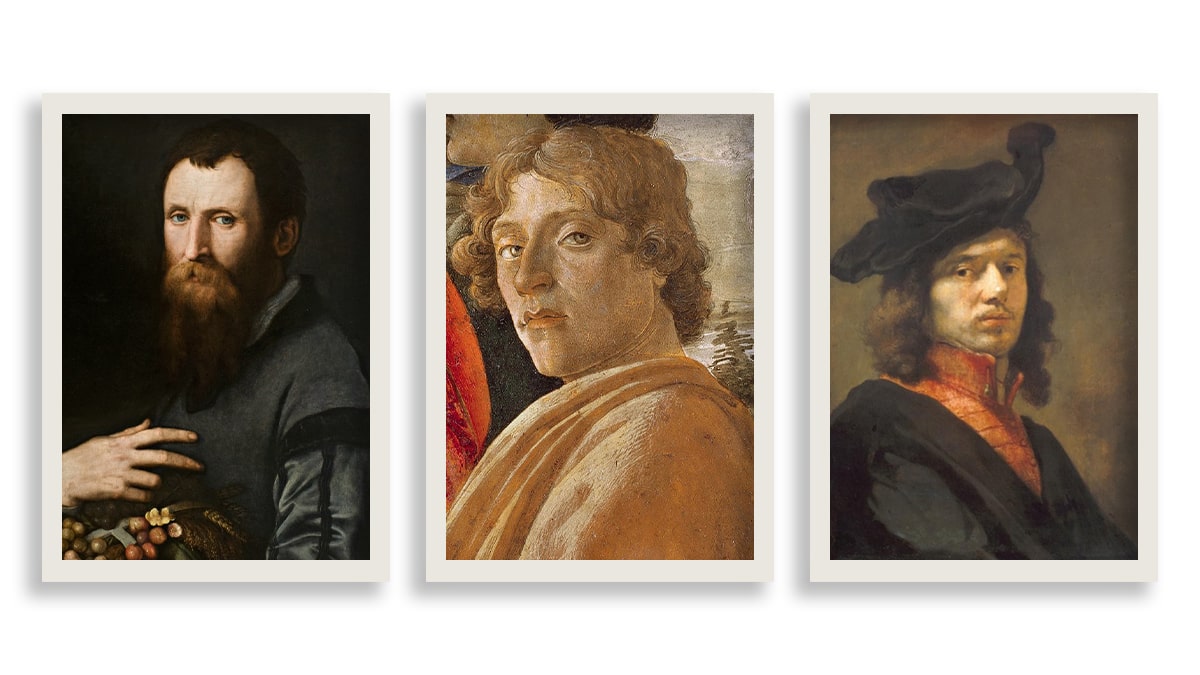
Famous Allegory Artists (from left): Bronzino, Sandro Botticelli, Johannes Vermeer
Suggested Reading – Paintings of Johannes Vermeer
11 Types Of Painting Mediums
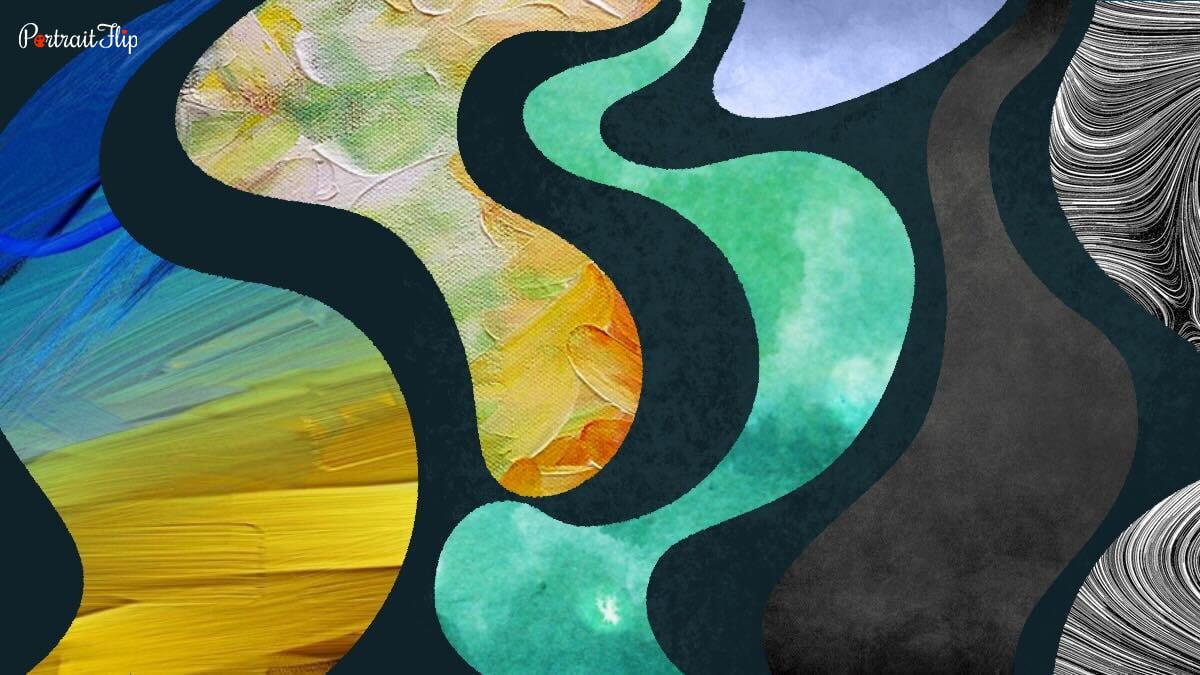
As an artist, once you have decided the type of painting you want to pursue, the next thing is to choose the painting medium type.
In the history of art, artists have been known to express their imagination through an array of artistic mediums.
But what exactly is medium in art?
A simple definition would be the element with which the artists create their works of art.
From the early natural pigments that people used to paint in caves to modern digital art, artists have learned to express themselves with the help of different art mediums.
So let me introduce you to the 10 types of painting mediums for you to choose from.
1. Tempera
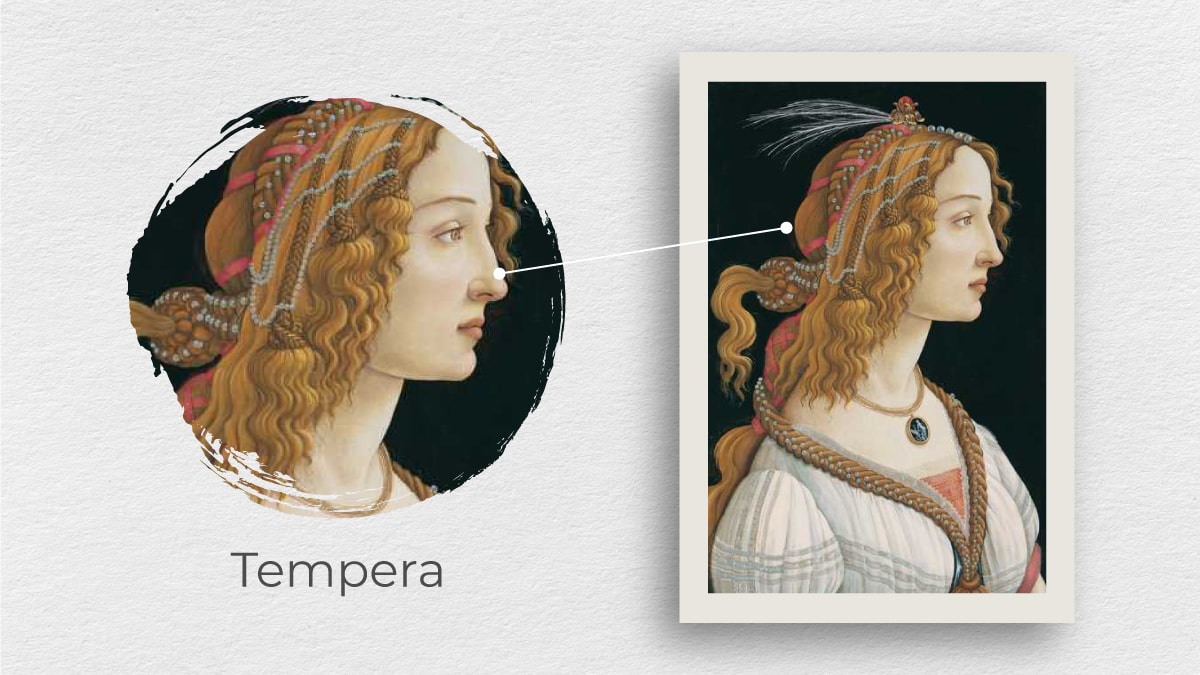
The Tempera paint definition would be easy to give if I call it Egg Tempera instead.
Quite an inquisitive name, isn’t it?
Tempera is a method in which egg yolk is combined with water and the pigments are used to paint.
This type of painting medium has been used for centuries due to its quick-drying capabilities.
In fact, some of the most distinguishable tempera paintings date back to the 1st century AD.
But most of the artists have left this art medium to pursue the next one.
2. Oil Paints

The biggest competition to Tempera painting medium has been Oil Paints which emerged mostly after the 15th Century.
Although it has a slower drying technique than Tempera, it was favorable to artists who could change their paintings easily.
The slow-drying nature allowed the medium to be vulnerable and could adapt to changes and layers of paint.
This turned out to be a dream come true who artists who were on the constant lookout to modify their paintings.
After a point of time, Oil on Canvas became the most famous type of painting medium and is used even today.
3. Acrylic Paints
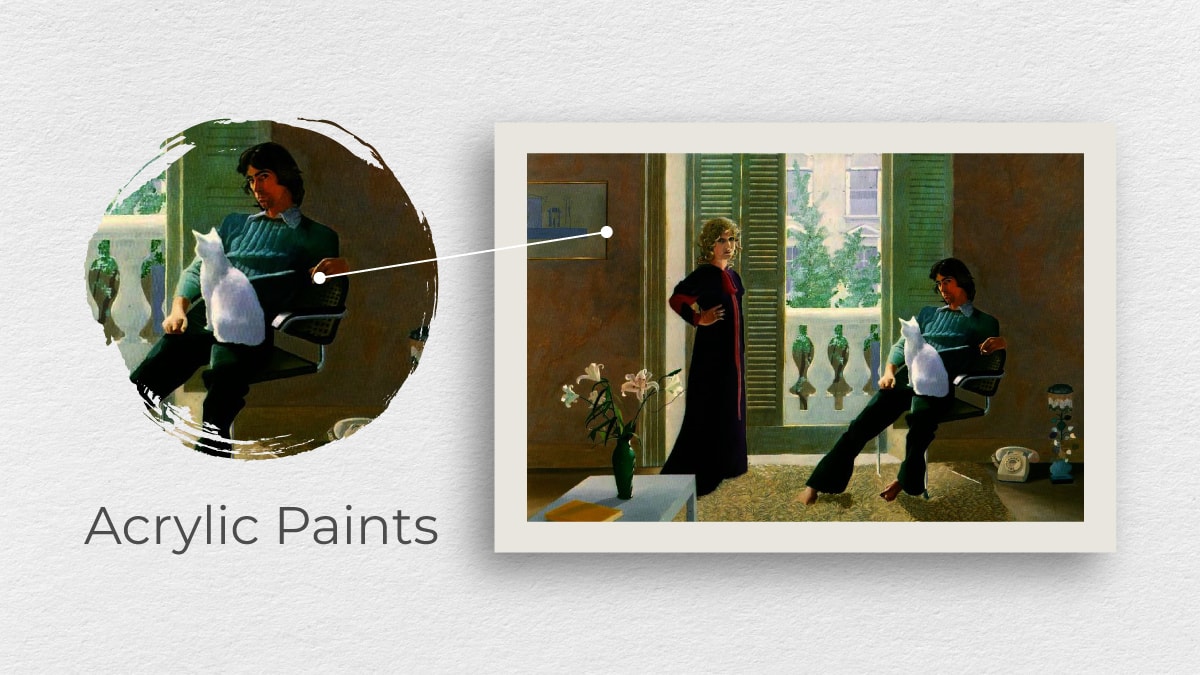
Just imagine the Oil Paints got a makeover. Acrylic Paints were almost the same as Oil painting mediums but had faster drying qualities.
In fact, Acrylic Paints in comparison to Oil Paints were more water-resistant and created an effect similar to watercolors.
All the artists had to do was dissolve the paint with a bit of water before applying.
Unlike Oil, with Acrylic artists could add layers and texture by constantly applying the paint until satisfied.
And to turn the painting matte, all they had to do was add a little more water.
However, it couldn’t beat the realism that Oil Paints created.
4. Watercolor Paints
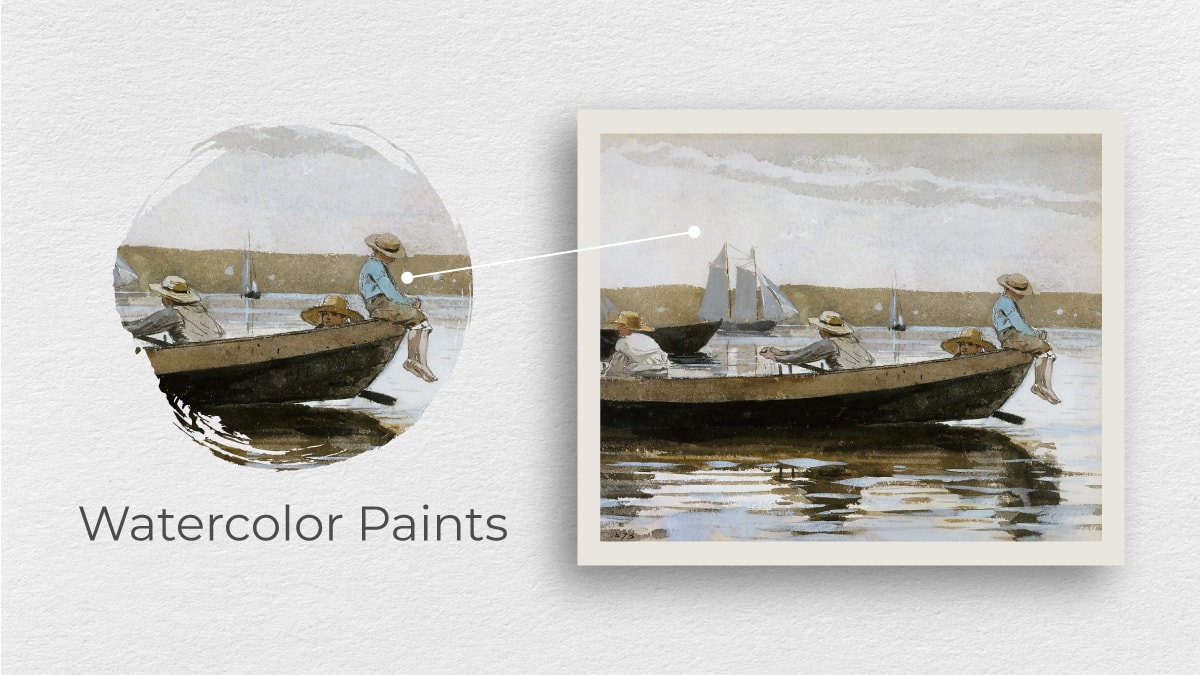
Watercolors, hugely popular for the cascading patterns, are a painting medium that can prove tricky for first-time users.
Although one can achieve great patterns with the watercolor medium, one needs to understand how to work with it.
The range of colors that watercolor can create is unbelievable but once an artist commits to the paints they choose, there is no going back.
Unlike Acrylic or Oil painting medium types, watercolor cannot be undone. You can alter it while moving ahead, but you can never go back to making changes.
This art medium has been used by a number of artists especially for creating landscape paintings due to the luminosity of the pigments.
Check out our watercolor painting gallery to see for yourself.
5. Charcoal Drawings
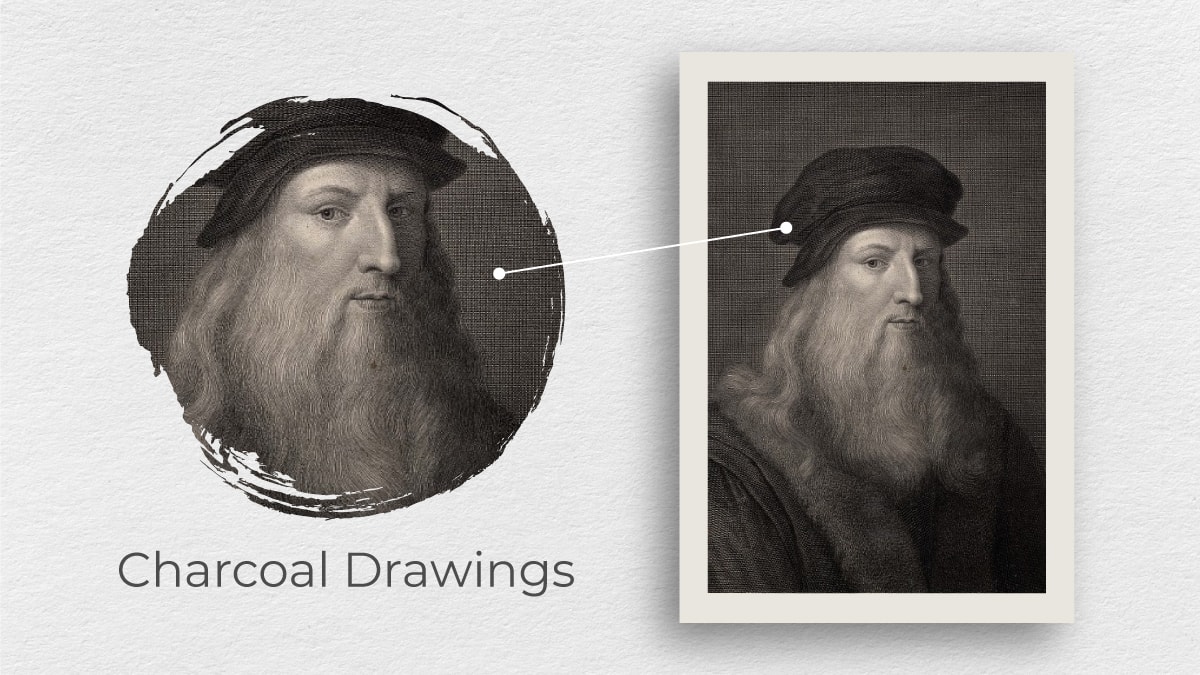
One of the oldest mediums of art, Charcoal has been an important element not just for the artists but also for the development of civilization.
It is a very readily available type of art medium throughout the ages.
This painting medium is created by binding organic charcoal powders into sticks with a wax bond.
Very few artists like Pablo Picasso could master this skillfully because the powdery nature of Charcoal could easily be erased.
With time, artists have discovered fixatives to increase the longevity of charcoal paintings.
In fact, the most famous monochromatic paintings were painted in this art medium.
6. Pastel Paintings
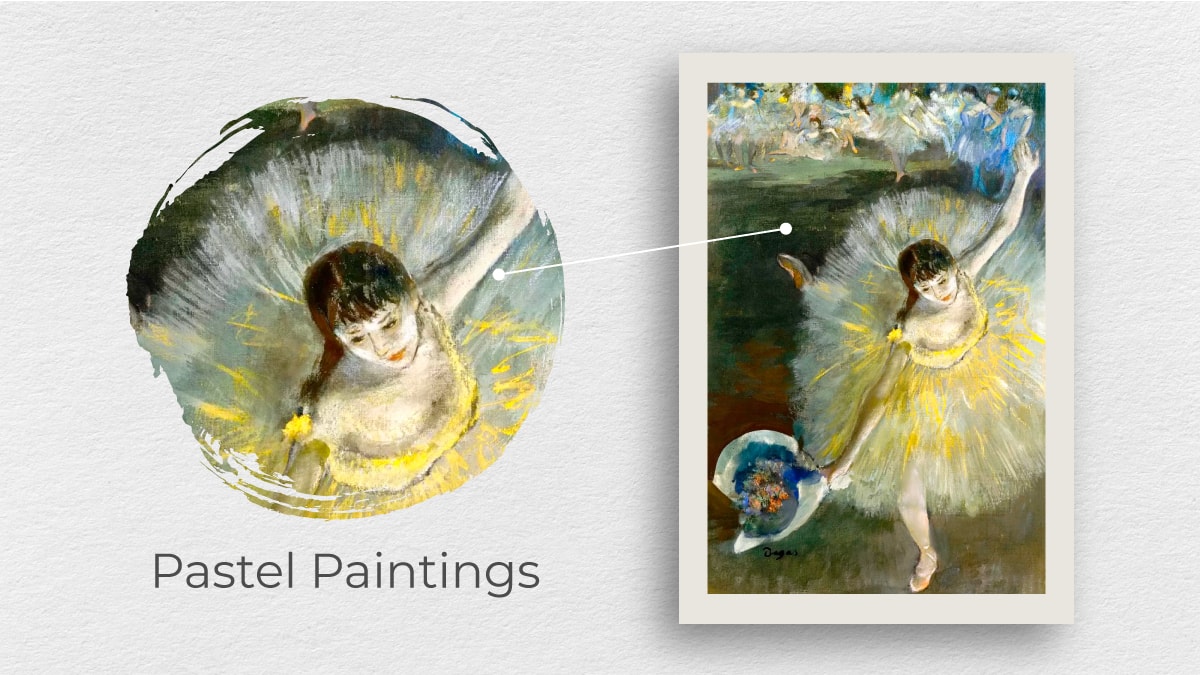
With the 18th century came a painting medium that stood as a threat to the prior mediums.
It has the perfect balance between the realism of oil, the fast drying of acrylic, and the effects of watercolor.
The pigment used is similar to oil painting and is finally created by mixing the pigments with a binding material.
Depending on whether the artist wanted softer tones or striking tones, two types of pastel painting mediums can be used.
7. Chalk

Just like charcoal, chalk has also been used as a medium for painting due to its organic content and easy availability.
Minerals such as ochre, limestone, black stone, and mica, creating colors such as sanguine, white, and black, had become convenient.
Chalk started as a medium for sketching.
However, with the advent of the Renaissance Movement, a lot of mediums, including Chalk, resurrected to become of equal importance as oil mediums.
With time it has become a friendly medium. The right techniques can help an artist create a variety of strokes, textures, saturation, and color transitions.
In fact, the eraser can instantly clear an unsuccessful art without any hassle.
In modern art, Chalk has become an infamous choice for giving furniture or home décor a rustic, vintage, and shabby-chic style.
8. Graphite Pencil
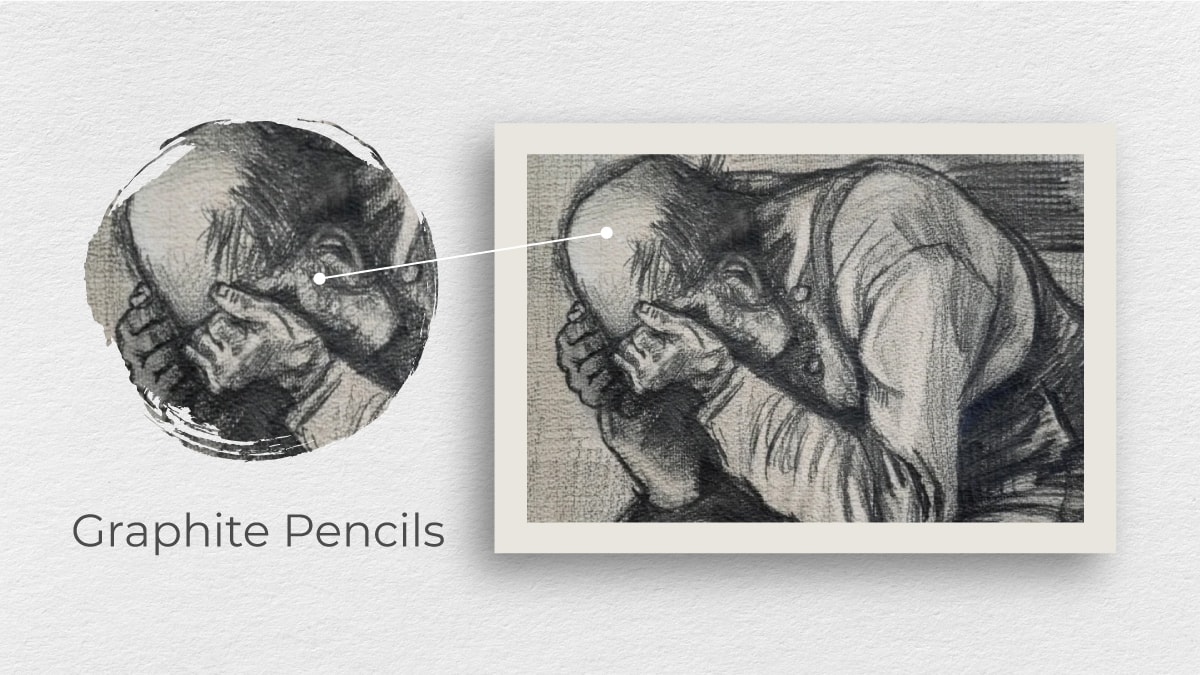
Every time one talks about Graphite Pencil, the first artist that comes to my mind is none other than the famous post-impressionist artist Vincent van Gogh.
Van Gogh has a routine of sketching all his artworks with Graphite Pencils before converting them into oil on canvas.
The first use of this painting medium was witnessed in France during the 17th Century.
These pencils have been known to be a great medium for creating outlining compositions, creating sketches, or even applying shading to your work.
Its dark and soft nature allows an artist to add depth and vibrancy to the sketch.
Graphite Pencils are a great medium for beginners as they can easily be edited by erasing. In fact, it does not even leave a mark like charcoal on the paper.
So beginners can conveniently correct and re-draw until they reach their desired results.
9. Colored Pencil
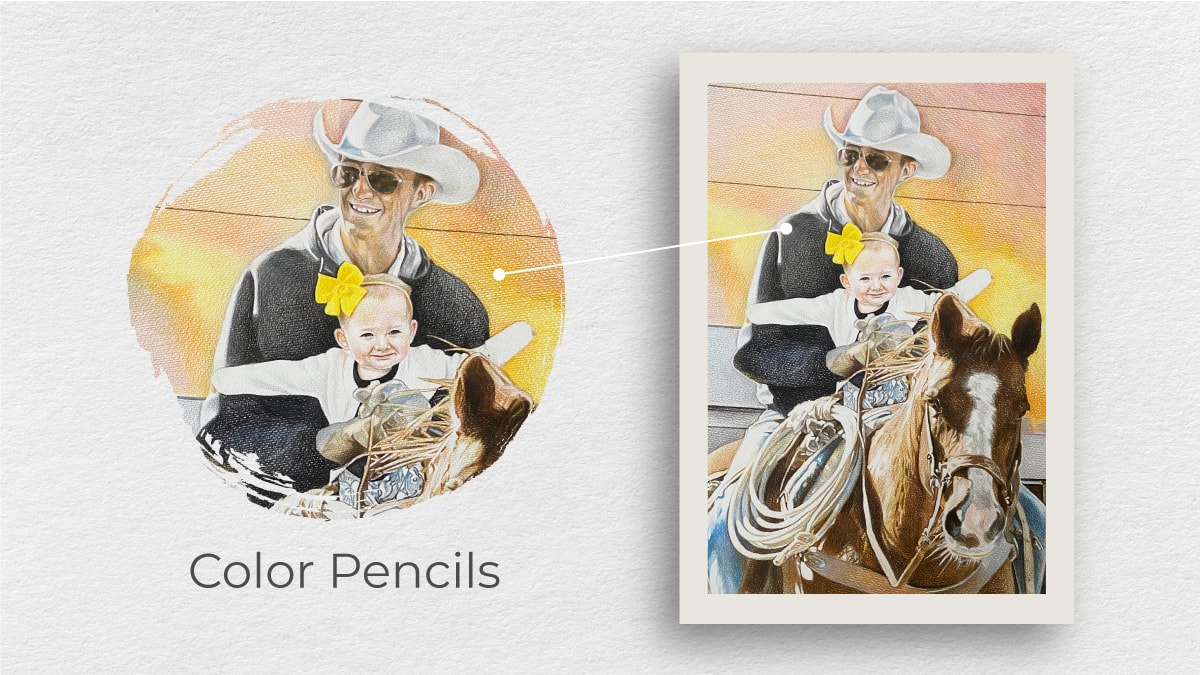
A rather modern phenomenon, the Colored Pencil painting medium is commonly used in art classes to transition to a newer medium.
Not only is this medium a great way to level up your skills, but it is also a wonderful painting medium to create professional artwork.
It gives you a starter experience of how it would feel like painting colored mediums that are comparatively harder to rectify.
With strokes just like a pencil or graphite pencil, colored pencil medium can be so much more.
One can create simplistic line art, or one can create highly detailed and expressive works of art which almost appears photorealistic.
The sky is the limit with this one!
10. Ink and Pen
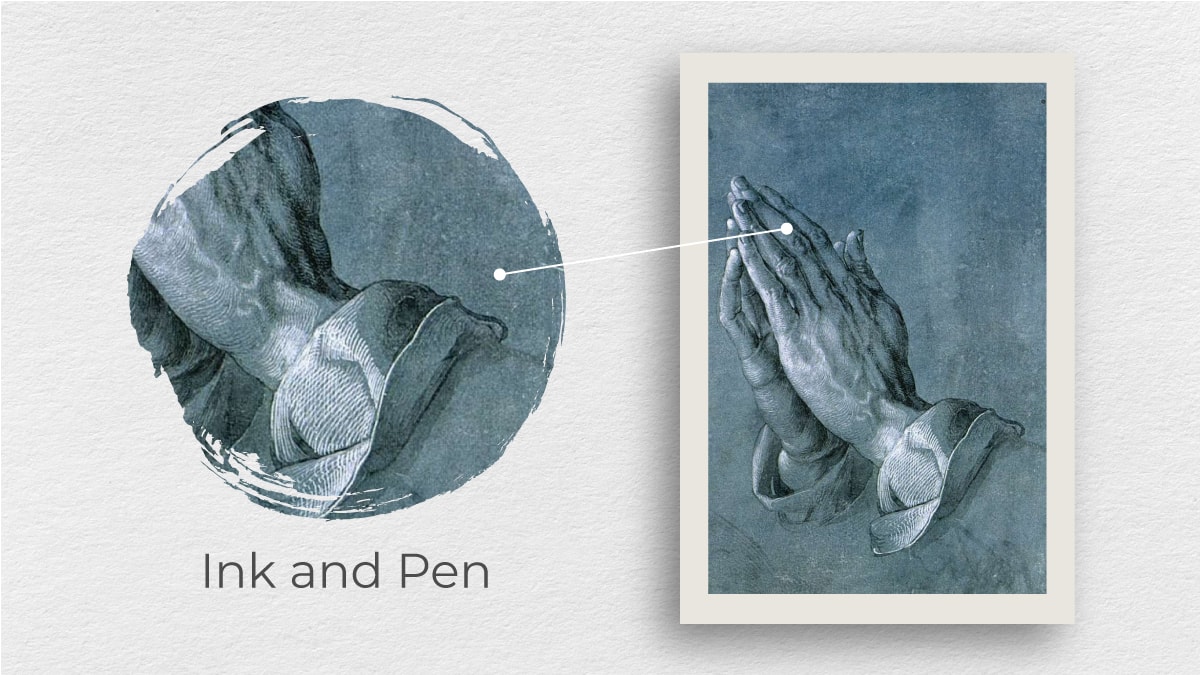
If one can use pencil, graphite, and chalk to paint, why leave ink behind?
But this painting medium is actually not how modern it sounds to be.
One of the first ink and pen sketch was made by our very own Leonarda Da Vinci.
Do you remember Da Vinci was the same person who drew Human Anatomy? Well, some diagrams of the sketchbook were actually drawn in red chalk and retouched with pen and ink!
For centuries, ever since, ink has become a great way of creating solid outlines that cannot be erased.
This painting medium makes it easy for artists to trace the outline and add all the required details without any concern of fading.
Ink and pen have been used to create intricate graphic art as well as text art such as calligraphy.
11. Three-Dimensional Art Mediums
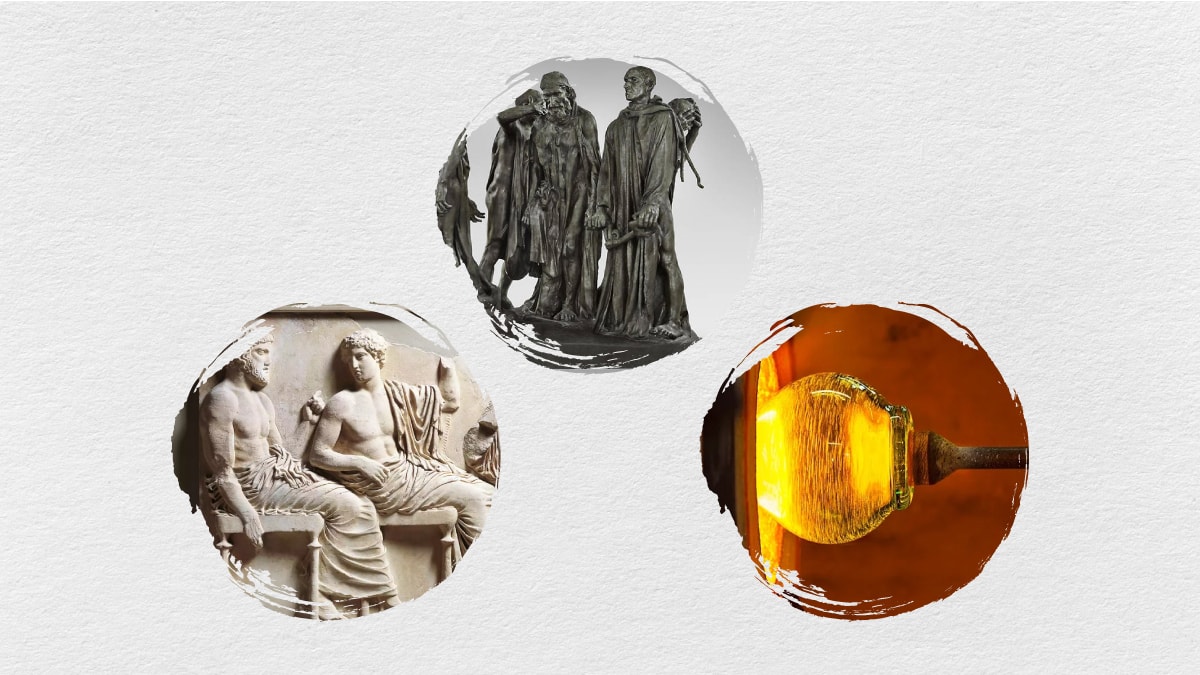
There are methods that are used to create three-dimensional artwork. Some artists create art by carving it into stone or wood, while others mold or construct them.
Carving and casting are done on solid objects. The techniques smoothen the solid object and then it is carved into the desired shape. Most of the wooden statues and stone sculptures that we see in museums are a part of it.
Modeling, on the other hand, is the use of softer materials like plaster and clay to shape it into an artwork. Pottery and terracotta models are made with this art medium.
Construction, unlike the rest mediums of art, incorporates restructuring an existing material into a new art piece altogether. Glass artists use this method for glass blowing and molding. This is a work of skill, and only a few artists achieve it.
So this is pretty much was painting mediums and their types are.
This brings us to the next most important part of the article –
You guessed it!
All Types Of Painting Styles
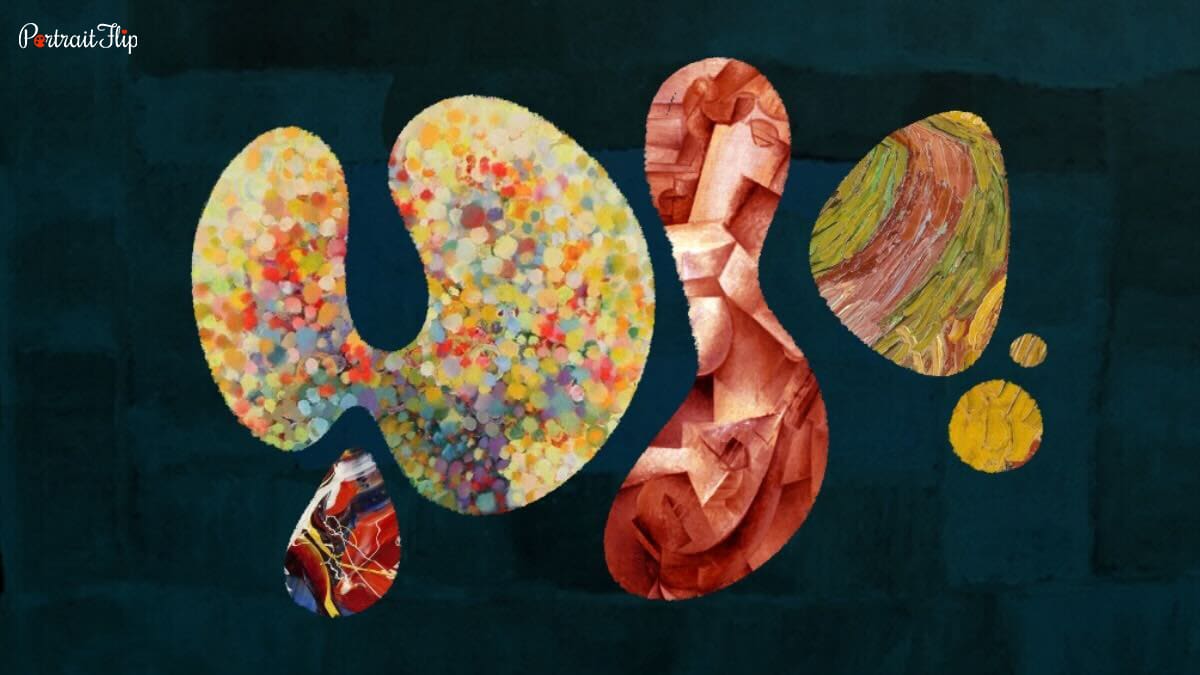
Now that you know the kind of painting medium you want to proceed with, it will bring you to the next big question.
What type of painting style should you choose?
Painting styles are categorized according to the art movement that the style belonged to.
In order to select the correct style of painting, you must understand each era of painting and its characteristics.
The best part is that a painting can be classified into an era just by looking at its painting style.
Some are hard to miss as the painting style classifies and represents that particular movement.
There are more than 75 types of painting styles in art today. Now, of course, it is almost impossible to adapt all these styles.
It is also almost impossible for me to point each one out.
But we will definitely include the most important painting styles that have ever existed since the emergence of art!
Here’s your painting styles list.
1. Renaissance & High Renaissance Art (1400 – 1600)
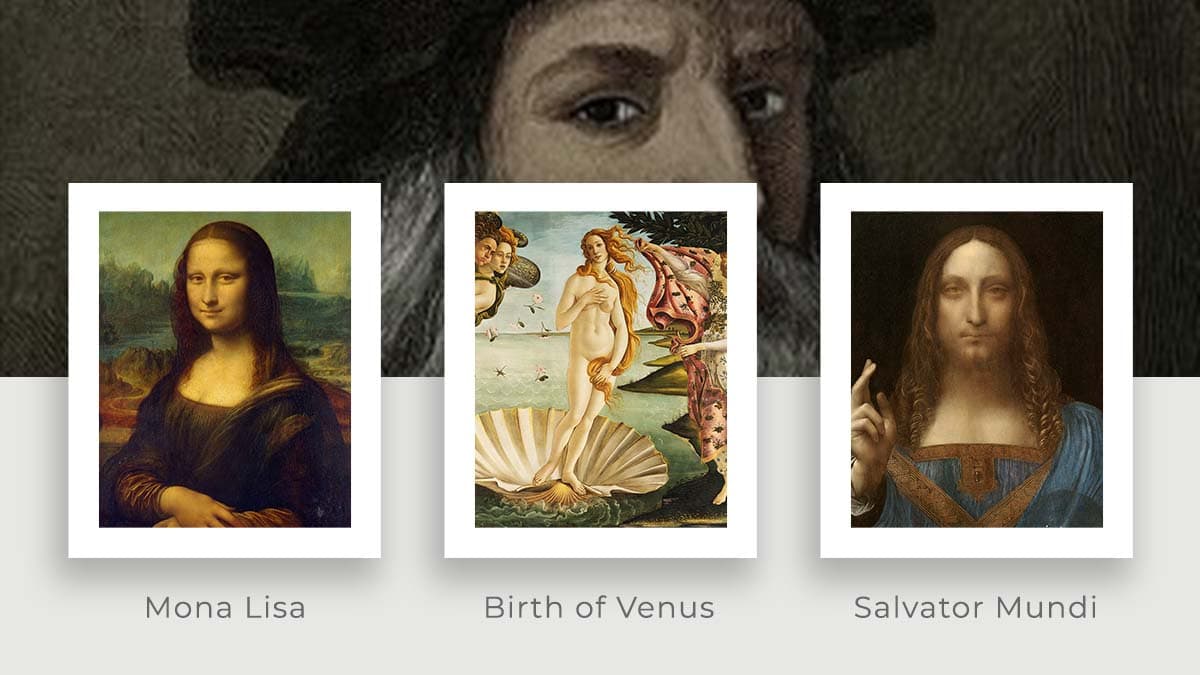
Famous Renaissance Artists: Leonardo Da Vinci, Michelangelo, Raphael
Famous Renaissance Painting: Mona Lisa, The Last Supper, Birth of Venus
Renaissance or rebirth was rightly named because of the renewed interest in ancient Greco-Roman culture.
The Renaissance art style showed a gradual shift from the abstract forms of the medieval period to individualism.
This art movement gave birth to art techniques like foreshortening, sfumato, and chiaroscuro, which you will be reading about in this blog later.
The initial Renaissance phase mostly saw bits and pieces happening across Italy and France. Artists and writers were mostly concerned with the plague and war, and its influence was evident in the early Renaissance intellectual.
High Renaissance art flourished about 35 years from the early Renaissance and saw three towering figures: Leonardo Da Vinci, Michelangelo, and Raphael.
Each of these three held a torch for the period through their art and expressions of classical spirit.
2. Mannerism (1527 – 1580)
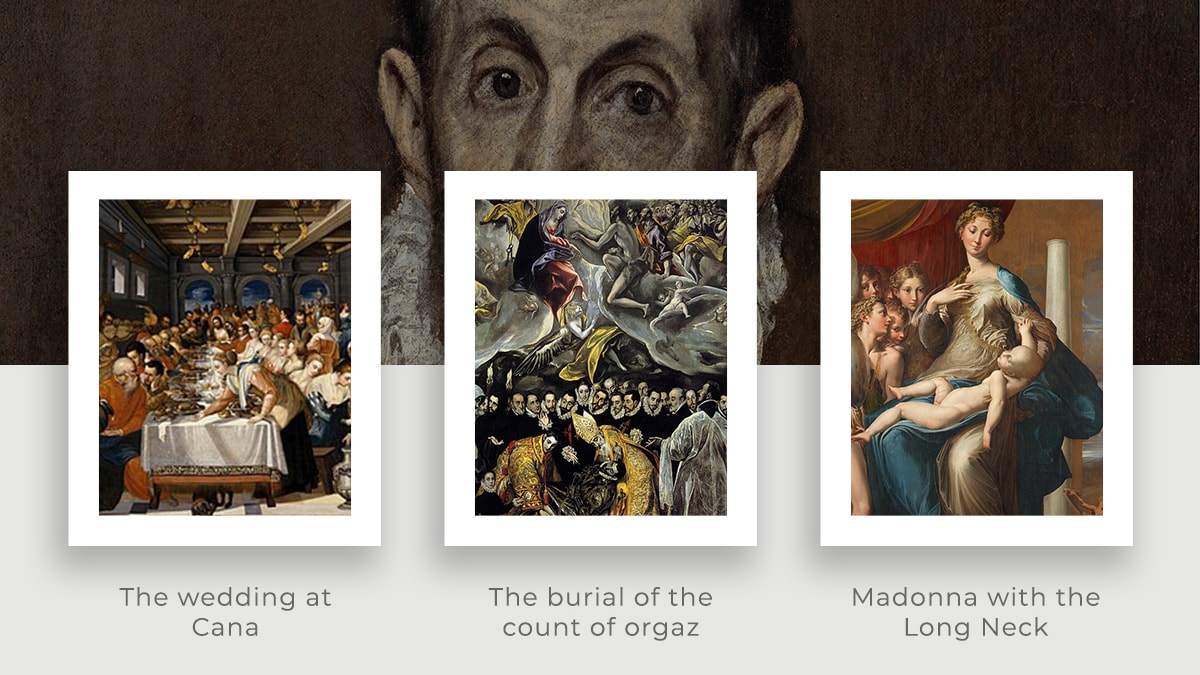
Famous Mannerism Artist: El Greco, Paolo Veronese, Daniele da Volterra
Famous Mannerism Paintings: The Wedding at Cana, The Burial of the Count of Orgaz, Madonna with the Long Neck
Mannerism, more than a style of art, was a reaction to the harmonious ideals that were set by Renaissance artists.
Characteristics like proportion, balance, and ideal beauty were the most important factors that mannerism artists worked upon.
This art style is distinguished by artificiality, elegance, and sensual distortion of the human figure.
The subjects were worked upon with grace but had queerly elongated limbs, small heads, and stylized facial features, while their poses seemed difficult or contrived.
If we closely look at Raphael’s paintings of his later life, we can see a hint of mannerism art style.
Even today, this art style continues to be debated.
3. Baroque (1600 – 1750)
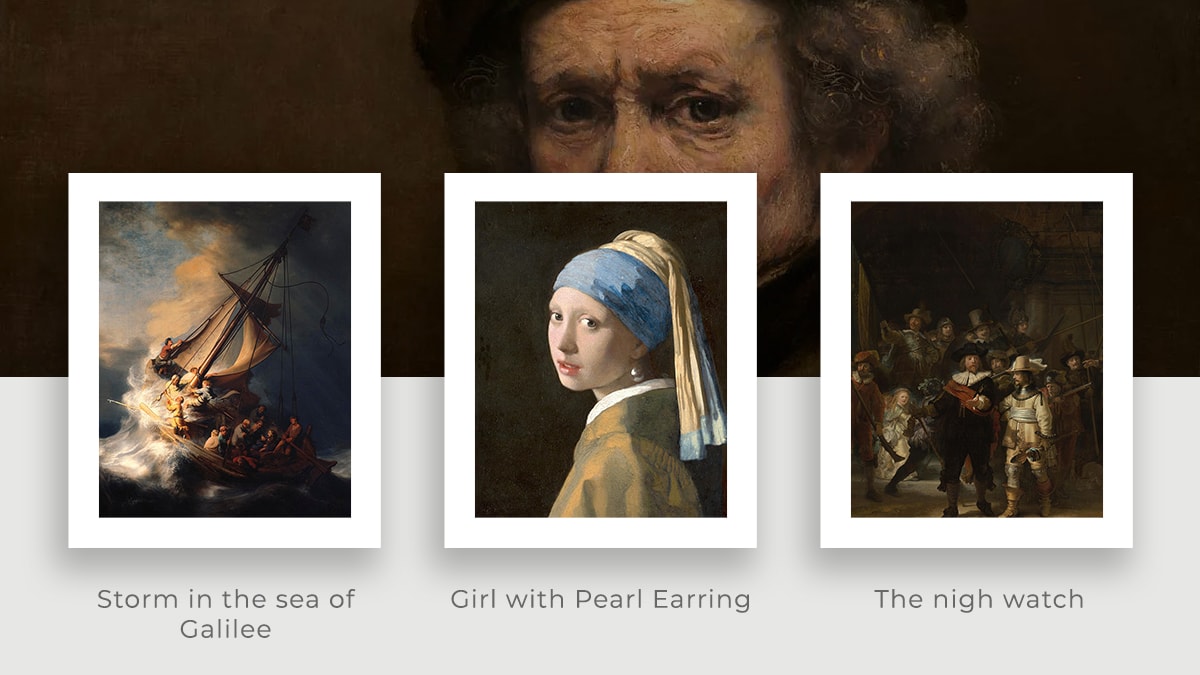
Famous Baroque Artists: Rembrandt, Caravaggio, Johannes Vermeer
Famous Baroque Paintings: Girl with a Pearl Earring, Las Meninas, The Night Watch
The baroque painting style was one of the most celebrated styles of art.
It was distinguished by self-assurance, dynamism, and a realistic approach to representation.
This type of painting style has frequently been described as strange or uneven because of its flamboyant inconsistencies.
The baroque painting style is eminent by the drama, deep colors, theatrical lights, sharp shadows, and dark backgrounds in the painting.
While Renaissance art aimed to highlight calmness and rationality, Baroque artists emphasized chaos and tension.
Baroque paintings were often a representation of a moment preceding an event of high importance instead of its occurrence.
4. Neoclassicism (1865 – 1895)
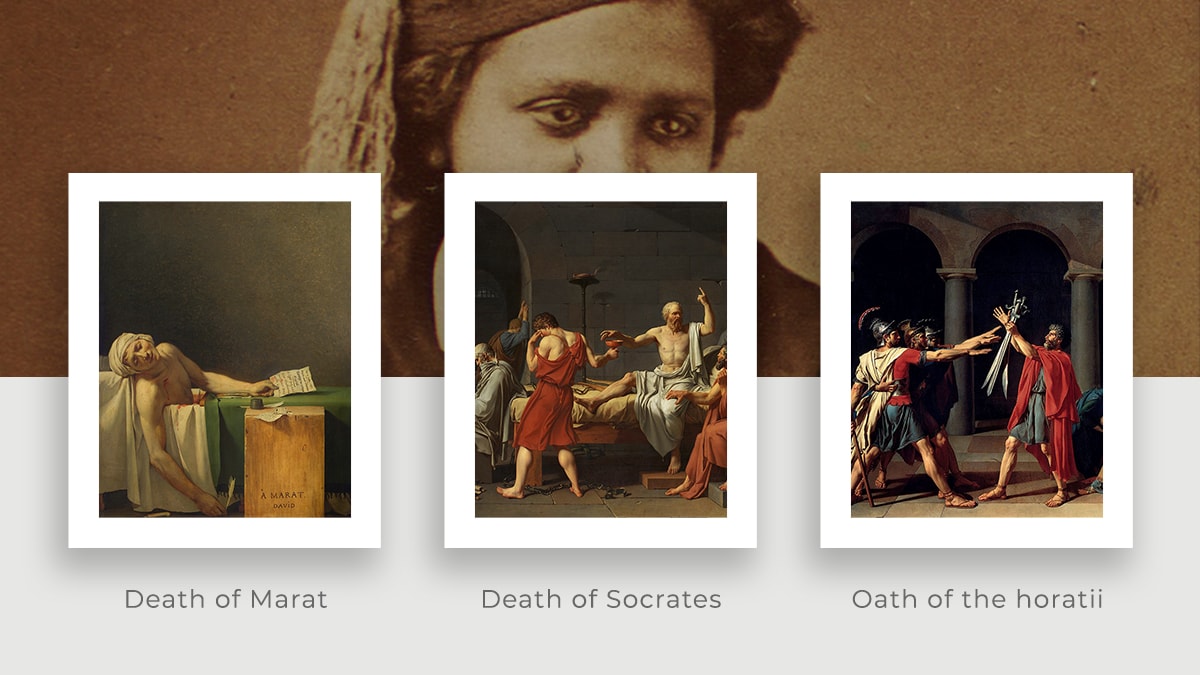
Famous Neoclassical Artists: Edmonia Lewis, Antonio Canova, Jacques-Louis David
Famous Neoclassical Paintings: Death of Marat, Death of Socrates, Oath of the Horatii
In literature and art, the Neoclassical Era was a Western cultural movement that greatly took the form of an emphasis on austere linear design in the depiction of Classical themes and subject matters.
The neoclassical paintings brought about a general revival in classical thoughts that mirrored the then-on-going political and social landscapes.
The core belief of Neoclassical painters was that art should express the ideal virtues in life and should aim to improve the viewer by imparting a moral message.
Out of all the different painting styles, this art style was a response to the excessive frivolity and opulence of the Baroque art style.
This style was defined by the use of shallow space and uniform and strong lines.
It had dark and muted colors, more obvious brush strokes, and unambiguous forms to portray moral depictions of self-sacrifice and self-denial.
5. Romanticism (1780 – 1850)
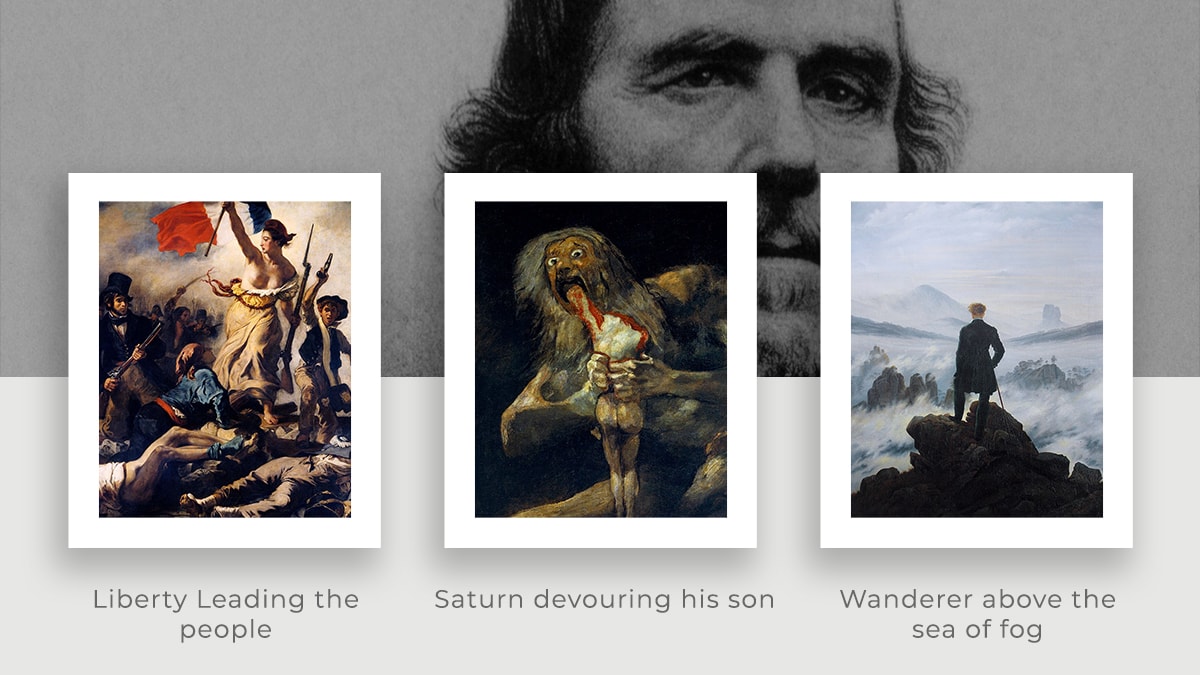
Famous Romanticism Artists: Francisco Goya, William Blake, Eugène Delacroix
Famous Romanticism Paintings: Liberty Leading the People, Saturn Devouring His Son, Wanderer above the Sea of Fog
Artists of the 19th century started giving importance to emotions and imagination.
Suddenly, art became the background and the artist the foreground of the canvas.
This gave birth to the most creative movement of art, Romanticism.
Artists of Romanticism rejected the style and notions of Neoclassicism and believed that art was supposed to be a representation of the artist’s emotions.
This art movement started as a response to the principles of harmony, order, and idealization that marked the previous art style.
The artworks produced during Renaissance emphasized how vital sensations and emotions were as crucial as balance and logic.
6. Realism (1848 – 1900)
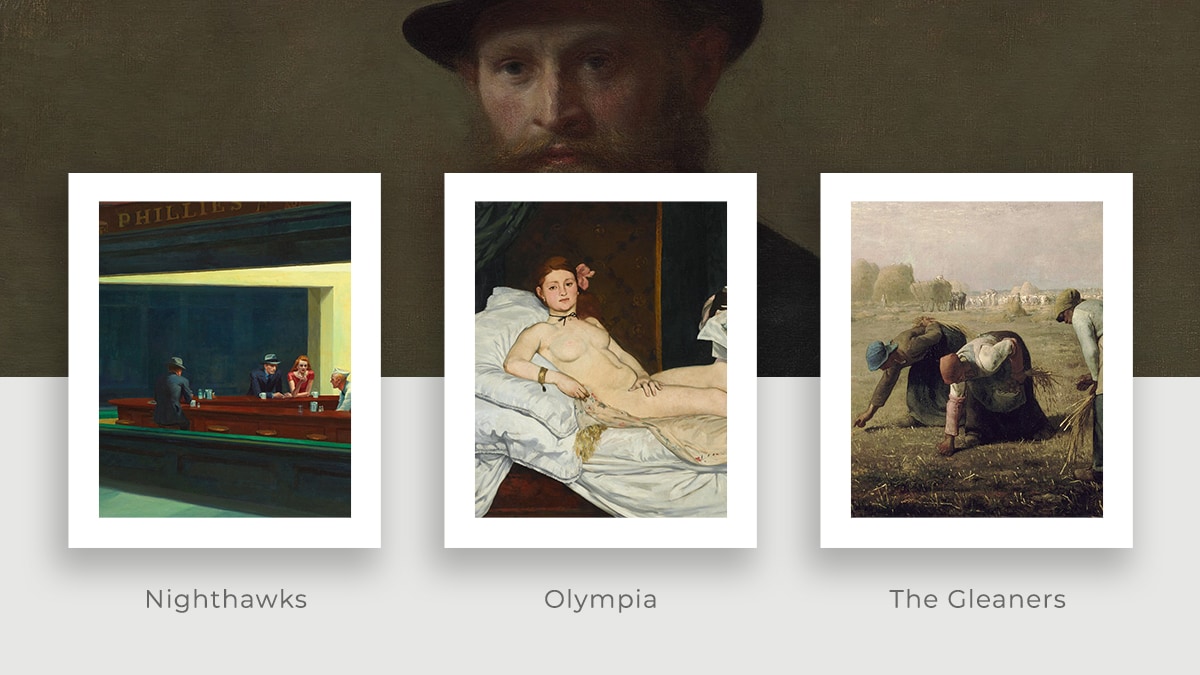
Famous Realism Artists: Édouard Manet, Edgar Degar, Rosa Bonheur
Famous Realism Paintings: Nighthawks, Olympia, The Gleaners
Realism art style existed to represent the world honestly through art.
Its main object was to paint the world as given to us.
They rejected Romanticism’s heightened emotionalism and exaltation of the past.
The realist painting style exposed topics and situations that were shunned and deemed inappropriate.
It was to bring out the reality of humans.
It portrayed stark nudes, the struggle of the working class, harsh labor, and the depiction of the solitariness of the individual in contemporary society.
Realism art included photographic accuracy, focus on contemporary subjects and settings, the use of detail, the use of color, and heightened attention to everyday life.
With these controversial depictions, the realism art style shook the art world
7. Impressionism (1865 – 1895)
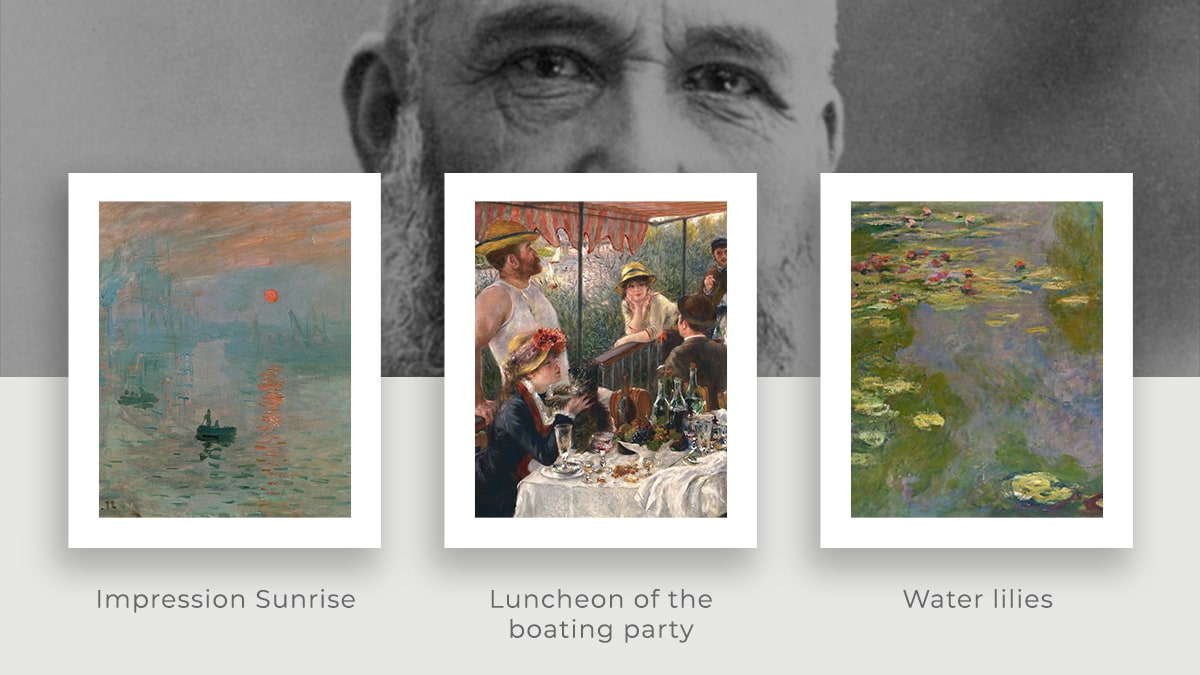
Famous Impressionist Artists: Claude Monet, Pierre-Auguste Renoir, Camille Pissaro
Famous Impressionist Paintings: Luncheon of the Boating Party, Impression Sunrise, The Large Bathers
Impressionism style includes small, visible brushstrokes that offer the bare impression of the final subject.
It has unblended colors and a strict emphasis on the accurate depiction of natural light.
The practice of painting outdoors and spontaneously “on the spot” rather than in a studio from sketches is the foundation of impressionism.
The impressionist artists painted on canvas from far away with the objective of capturing the details in clarity.
Landscapes and ordinary scenes were the primary subjects of impressionism.
8. Post-Impressionism (1886-1905)
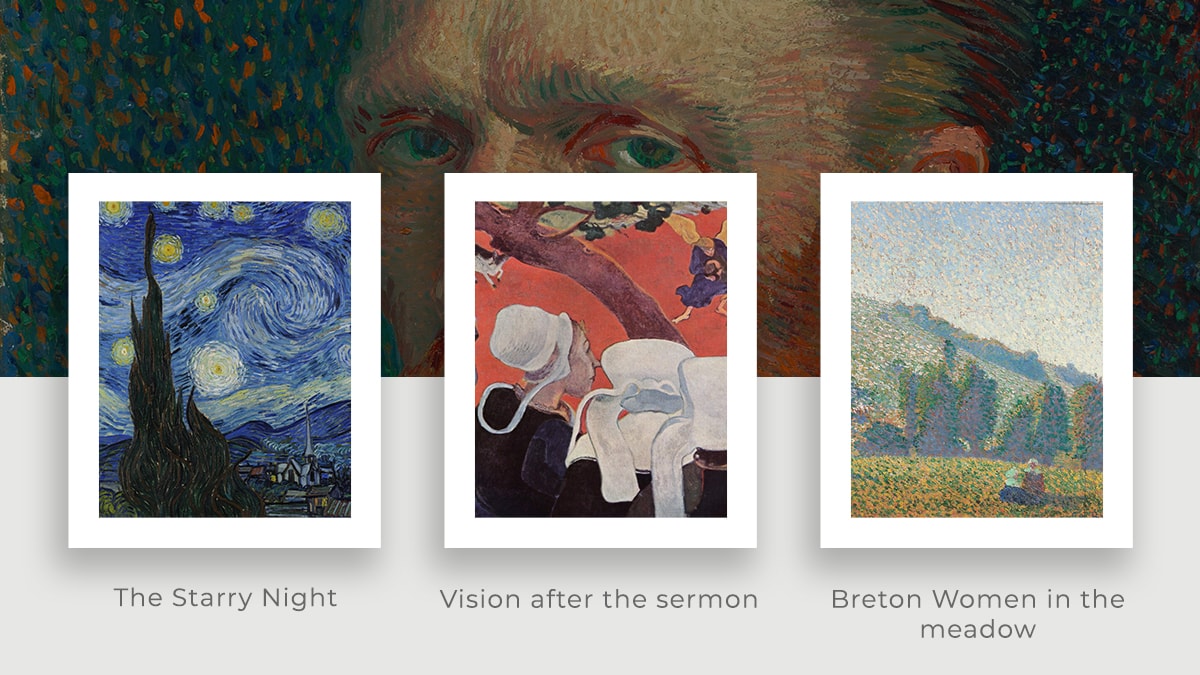
Famous Impressionist Artists: Vincent van Gogh, Paul Gauguin, Paul Cèzanne
Famous Impressionist Paintings: The Starry Night, Vision after the Sermon, Breton Women in the Meadow
A predominantly French style of art, Post-Impressionism was the beginning of modern art.
It was a differentiation yet a continuation of the Impressionist style of art.
Post-impressionist artists followed pretty much the same patterns as the impressionist but unlike their ancestors, they focused furthermore on the artist’s individual viewpoint.
The portrait style often used broken colors with short brush strokes.
The use of unnatural colors to convey emotions became a predominant style of painting.
In fact, it was post-impressionism that gave birth to Symbolism, Pointillism, Primitivism, and several other ways of painting.
If it wasn’t enough, it was due to Post-Impressionism that movements like Cubism and Surrealism could ever make it to this list.
9. Pointillism [Divisionism] (1880 – 1981)
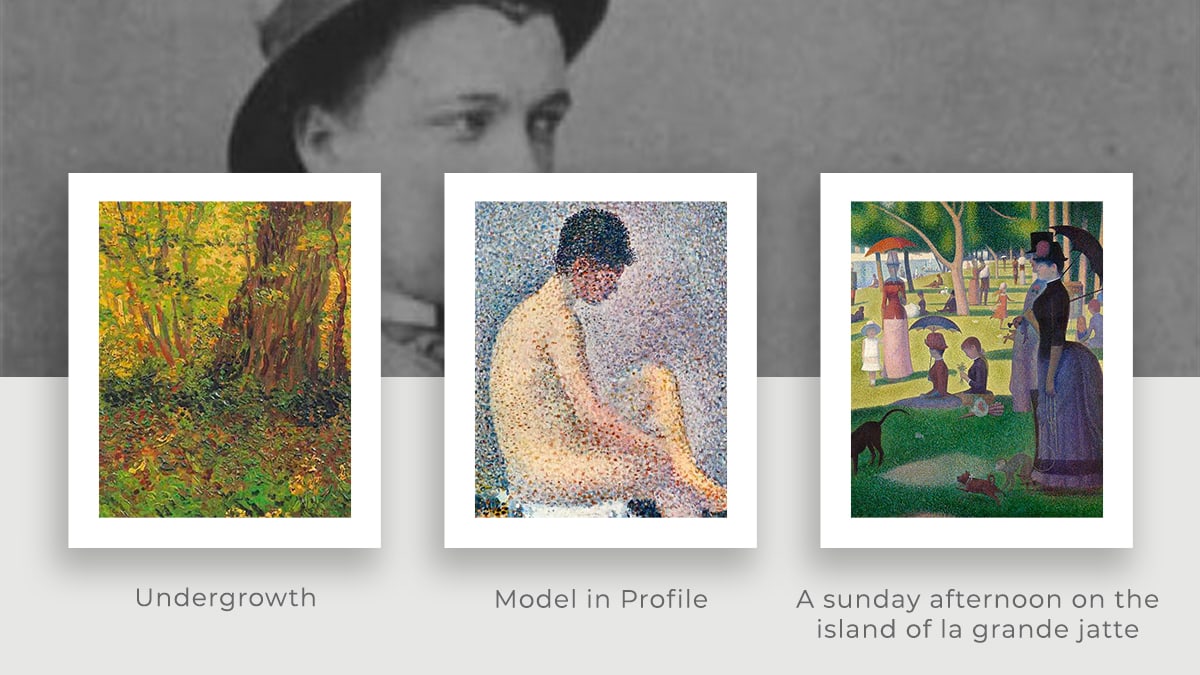
Famous Pointillist Artists: Georges Seurat, Paul Signac, Vincent van Gogh
Famous Pointillist Paintings: A Sunday Afternoon on the Island of La Grande, Undergrowth, Model in Profile
The Pointillism art movement was a branch of the post-Impressionist art style. Its name was derived as a mockery by the critics.
This portrait style consisted of a series of small, unique dots that were painted adjacent to each other to create an image.
Just like the pixels in modern computers.
Once pointillism reached its zenith, it was widely adopted by artists, which then paved the way for the rise of the Fauvist art style.
Divisionism, on the other hand, was just a support system for pointillism. It referred to the separation of colors and its optical effect to create meaning out of the dots.
10. Symbolism (1880-1910)
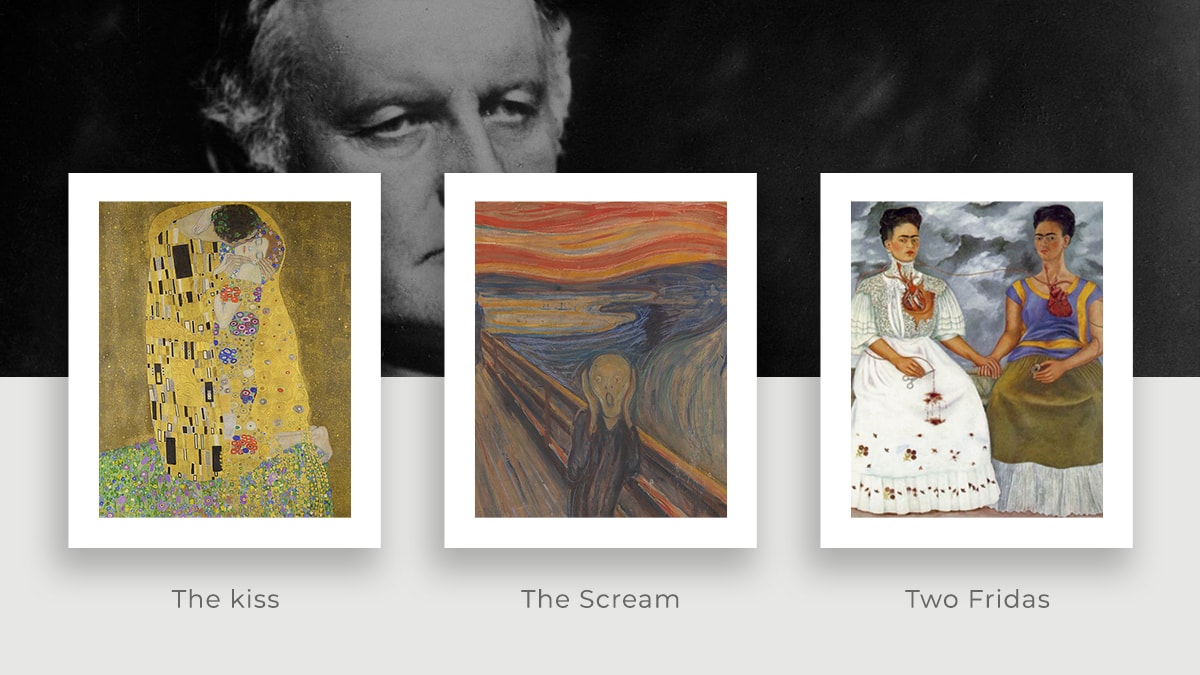
Famous Symbolism Artists: Gustav Klimt, Edvard Munch, Frida Kahlo
Famous Symbolism Paintings: The Crying Spider, The Kiss, The Death of the Gravedigger
To put it in very blunt words—symbolists could give form to your dreams and visions.
As opposed to the impressionist painters, symbolists went beyond shapes, lines, patterns, and tones to convey their idealogy.
Symbols in art combined religious mystery, the grotesque, the sexual, and the depraved.
The symbolic art style had themes like the macabre, the dream world, grief, evil, and mortality,
It was the bridge that connected early Romanticism and Modernism.
11. Art Nouveau (1890-1910)
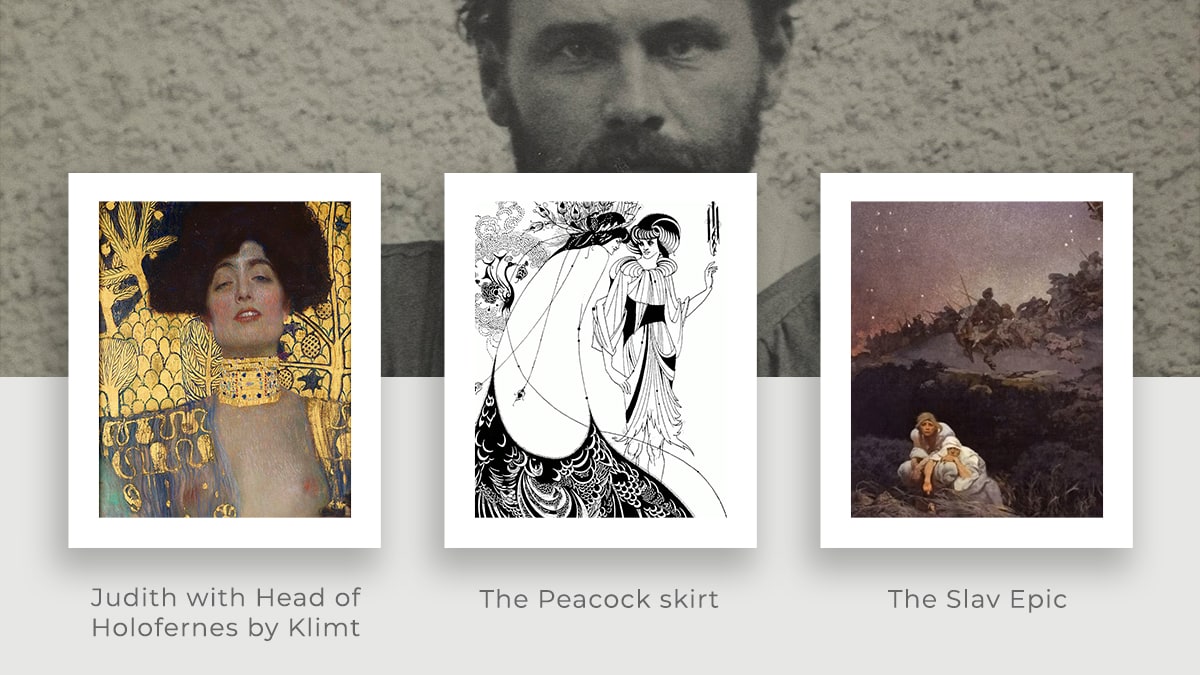
Famous Art Nouveau Artists: Gustav Klimt, Alphonse Mucha, Victor Horta
Famous Art Nouveau Paintings: Daydream, The Peacock Skirt, The Slav Epic
This was one of those types of painting styles whose legacy still lives on today in many ways.
Art nouveau was most frequently used in architecture, interior design, jewelry and glass design, posters, and illustrations.
The use of a long sinuous organic line distinguishes this art style.
One of the main goals of art nouveau was to eliminate the conventional divide between fine arts and applied arts.
Plant forms and nature largely inspired the artists and took organic subjects and flattened and abstracted them into sophisticated and flowing motifs.
12. Fauvism (1905-1910)
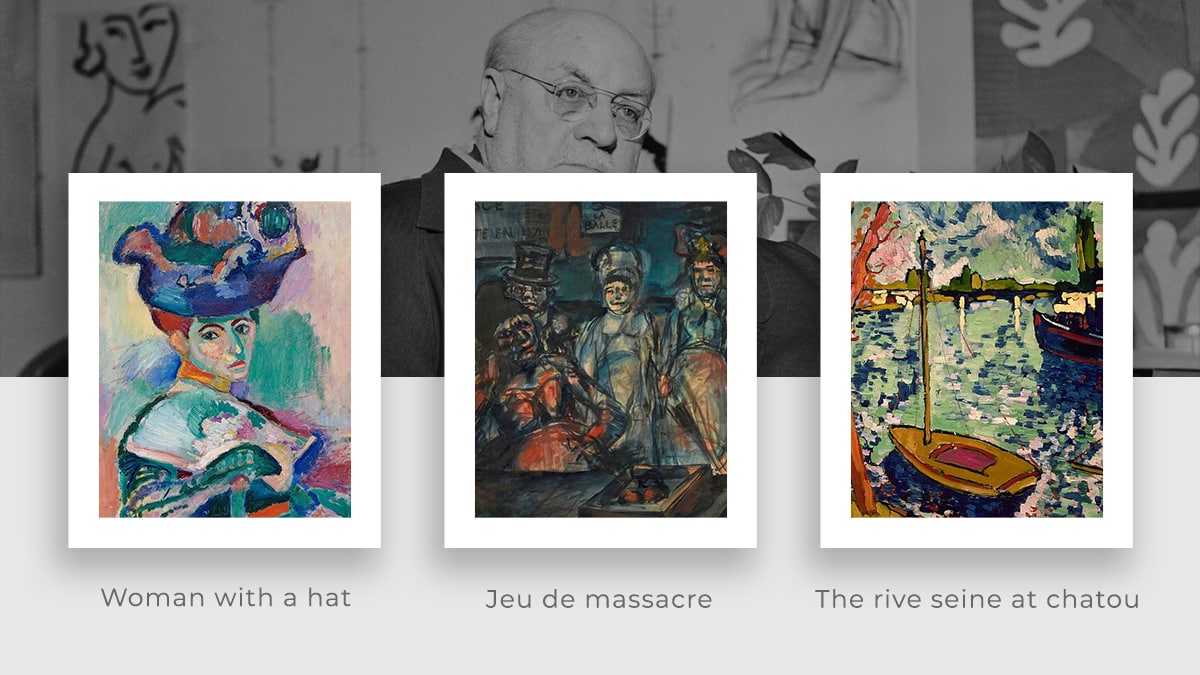
Famous Fauvism Artists: Henri Matisse, Georges Rouault, Maurice de Vlaminck
Famous Fauvism Paintings: Woman with a Hat, Jeu de Massacre, The River Seine at Chatou
This was one of the first contemporary art movements of the 20th century.
Fauves’ painting style was distinguished by its wildly erratic brush strokes and vivid colors.
Whereas their subjects were highly simplified and abstract.
Henri Matisse, the father of Fauvism, used pure, brilliant colors aggressively applied straight from the paint tubes to create a sense of an explosion on the canvas.
One color that particularly dominated this type of painting style was Red, vibrant, blazing Red.
Fauvist art style accentuated and displayed post-expressiveness, impressionism’s vivid colors, and thick paint application.
13. Expressionism (1905-1925)
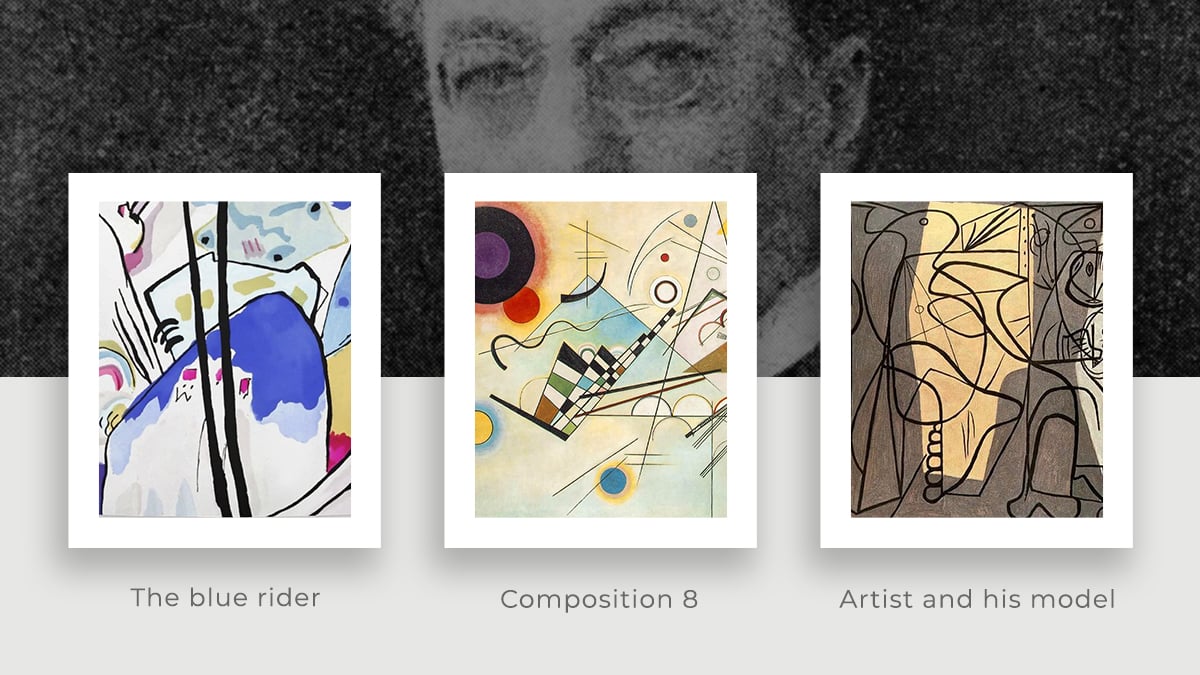
Famous Expressionism Artists: Edvard Munch, Wassily Kandinsky, Ernst Ludwig Kirchner
Famous Expressionist Paintings: The Scream, The Blue Rider, Artist & His Model
Propelled by opposition to bourgeois culture and a passionate revival of creativity.
The Expressionist painting style spread across Europe as a trend in art, and the expressionist artists preferred to depict emotional experiences over objective truth.
The artists were only able to achieve this goal through distortion, exaggeration, primitivism, and imagination in their paintings.
These types of painting styles usually had vivid, startling violent, or dynamic use of formal components.
The artists used extreme angles, flattened forms, garnish colors, and distorted views of the subject.
Oil painting, other than any other painting medium, was seen dominating the Expressionist style.
14. Cubism (1908-1920)
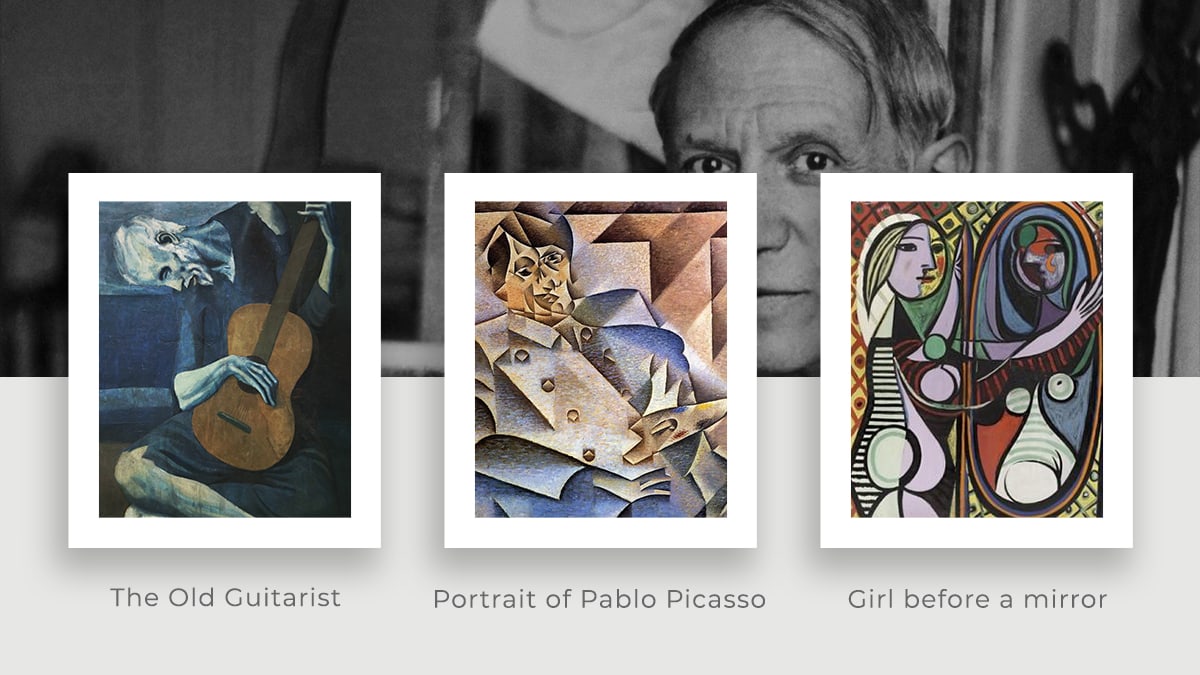
Famous Cubism Artists: Pablo Picasso, Georges Braque, Paul Cézanne
Famous Cubism Paintings: Cubist Self-portrait, Portrait of Pablo Picasso, Girl Before a Mirror
Pablo Picasso, a name that has dominated Modern Art, was the father of Cubism. Most of his cubist artworks like Les Demoiselles d’Avignon remain controversial.
But it was, what it was.
Cubism, an art style, fundamentally rejected clear forms. The attempt to try and create a true three-dimensional space on a two-dimensional canvas from a fixed viewpoint was a waste, according to artists of cubism.
In actuality, the cubism art style was an attempt to emphasize the nature of the two-dimensional canvas rather than creating depth.
They tried doing this without perspective and utilizing the method of tones.
They would separate the subject into a variety of shapes before repainting it from various perspectives.
15. Futurism (1909-1914)
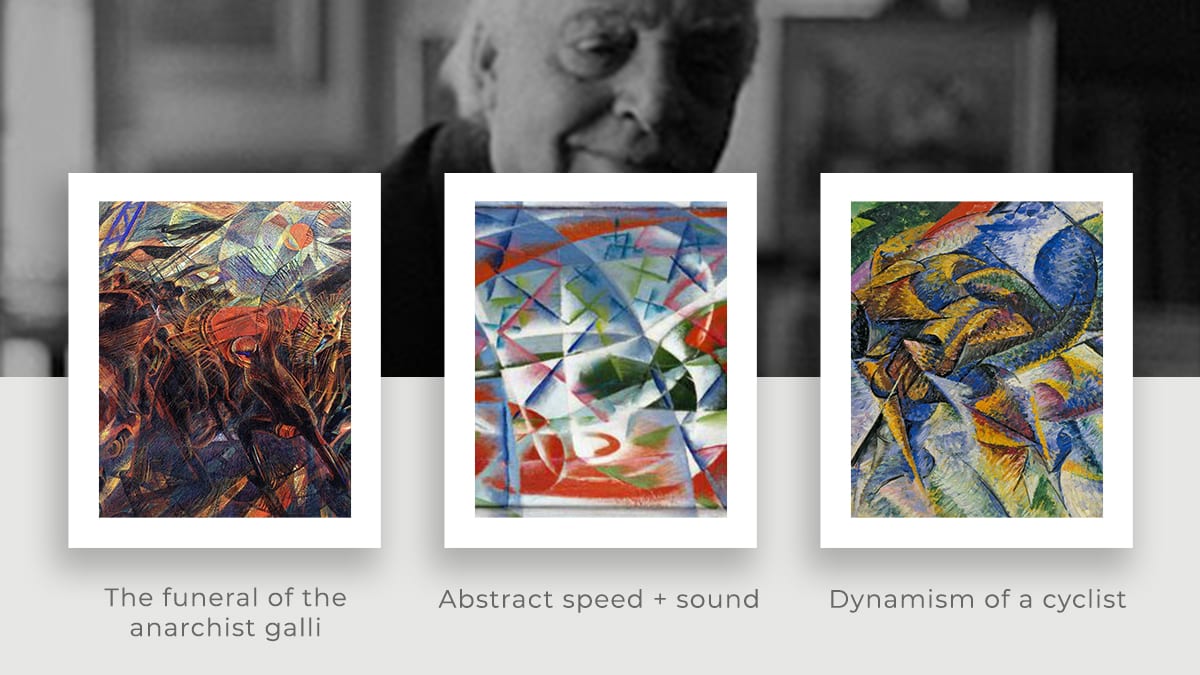
Famous Futurism Artists: Umberto Boccioni, Giacomo Balla, Carlo Carrà,
Famous Futurism Paintings: The Funeral of the Anarchist Galli, Abstract Speed + Sound, Dynamism of a Cyclist
Futurist artists rejected the past because they believed it to be immensely oppressive.
Instead, they offered an art form that celebrated modernity, along with its industry and technology.
The main goal was to portray a vibrant future vision.
As a result, they frequently depicted urban settings and cutting-edge transportation options including trains, vehicles, and airplanes.
They promoted change by glorifying machines, automobiles, and the lower classes through methods that included repetition and blurring.
If you were to read the names of futuristic paintings, you would pretty much understand how important speed, dynamics, energy, and everything science is for them.
16. Constructivism (1914-1930)
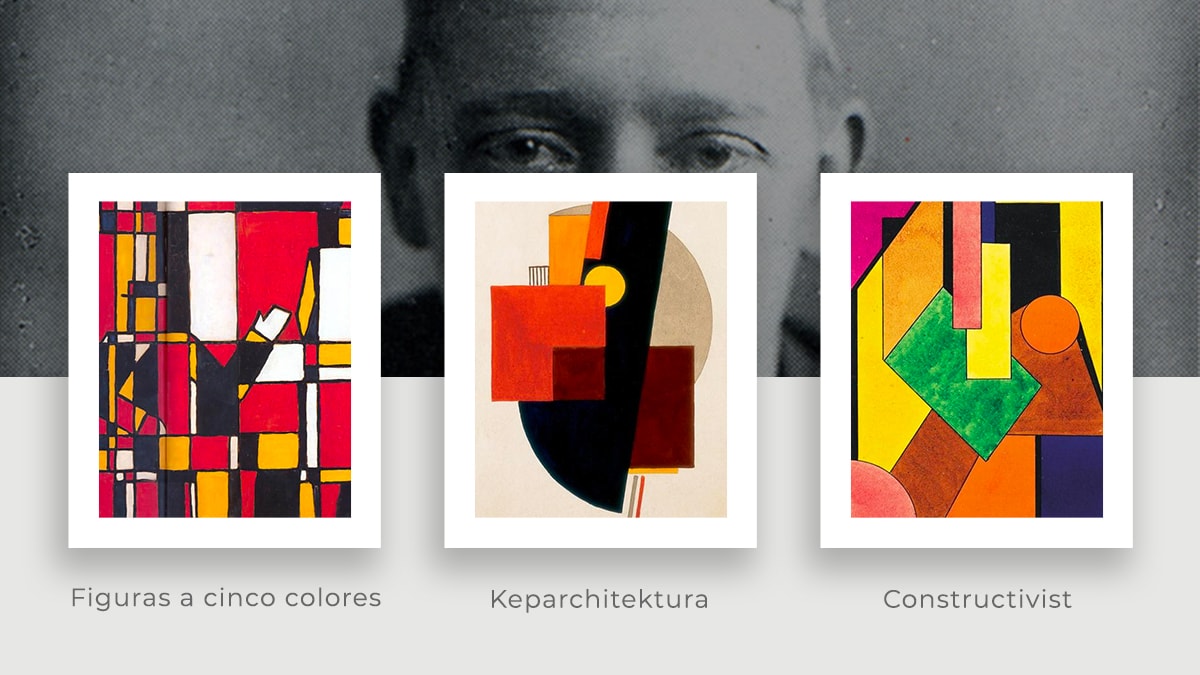
Famous Constructivism Artists: Vladimir Tatlin, Aleksander Rodchenko, Lyubov Popova
Famous Constructivism Paintings: Figuras a Cinco Colores, Képarchitektúra, Constructivist Composition
The Russian artist Vladimir Tatlin visited Pablo Picasso in his workshop in 1913 and observed the artist’s collaged item experiments.
This interaction inspired Tatlin to explore the collage medium on his own, leading to the creation of three-dimensional, abstract metal and wood collages.
Constructivism, a movement in art where the focus was on construction, started out with this. To be constructed was art.
Constructivist art was heavily influenced by industrial design.
They used simple, geometric shapes and inexpensive materials. This style of painting also used strong lines and bright primary colors like red and yellow to create a bold visual statement.
As per the main principles of constructivism – tectonics, texture, and construction were of utter importance.
In fact, it was during the use of this particular famous art style that the De Stijl magazine was published that primarily focused on constructivism.
17. Dadaism (1916-1924)
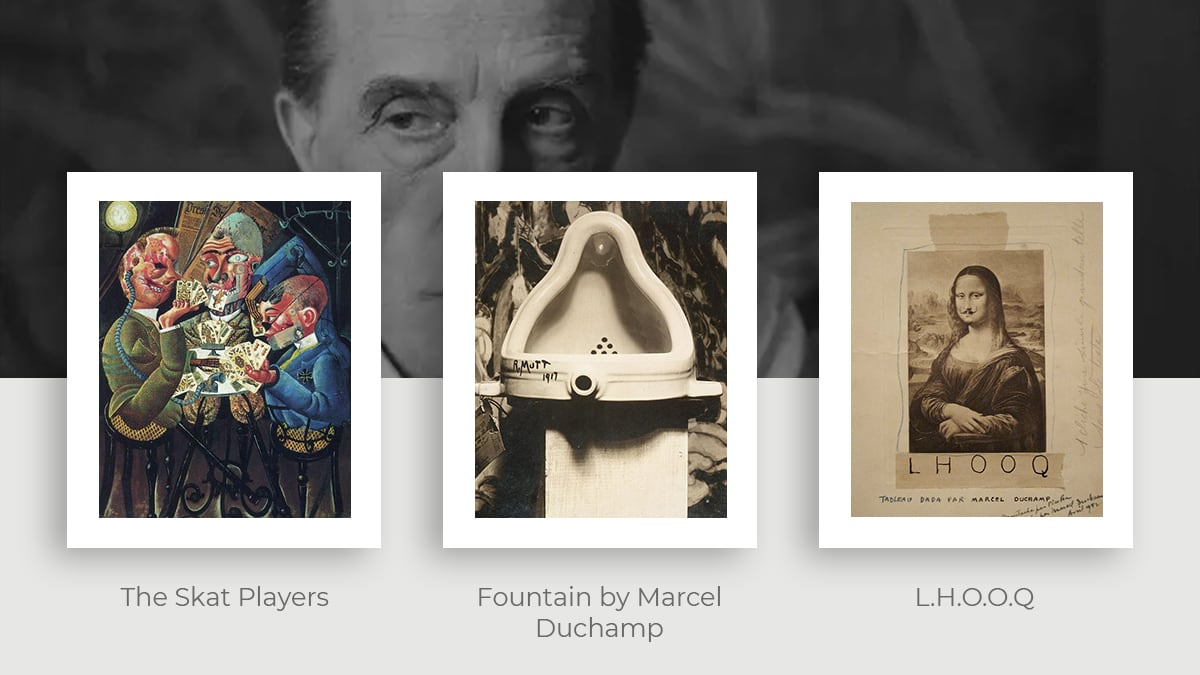
Famous Dadaism Artists: Hans Arp, Marcel Duchamp, Man Ray
Famous Dadaism Paintings: L.H.O.O.Q, Premiere Promenade, The Skat Players
Dadaism emerged as a reaction to modernity.
Art for art’s sake – to sum up the art style of Dadaism in 4 words.
The Dadaists’ art and performances evolved into more experimental, rebellious, and anarchic forms as the conflict dragged on.
Under the banner of DADA, they banded together to protest the brutality and pointlessness of the war.
Dada artists frequently create satirical and absurdist works of art and poetry.
Also while posing a serious question to the audience about how we evaluate art.
One could very easily identify Dadaist art because it incorporated a lot of humor, irrationalism, and spontaneity.
However, ultimately, Dadaism meant to paint protest.
18. Surrealism (1917-1950)
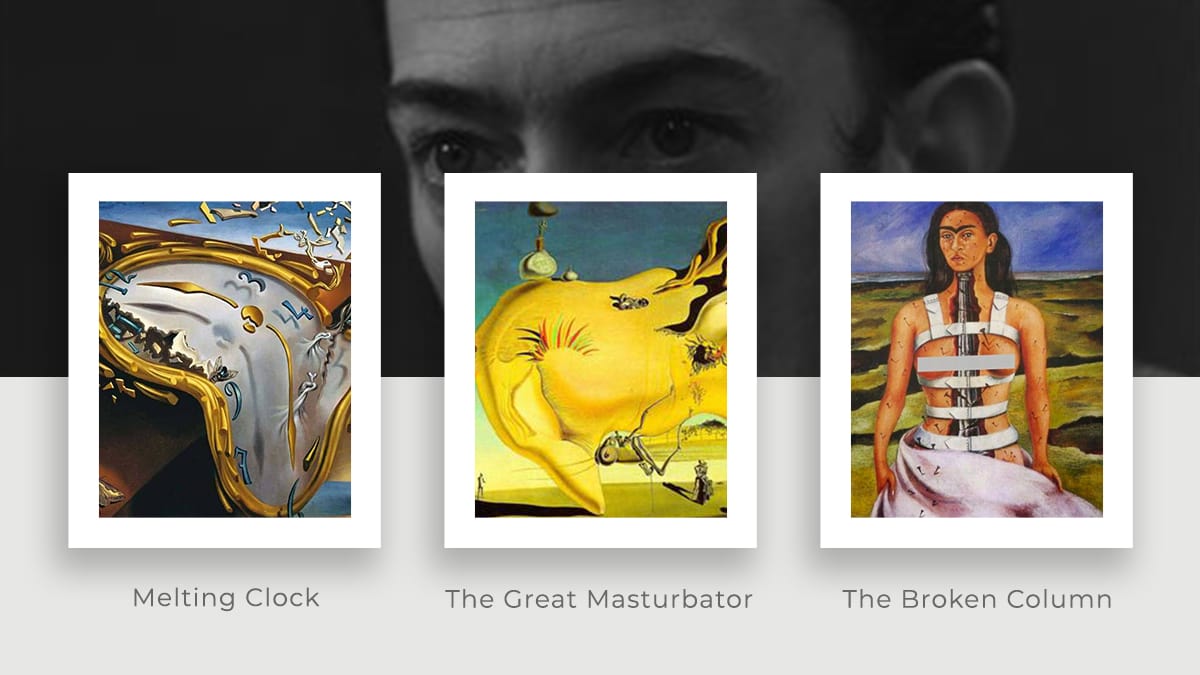
Famous Surrealism Artists: Salvador Dali, Pablo Picasso, Max Ernst
Famous Surrealism Paintings: The Great Masturbator, The Broken Column, The Melting Clocks
Surrealism was the cultural movement that was significantly impacted by Dadaism.
Artists created weird creatures out of common things and painted unsettling, illogical situations, often with photographic accuracy.
Surrealist art incorporates non sequitur, unexpected juxtapositions, and the element of surprise.
The movement at the time was linked to ideologies like communism and anarchism.
Surrealism is an artistic endeavor that aims to free the imagination. It is both delicate and dynamic.
19. Abstract Expressionism (1940s-1950s)
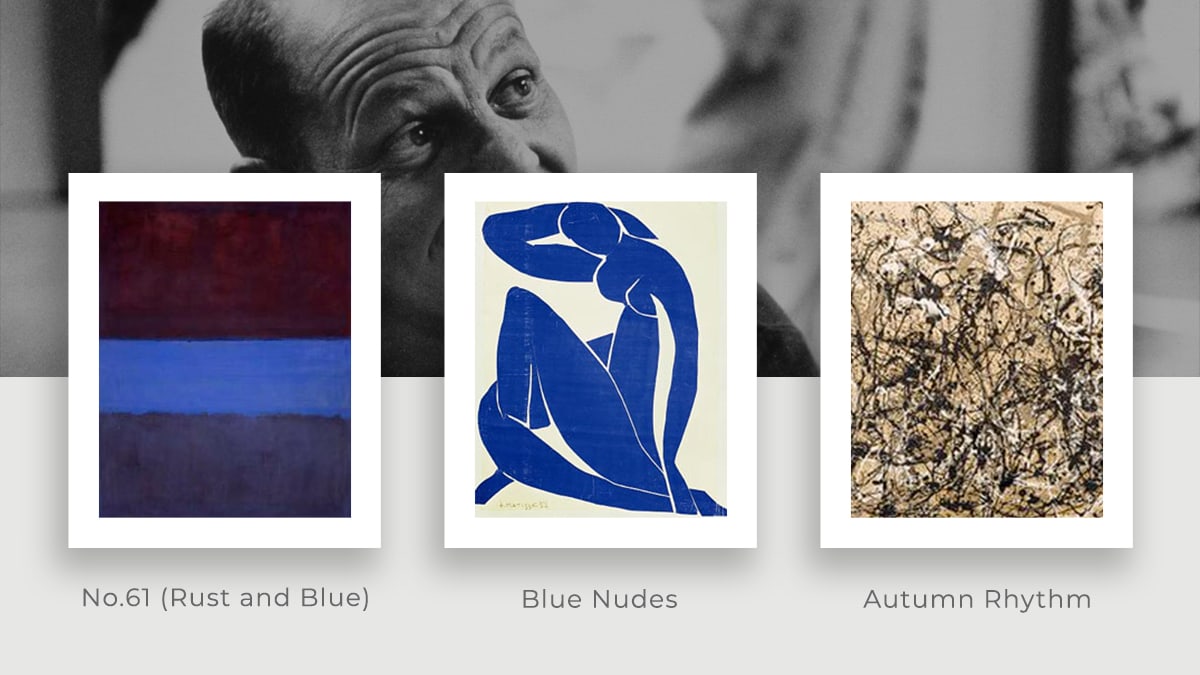
Famous Abstract Expressionism Artists: Willem de Kooning, Henri Matisse, Jackson Pollock
Famous Abstract Expressionism Paintings: Woman I, Blue Nudes, Autumn Rhythm
Abstraction, one of the most unique art styles, was something that only few can master and even fewer can understand.
Artists of all stripes could express their emotions and ideas through abstract expressionism without worrying about being judged by the general public.
Strong messages and emotions are crucial to the representation but the movement is not defined by any one particular style.
The feeling of the artist or the viewer—and not the actual image—takes center stage in every piece of Abstract Expressionist art.
Abstract art has come to be known as a non-representation practice and is open to interpretation.
Abstract artists never painted to represent something, they painted for the art to take the shape of the viewer’s thought.
20. Pop Art (1950-1960)
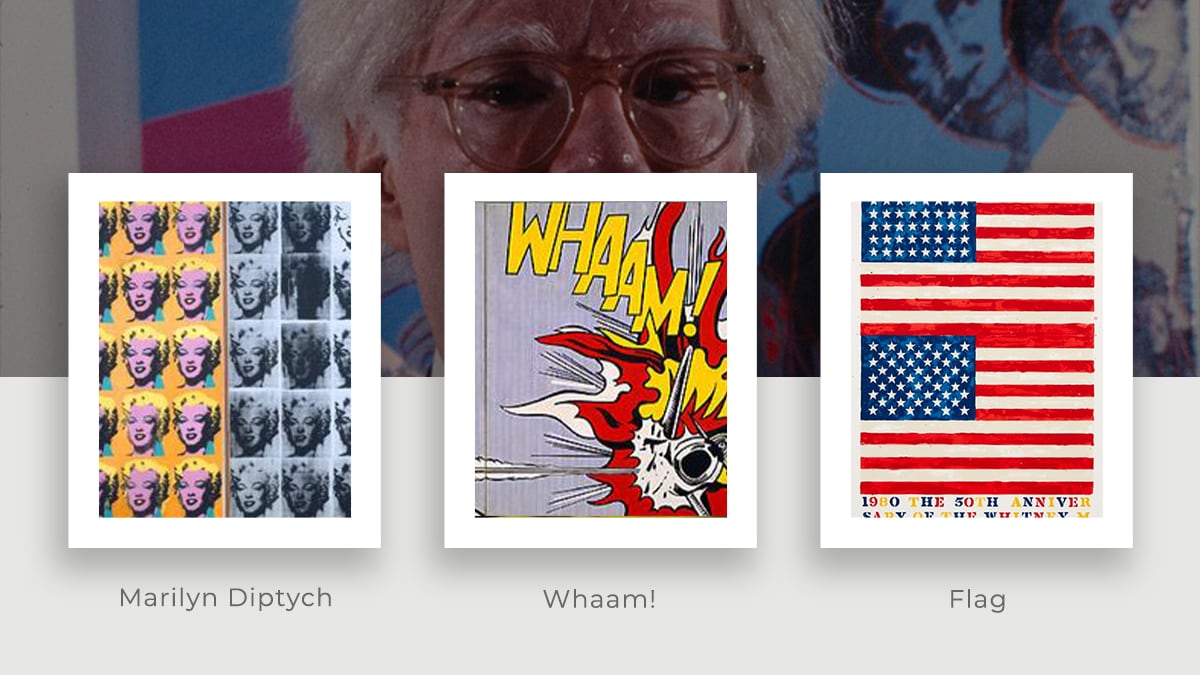
Famous Pop Art Artists: Andy Warhol, Roy Lichtenstein, Richard Hamilton
Famous Pop Art Paintings: Marilyn Diptych, Whaam!, Flag
Instead, it used commonplace materials and objects like newspapers, comic books, and magazines to create bright compositions.
By questioning aristocratic society and fine art traditions, famous pop artists substituted imagery and methods from popular media and mass culture.
Pop art is noted for its striking elements, which can help you rapidly capture the attention of your audience.
The pop art movement established the notion that there is no hierarchy of culture that might prevent art from drawing inspiration from any source.
21. Photorealism (1960-Present)
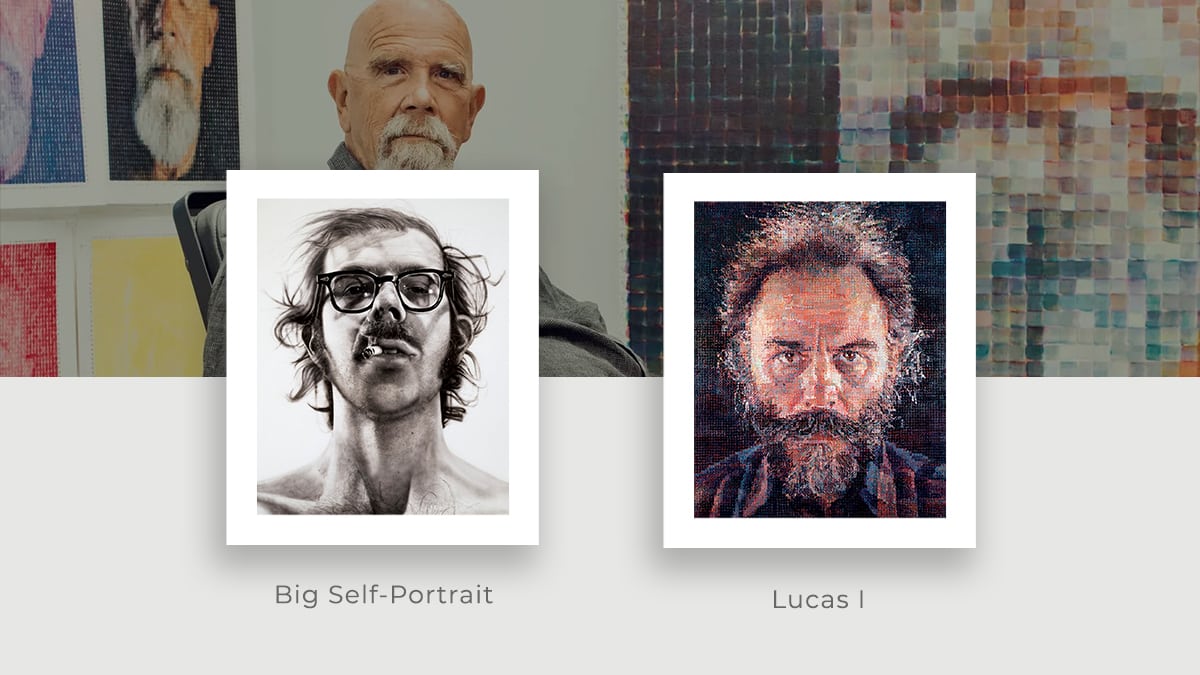
Famous Photorealism Artists: Chuck Close, Oscar Ukonu, Gottfried Helnwein
Famous Photorealism Paintings: Big Self-Portrait, Phil, Lucas I
The technical ability to impress viewers is a key component of the Photorealism movement.
It began as primarily an American art trend and gained popularity in response to Abstract Expressionism.
The painting style of this art movement was to accurately recreate photographs.
The artists avoided the spontaneity that is characteristic of Abstract Expressionism and meticulously planned their work to great effect.
Usually, this is accomplished by either using traditional grid procedures or by projecting the slide onto the canvas.
22. Minimalism (1960-Now)
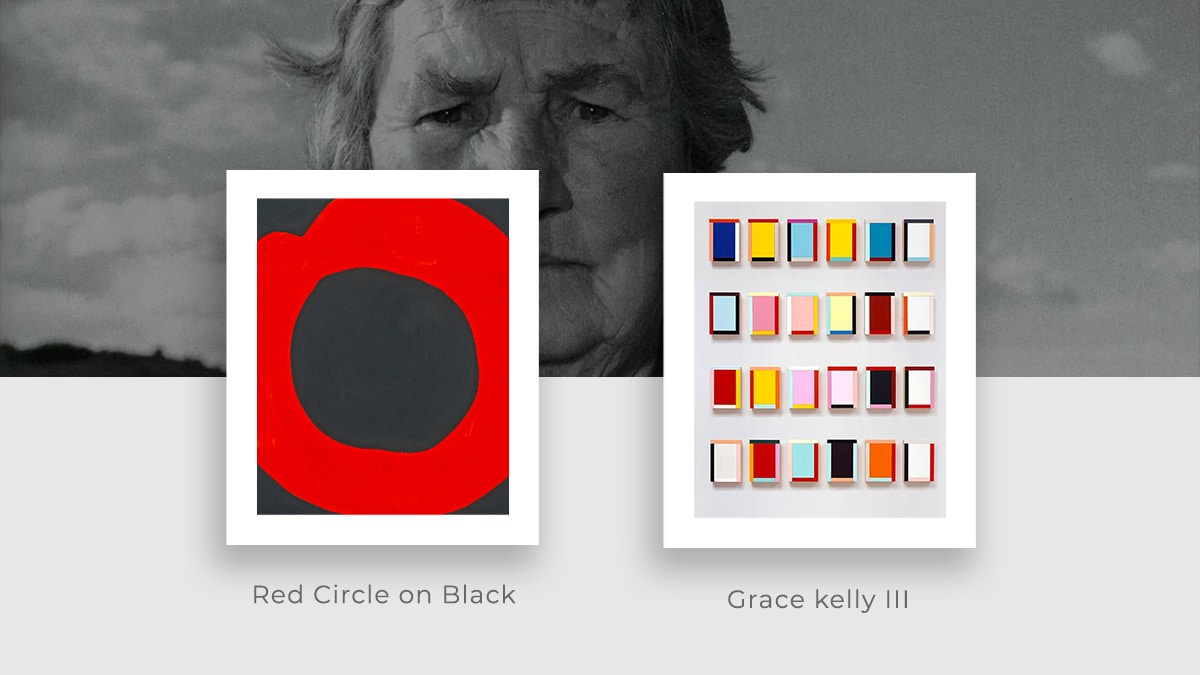
Famous Minimalism Artists: Agnes Martin, Sol LeWitt, Dan Flavin,
Famous Minimalism Paintings: Red Circle on Black, grace kelly III, Untitled
What you see is what you see!
The idea that art should have its own reality and not be a copy of anything else can be extended through minimalism or minimalist art.
Art is considered a reflection of an experience, such as an emotion or mood, or a representation of the real world.
The painting style of minimalism is to focus solely on what is in front of the audience and makes no attempt to reflect an external world.
33 Types of Painting Techniques
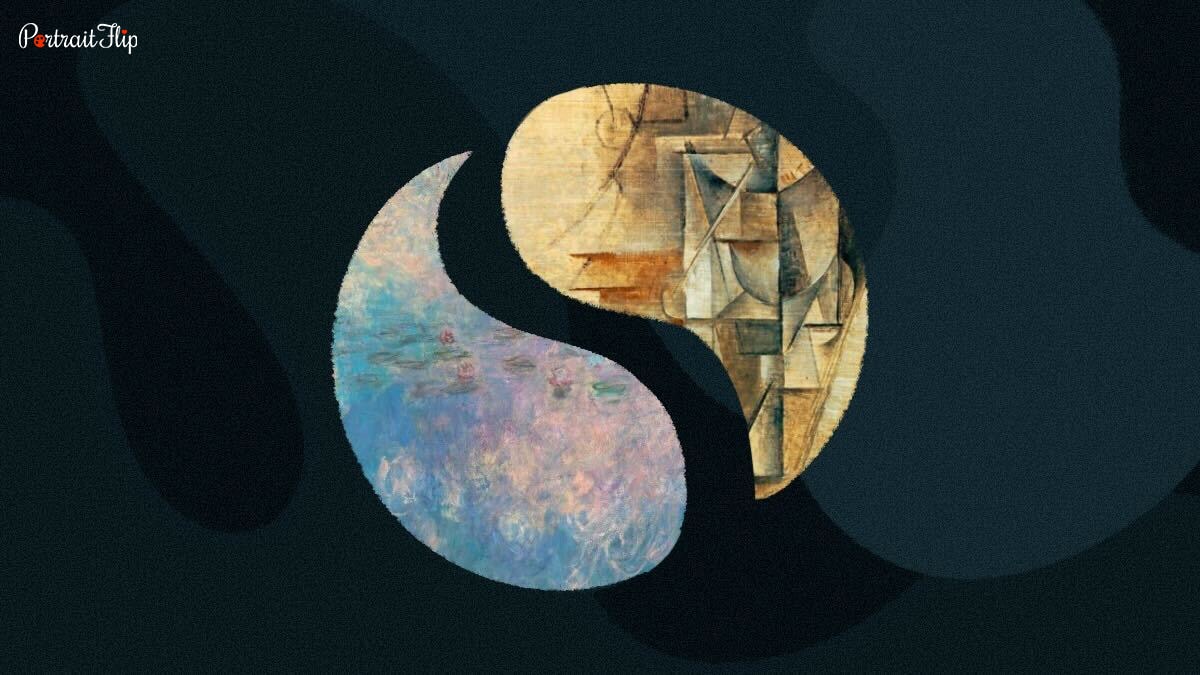
Art in its most basic form is composed of four elements – medium, type style, and technique.
Since we are trying to understand all the types of painting styles and techniques, let us end with the most important one.
Painting techniques are the most crucial part of understanding art.
Whether you want to learn a new technique or add to your vast knowledge, we’ve got an enormous list of painting techniques.
There is not just one way of painting but a number that you can hardly fathom.
In today’s world, everything is art, but what it takes for the art to sell is the painting technique.
A lot of art enthusiasts end up using painting techniques and design synonymously.
Don’t get confused between design and technique just by the look of it.
Design refers to the overall organization of an art piece whereas technique means the way in which the artist uses resources to create the artwork.
Learn all you can from the list of painting techniques below…
1. Action Painting
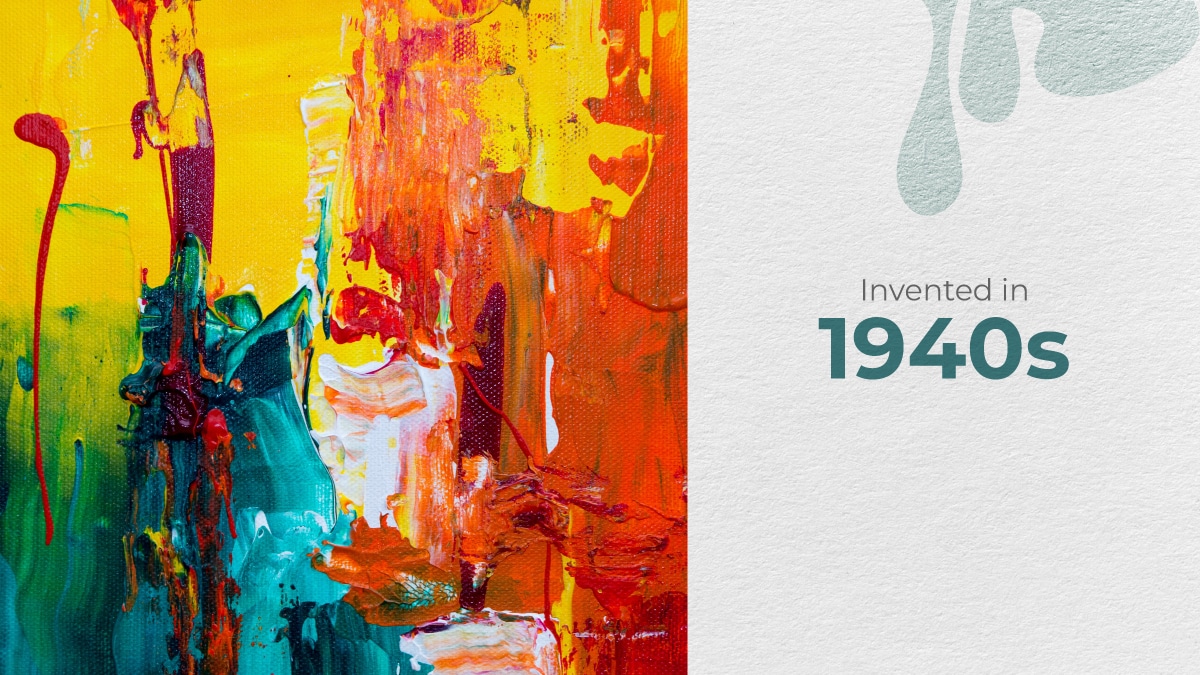
Famous Artists: Jackson Pollock, Franz Kline, Jack Tworkov
Action painting is a type of art, that uses splashed, smeared, or dripped paints on the canvas.
The action painting emphasizes the physical aspect of the painting that becomes the aspect of the finished artwork.
If you are somebody who enjoys vibrant and dynamic art techniques and styles that radiate energy, this might be just for you.
Suggested Reading – Jackson Pollock Paintings
2. Aerial Perspective
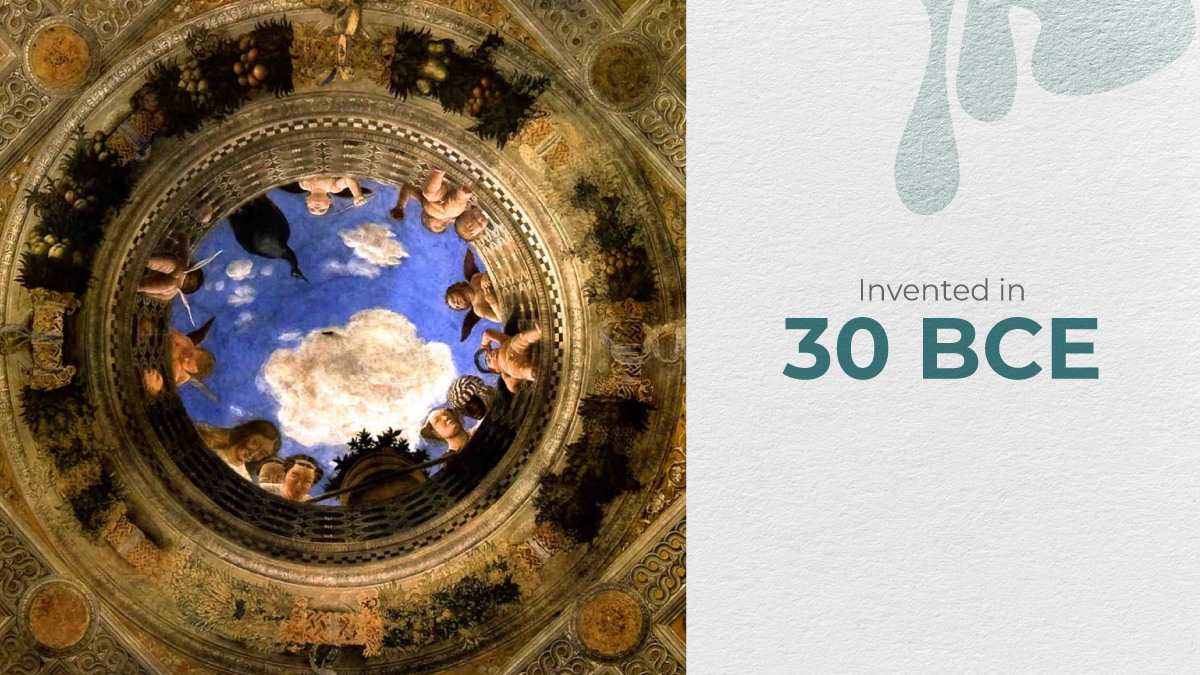
Famous Artists: Leonardo da Vinci, Renoir, Alfred Sisley
Aerial perspective, known as atmospheric perspective, is a type of painting art to creates an illusion of depth in the painting.
This effect is achieved by changing the color contrast between the background and the objects.
Here, the main focus is to simulate the effect of the atmosphere in a painting, like the way things are seen from a long distance.
This different form of painting is used to paint landscapes.
3. Anamorphosis
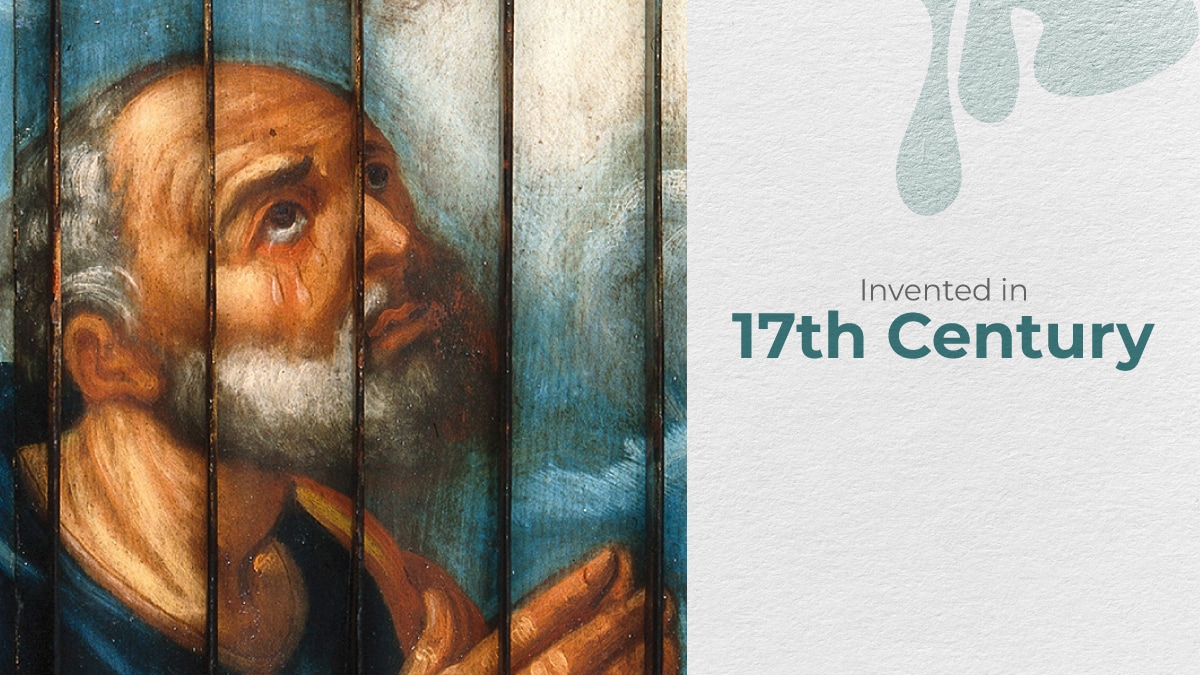
Famous Artists: Jean François Niceron
Anamorphic painting was fully used in the 17th century, although it is said to be a by-product of ‘perspective art’
This is one of the most interesting painting techniques out there.
It is an art that plays with perspective.
When viewed from the typical viewpoint, it displays a distorted image.
However, if viewed from a specific angle or reflected in a curved mirror, the distortion is removed and the image seems normal.
One of the art techniques and styles played with the looker’s vision.
4. Camaieu Painting Technique
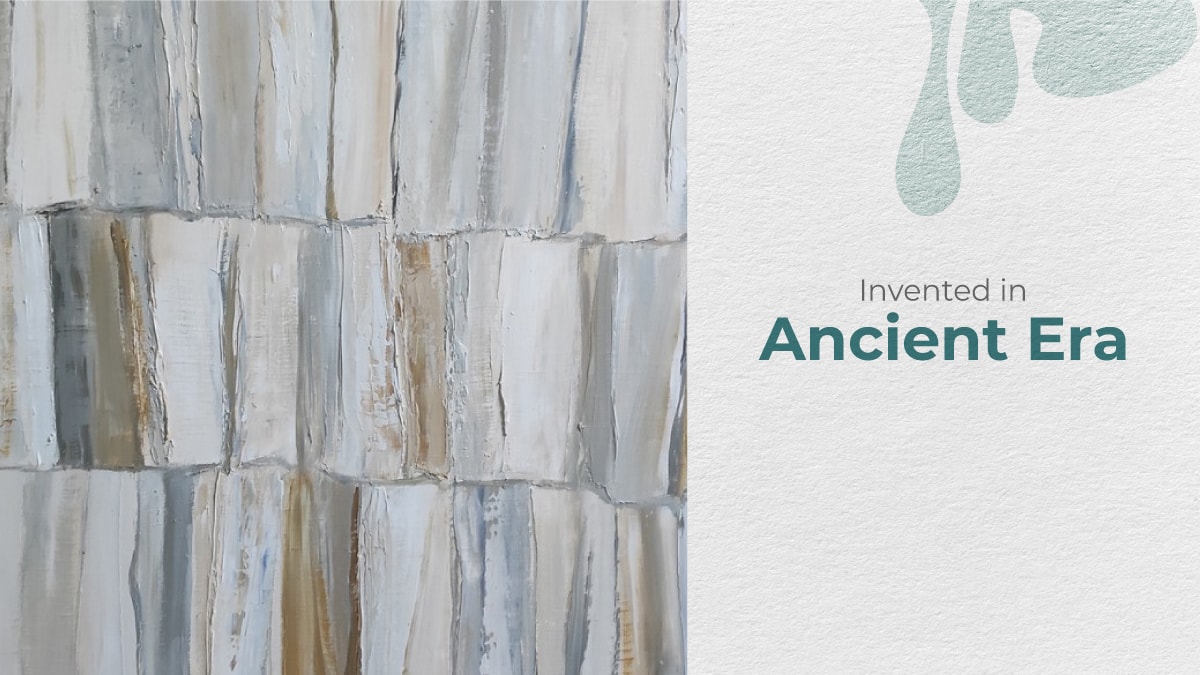
Famous Artists: Marlene Munroe de Montigny
Camaieu originated in the ancient world and is an old technique that was used to imitate relief sculpture in architecture and cameos in miniature paintings.
A painting technique that was created using several shades of a single color a.k.a monochromatic art.
But this is a monochromatic painting that uses colors besides grey.
The camaieu technique, also known as en camaieu, uses two or three shades of a single hue other than grey.
The hue chosen is peculiar for that subject matter.
This basically means that not all monochromatic paintings are camaieu, but all camaieu paintings are monochrome.
5. Casein Painting
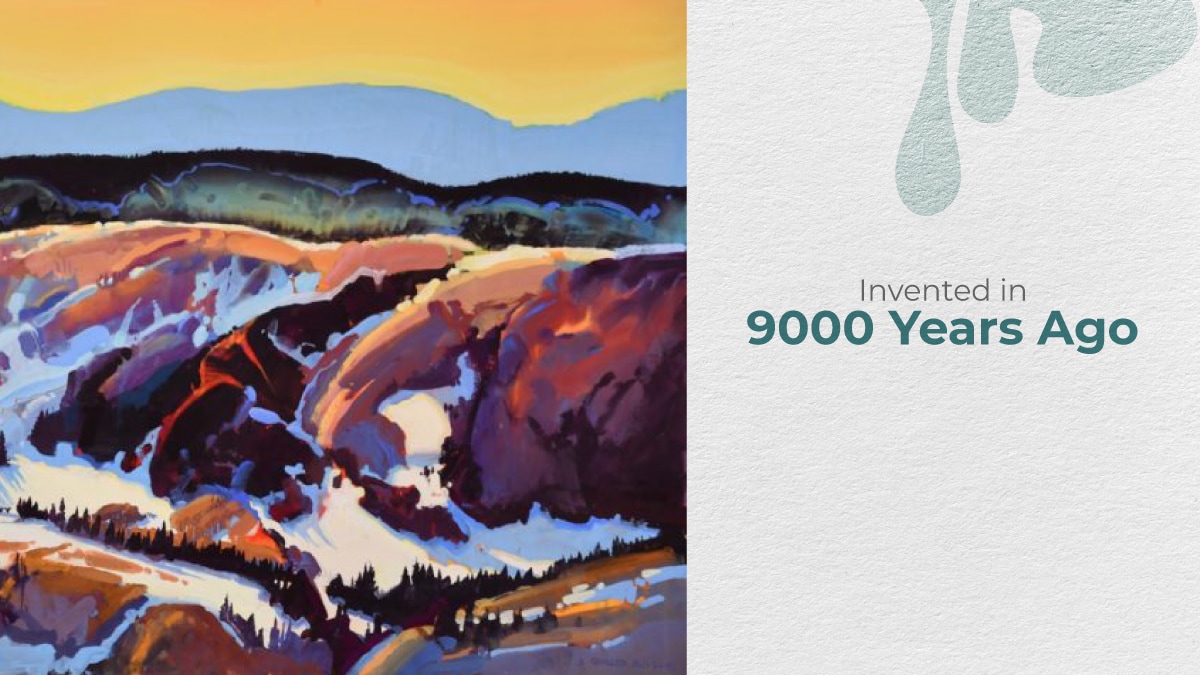
Famous Artists: Oscar Howe
It may sound odd, but a painting style and technique exists that uses paint made with milk.
Casein painting involves the use of casein paints that are made by mixing pigments and milk protein— casein.
Casein painting lets you create effects similar to oil painting.
Over time, casein painting is known to become water-resistant.
6. Chiaroscuro
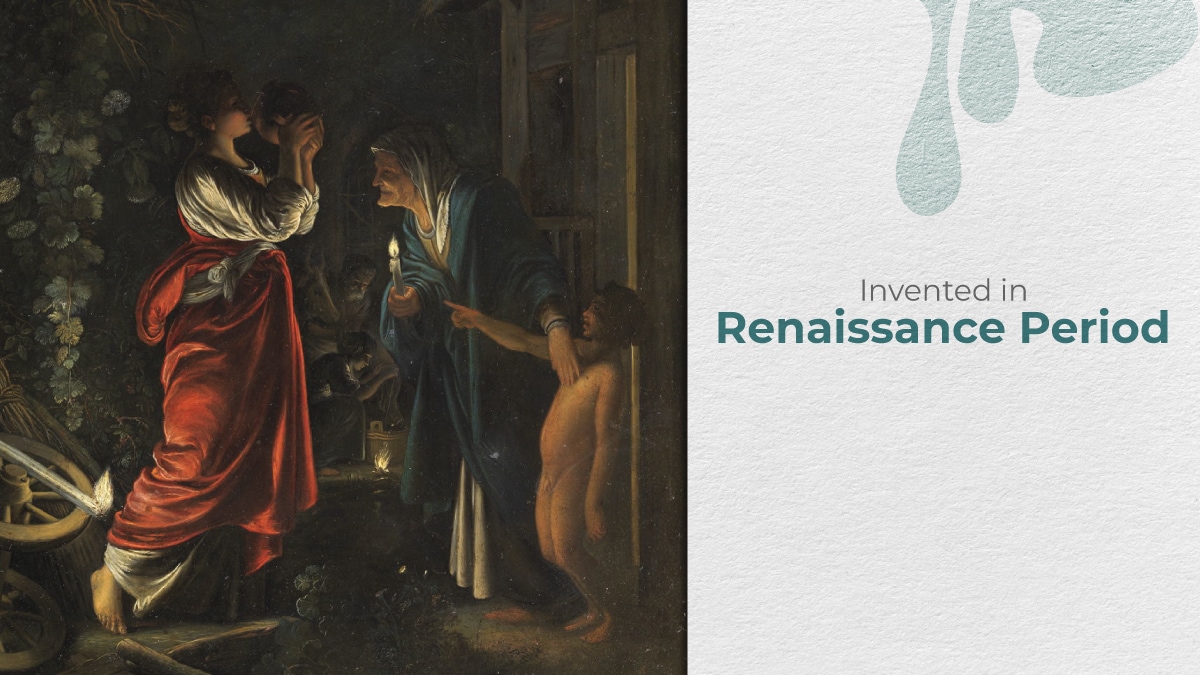
Famous Artist: Leonardo da Vinci, Caravaggio, Georges de La Tour
Chiaroscuro is a type of painting art that uses strong contrast between light and dark shades.
It lets you manipulate light to achieve a sense of a three-dimensional object on the canvas.
The chiaroscuro painting technique lets you emphasize and illuminate the important figure of the painting.
By playing with the intensity and the angle of light, you can change the focus of the subject in the painting.
7. Collage Painting
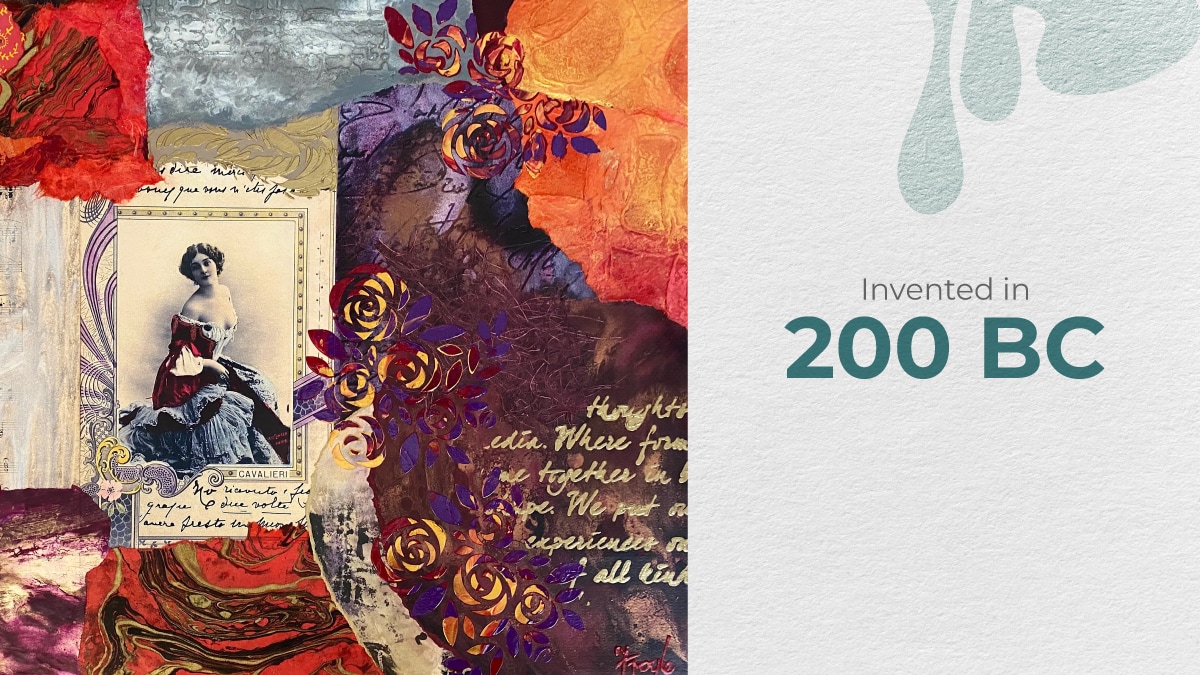
Famous Artists: Hannah Höch, Henri Matisse, Man Ray
This art technique came into existence in China around 200 BC.
Collage painting, a unique type of art, involves making artwork by assembling different pieces of materials.
It is an assembled piece of art that is visually appealing.
A collage is made from bits of magazines, papers, paints, newspapers, ribbons, photographs, and scraps of other artworks.
For making a collage painting, you have to stick the bits of materials together on a flat surface to make a complete artwork.
8. Digital Painting
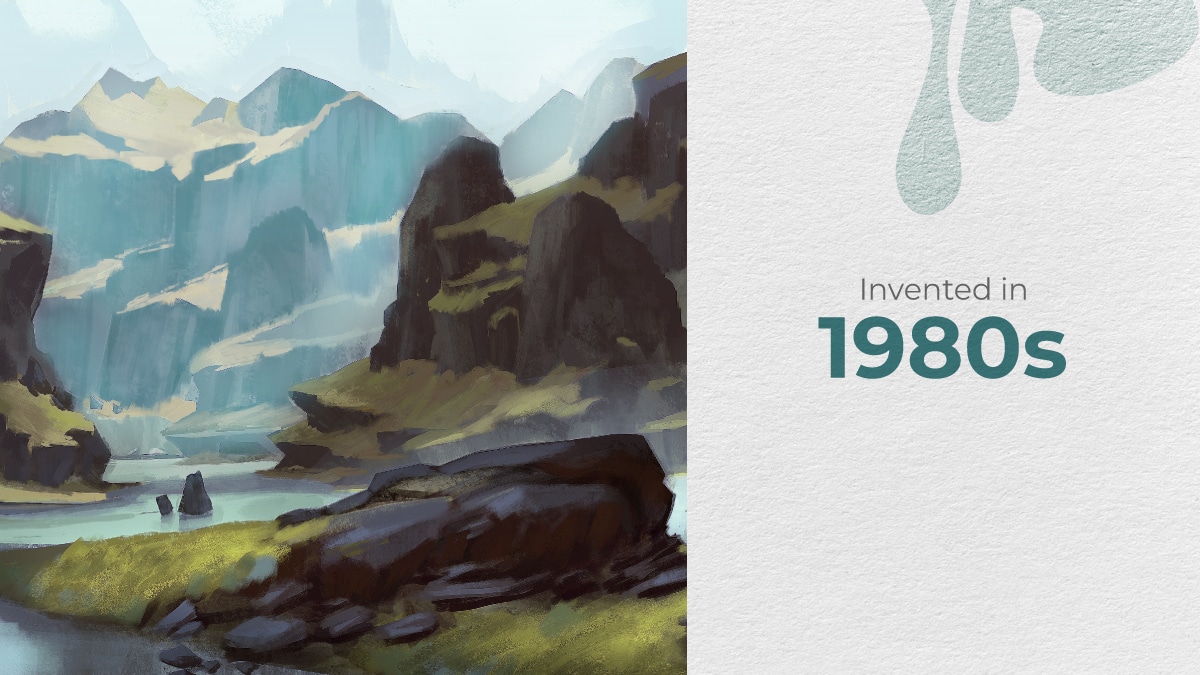
Famous Artists: David McLeod, Stephen McMennamy, Alberto Seveso
Digital art originated in the early 1980s, some claim its existence to be in 1967.
Digital painting unlike traditional is a modern type of painting technique that uses technology to create impressive art.
The whole artwork is made digitally as opposed to the traditional approach of painting.
Digital painting gives you the freedom of choosing many different tools and features, which allows you to create out-of-world art.
One of the best advantages you get with digital painting is that you make corrections to the painting without leaving a mark on the final artwork. (All hail the “Undo” button!)
9. Encaustic Painting
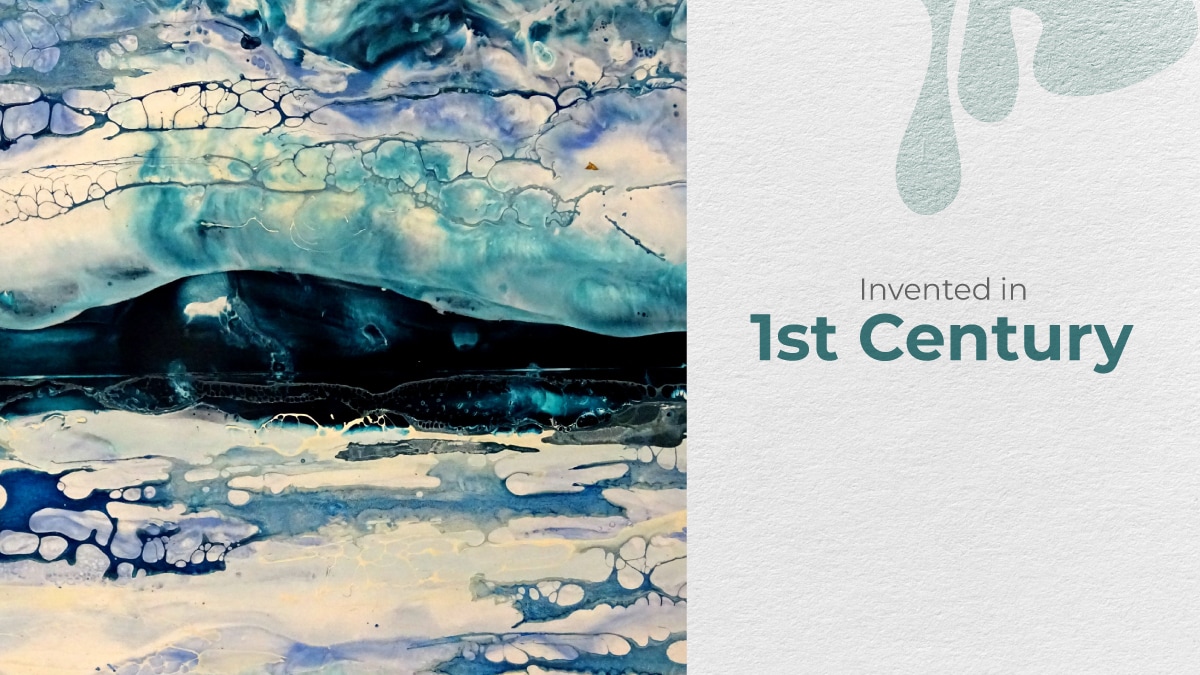
Famous Artists: Jasper Johns, Pausias, Benjamin Calau
Encaustic painting is one of the techniques in painting that uses hot-colored wax to make artwork.
These types of painting use an encaustic medium which is made by mixing color pigments with wax.
The hot medium is poured onto the surface and special brushes and tools are used to shape the painting.
Encaustic painting requires a heat lamp or heat gun to fuse and bind the medium.
10. Foreshortening
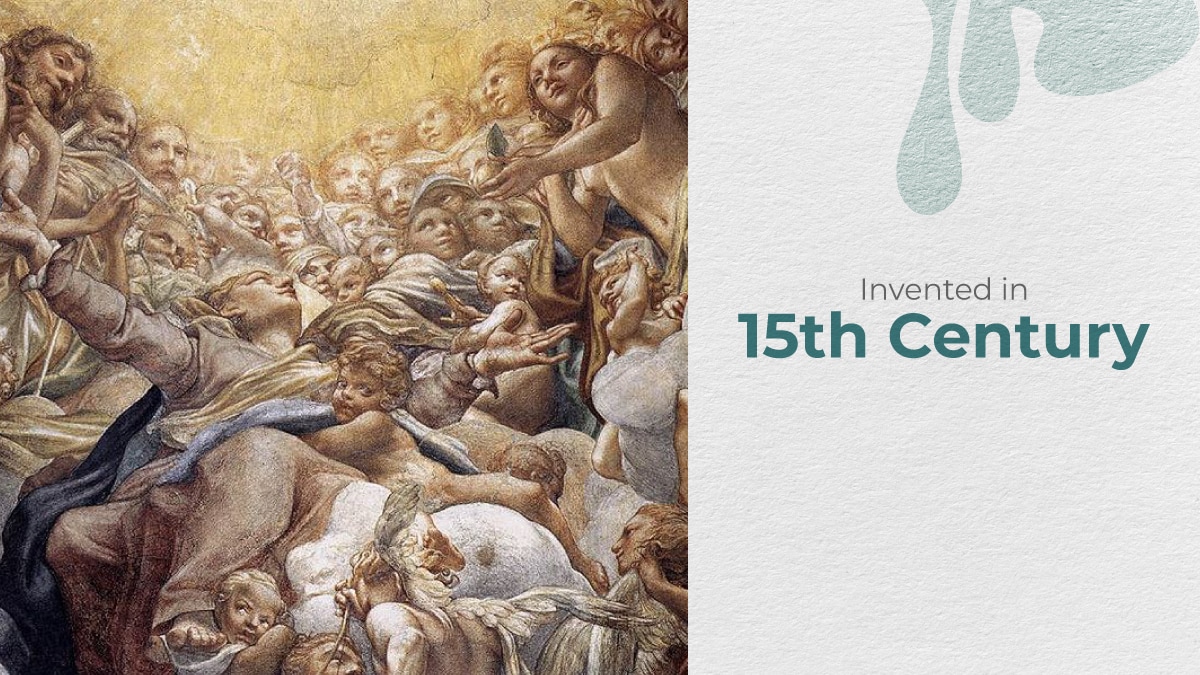
Famous Artists: Michelangelo, Correggio
Foreshortening is another type of art that uses optical illusion in a creative way.
It is a painting technique that depicts an object or human figure in the painting extending in space.
Foreshortening is all about experimenting with the angle and perspective of the subject.
The painting is always depicted from an unusual angle. For example, the human body is viewed from the top.
Suggested Read – 11 Famous Italian Artists
11. Fresco Painting
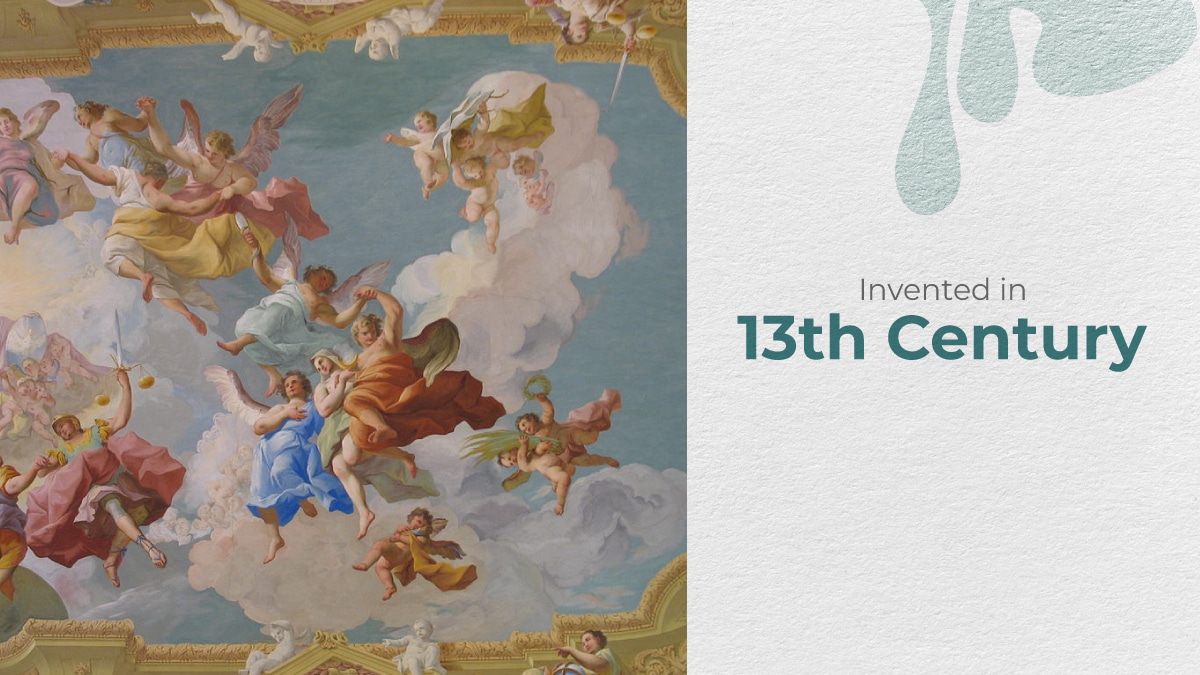
Famous Artist: Michelangelo, Sandro Botticelli, Masaccio
Fresco is a mural painting technique that lets you create art on walls and ceilings.
In this painting technique, water-based paint is applied onto wet plaster so that it becomes a permanent part of it.
When it comes to murals or wall painting, Fresco is a durable method.
The artwork, complete with Fresco techniques, looks monumental and has a matte finish.
12. Glass Painting
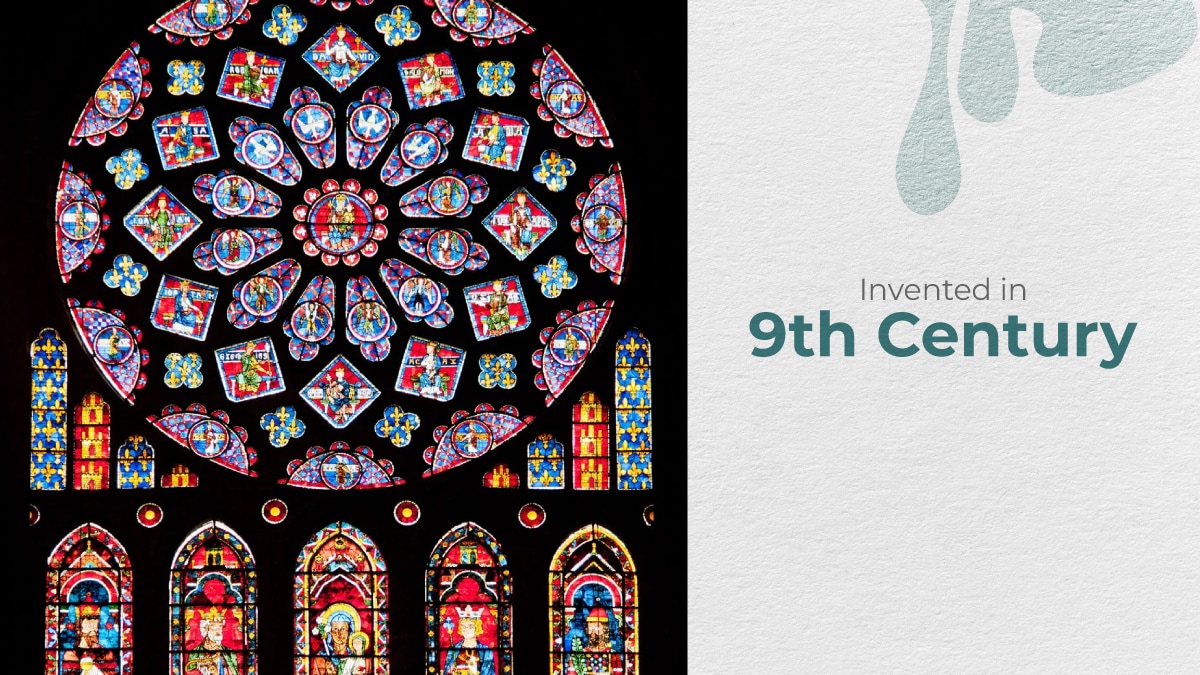
Famous Artists: Gerhard Richter, Brian Clarke
As per the name, glass painting involves painting on a glass surface.
It may seem like a not-so-popular technique, but glass painting was one of the most dominant forms of painting in ancient Europe.
Gesso, enamel, and acrylic paints are used for glass paintings.
This form of painting lets you create wonderful artwork on glass that can be illuminated by using a light source.
13. Gouache
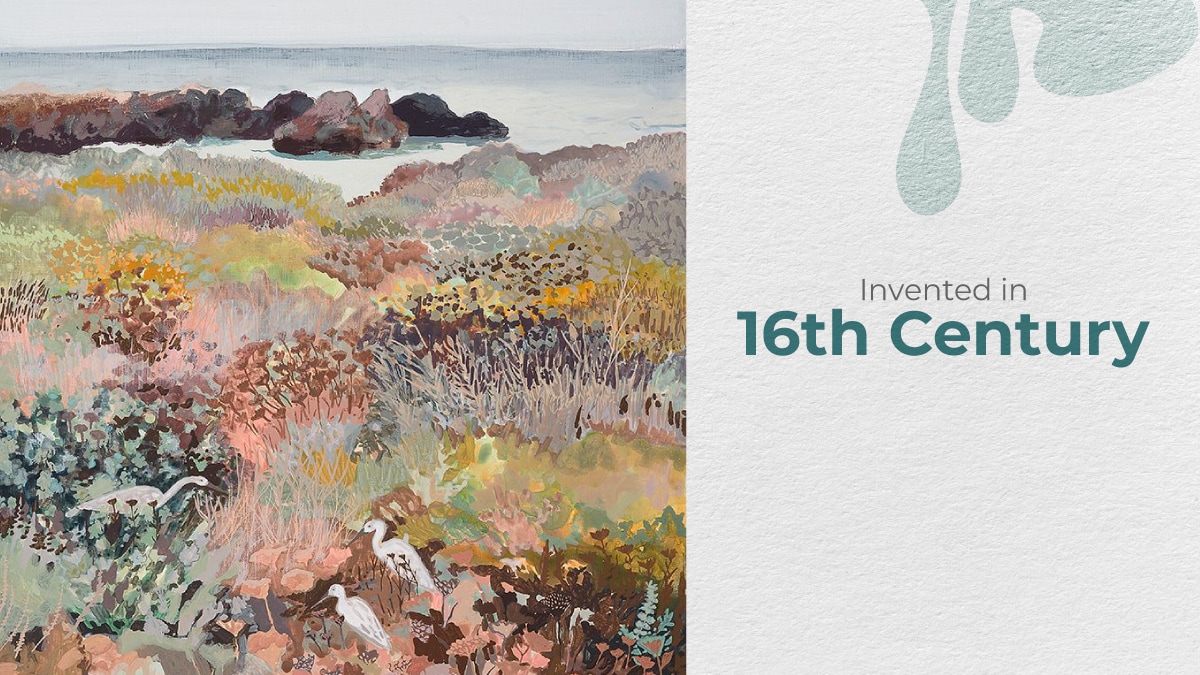
Famous Artists: Edgar Degas, John Singer Sargent, Pablo Picasso
Gouache painting was developed in the 16th century when the artists used oil paint over tempera to get a matt finish.
This type of painting technique involves the use of body paints or opaque watercolors to make the painting.
Gouache paint is a water medium paint made from natural pigments, water, a binding agent, and occasionally an inert material (that gives a fluorescence effect).
You can also find acrylic gouache paint made with an acrylic binder that gives a matte finish to the painting.
When you choose to make art with this type of painting, you get the benefit of making vibrant art that will stand out on the canvas.
The paintings made from this type of technique look energetic and realistic.
14. Graffiti
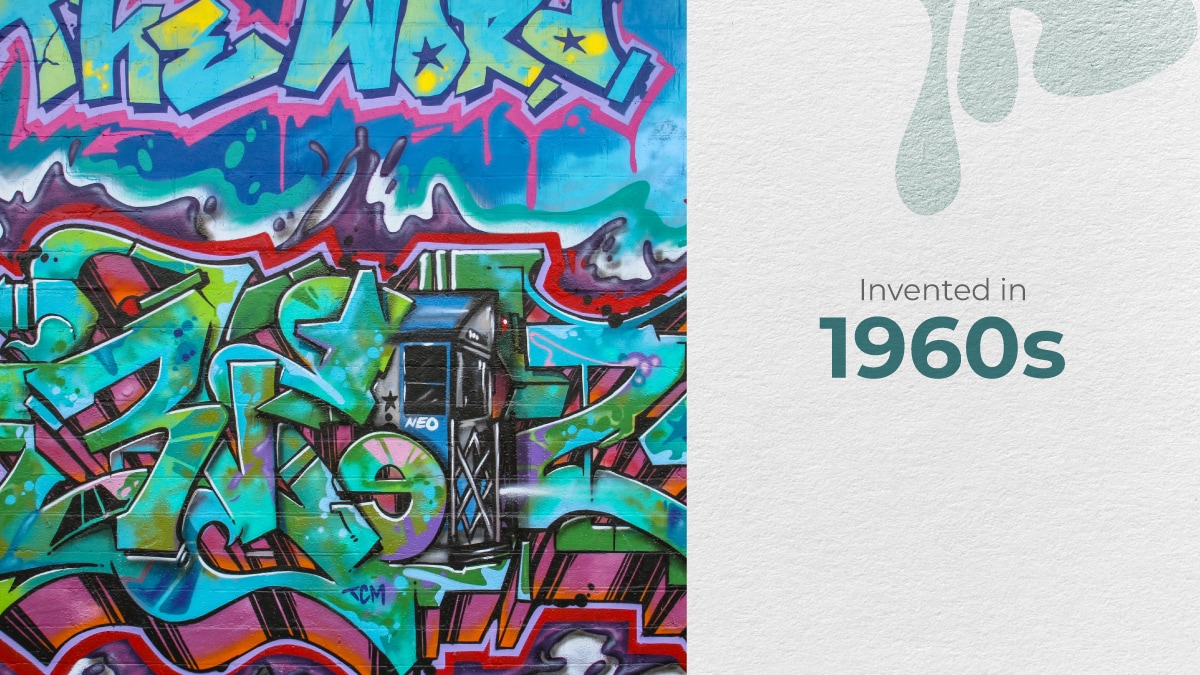
Famous Artists: Cornbread, Dondi White, Tracy 168
Art in the form of an inscription or graffiti on walls can be traced back to ancient times. Modern graffiti became famous in the 1960s.
It is a type of art that is used as a form of expressing thoughts, emotions, and messages to people.
Graffiti art is somewhat similar to spray painting forms but has its differences.
At a glance, graffiti is drawing or writing on the walls in public places, usually without permission. (Watch out! It can have legal consequences!)
The English word “Graffiti” is taken from the Italian word “graffito,” which translates to “scratched.”
Many graffiti artists do graffiti on the walls to spread messages or as a means of thrill-seeking.
15. Grisaille
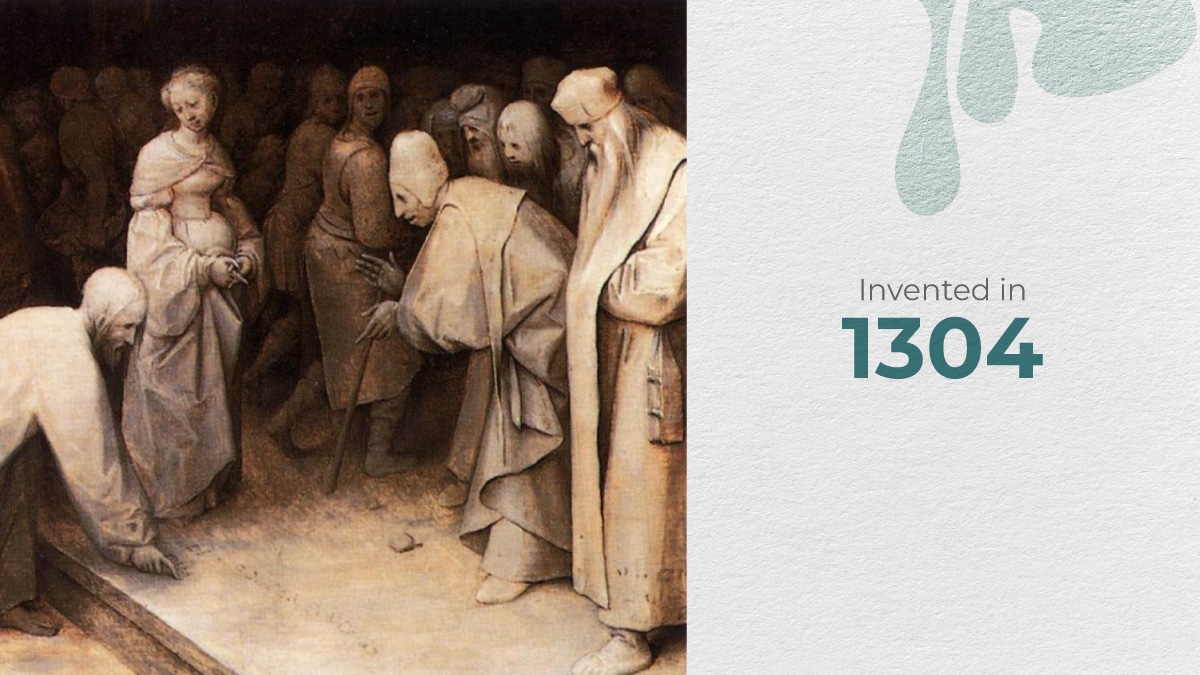
Famous Artists: Giotto, Robert Campin
Do you have a liking for mono-tone art? Grisaille might be just for you!
Grisaille is a painting style and technique where the painting is done only in shades of gray or other grayish neutral colors.
One of the prominent features of this technique of painting is that it is shaped to give an illusion of sculpture.
One can include a slightly wider color range in the grisaille type of art.
16. Impasto
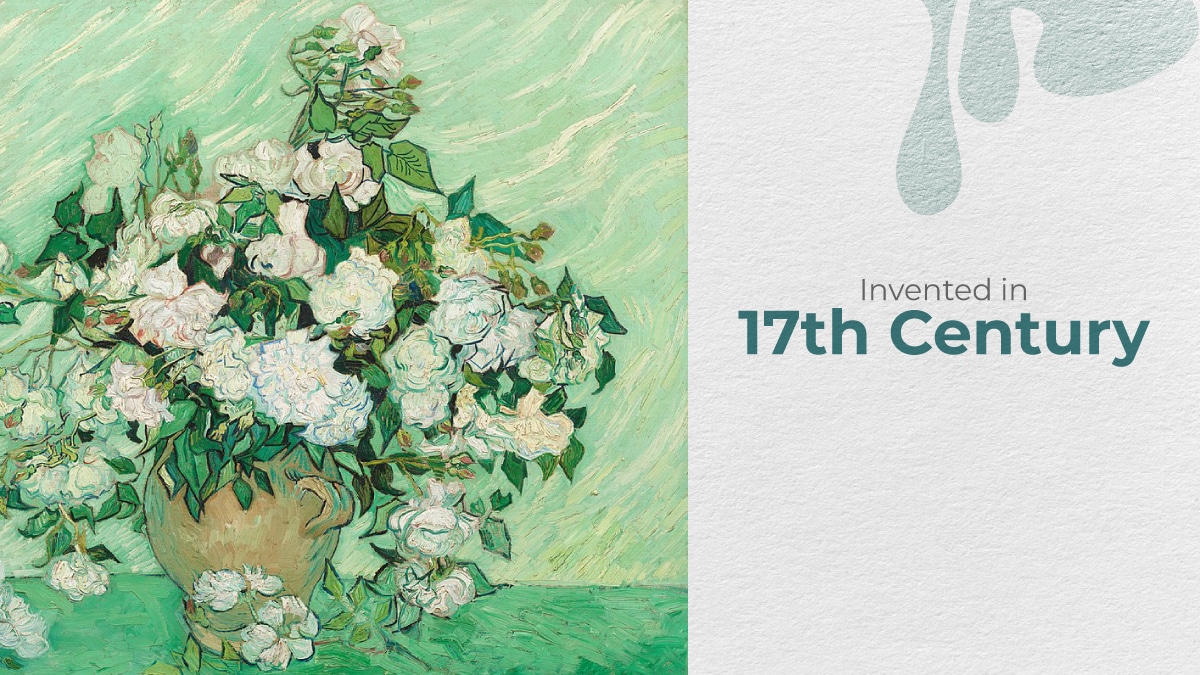
Famous Artists: Vincent van Gogh, Rembrandt van Rijn, Jackson Pollock
Impasto is a painting technique that uses thick layers of paint so that the brush strokes are visible in the final artwork.
When you look at the artwork, it appears as if the painting is standing out from the canvas.
For making an Impasto painting, you can choose between acrylic or oil paints.
This type of painting technique lets you play with the light, texture, expression, or tone of the painting.
17. Miniature Painting
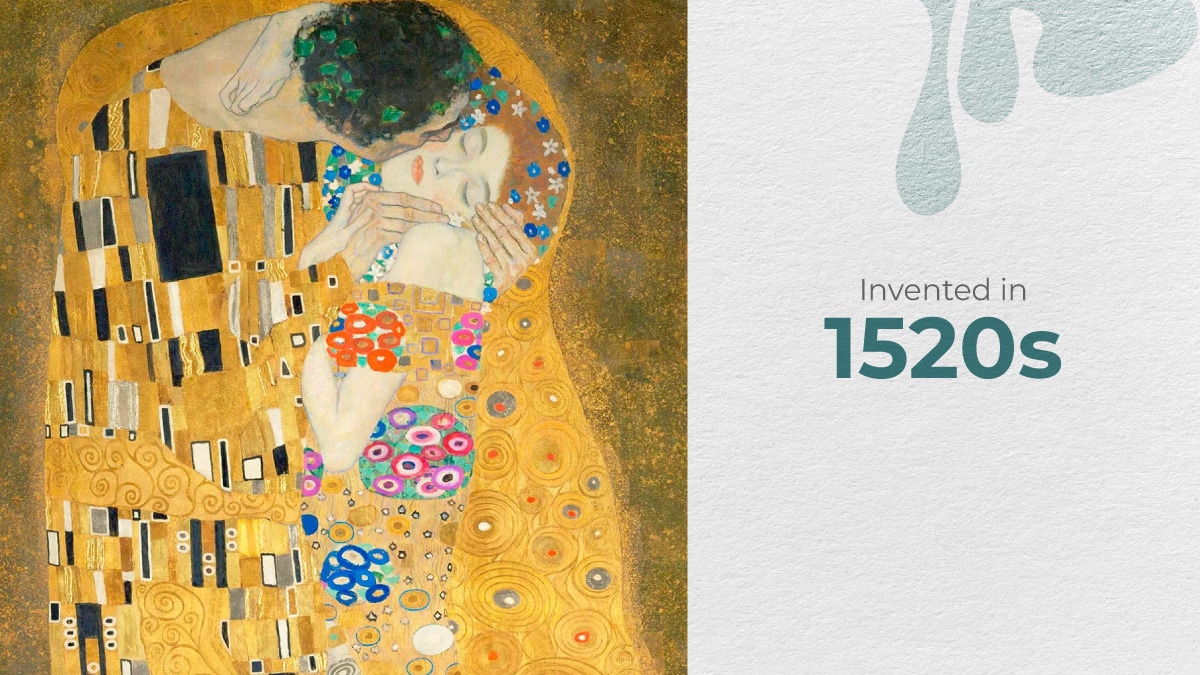
Famous Artists: Nicholas Hilliard, Isaac Oliver, Nihâl Chand
Miniature painting or Portrait miniature is one of the types of portrait painting that is executed on a small piece of material.
The common material used for painting was vellum, ivory, copper, or prepared card.
In the early 16th century, miniature painting was a way for artists to show their talent by illustrating a tiny painting.
This Portrait painting style was often known as limning or painting in little.
Miniature paintings, as small as 40mm x 20mm, were painted by the artists so that they could fit inside jewelry.
18. Mural

Famous Artists: Leonardo da Vinci, Diego Rivera, David Alfaro Siqueiros.
The existence of Mural painting can be traced back to the late Stone Age.
This form of painting focuses on painting on walls or ceilings, rather than on a canvas.
In this painting technique, the architectural elements are incorporated into the artwork to give a beautiful three-dimensional painting.
The use of color, style, and texture can dramatically affect the quality of the artwork.
Acrylic paint is most commonly used for making mural art.
Mural painting is the only type of art painting that lets you beautify the architecture of a place.
19. Panel Painting
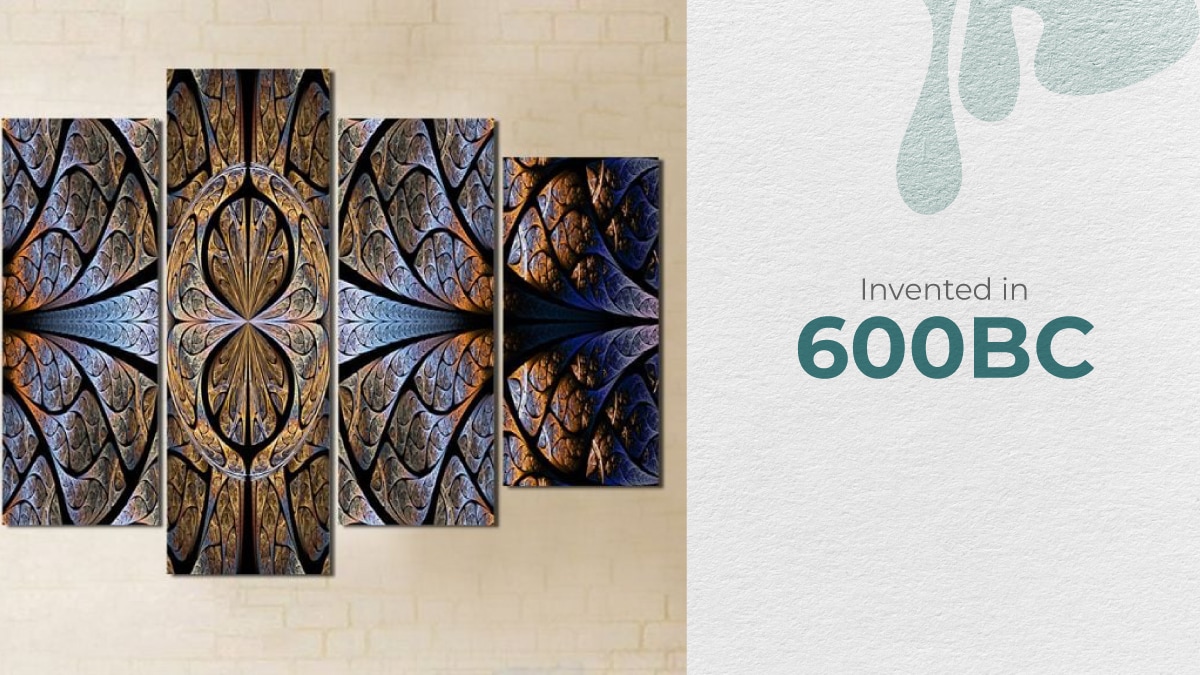
Famous Artists: Cennino Cennini, Dieric Bouts, Rogier van der Weyden
Panel painting is one of the oldest painting styles and techniques that originated before 600 BC.
Panel painting is a style of painting where the artwork is made on wood or metal, as opposed to canvas.
Before Canvas became widely available, the panel was used for easel painting.
The most commonly used wood for panel painting is oak, beech, cedar, chestnut, firs, larch, linden, white poplar, mahogany, olive, and dark walnut.
Making artwork on the panel will give you the benefit of creating a smooth painting, as the panel itself is textureless.
20. Panorama
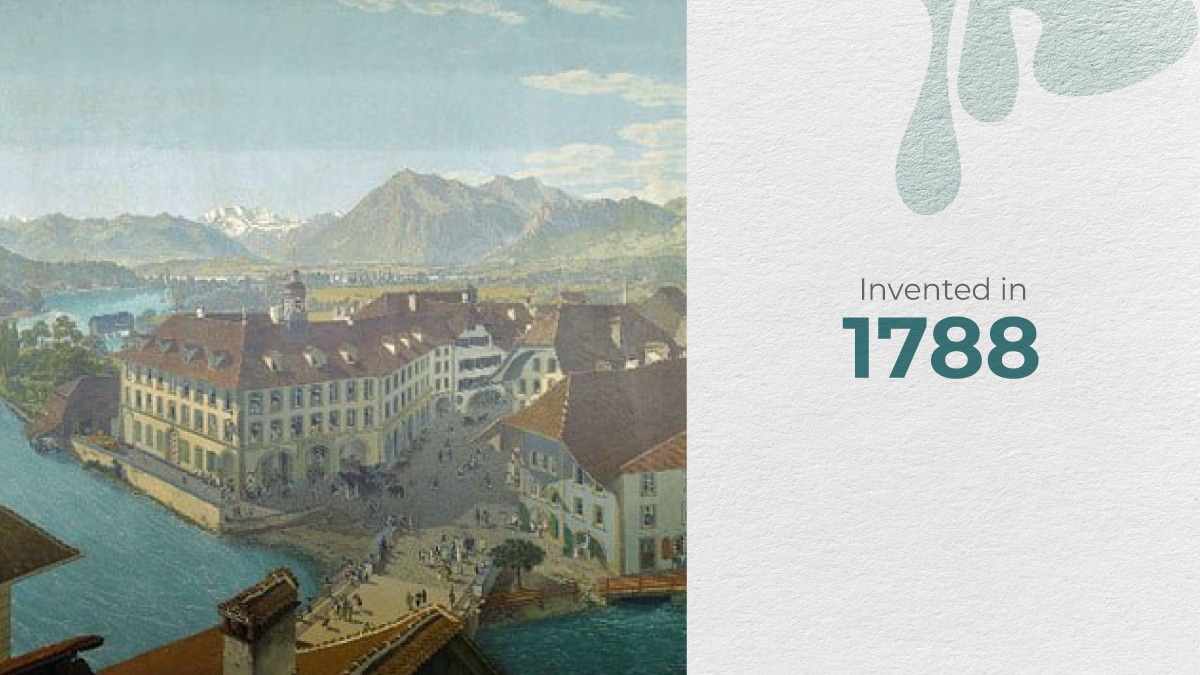
Famous Artists: Benjamin Russell, Robert Barker, Franz Roubaud
The first panorama painting was done by Scottish painter Robert Barker in 1788.
Panorama is a painting technique where the scene or landscape is painted as a whole or in continuous narration.
To be precise, it gives you a wide-angle view of the landscape.
The painting is usually done on a wide canvas or a flat or curved surface.
The panorama lets you simulate the sensation of scanning a seascape or a huge landscape.
You can use any painting medium to make a panorama painting.
21. Perspective
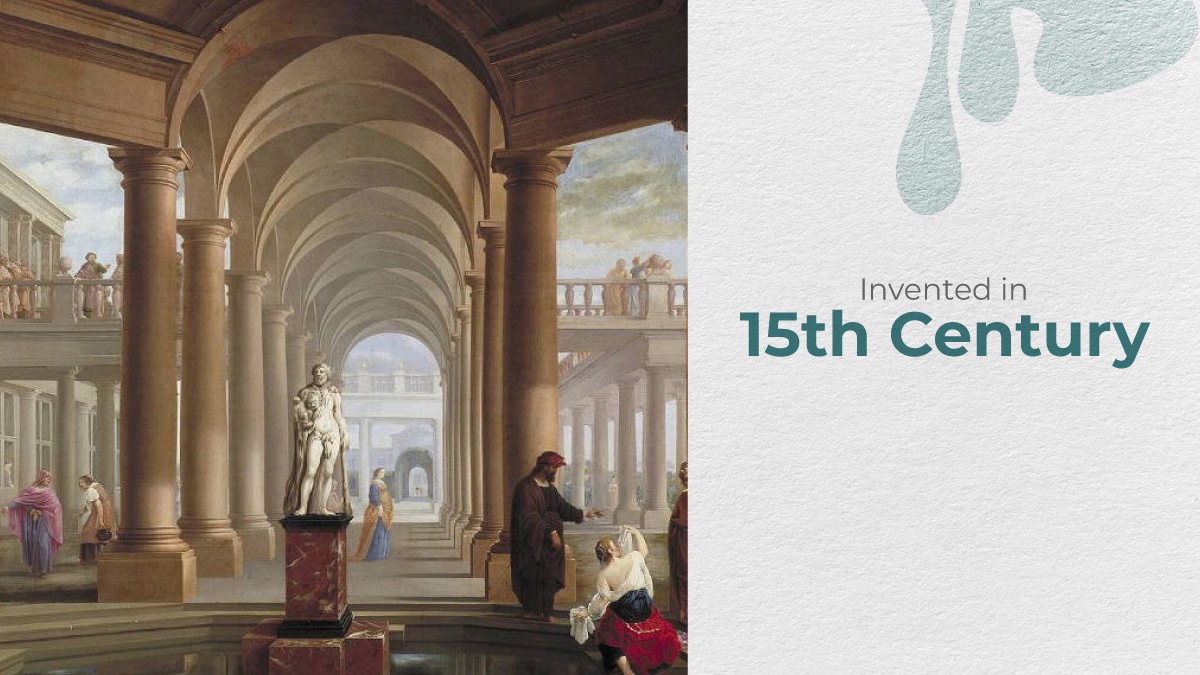
Famous Artists: Masaccio, Paolo Uccello, Andrea Mantegna
You know that everyone has their way of seeing things, and that’s what perspective painting attempts to do.
Perspective painting involves representing the painting from the viewer’s perspective.
This painting style also represents a three-dimensional image onto a two-dimensional plane.
This painting type is similar to foreshortening.
22. Plein-Air Painting
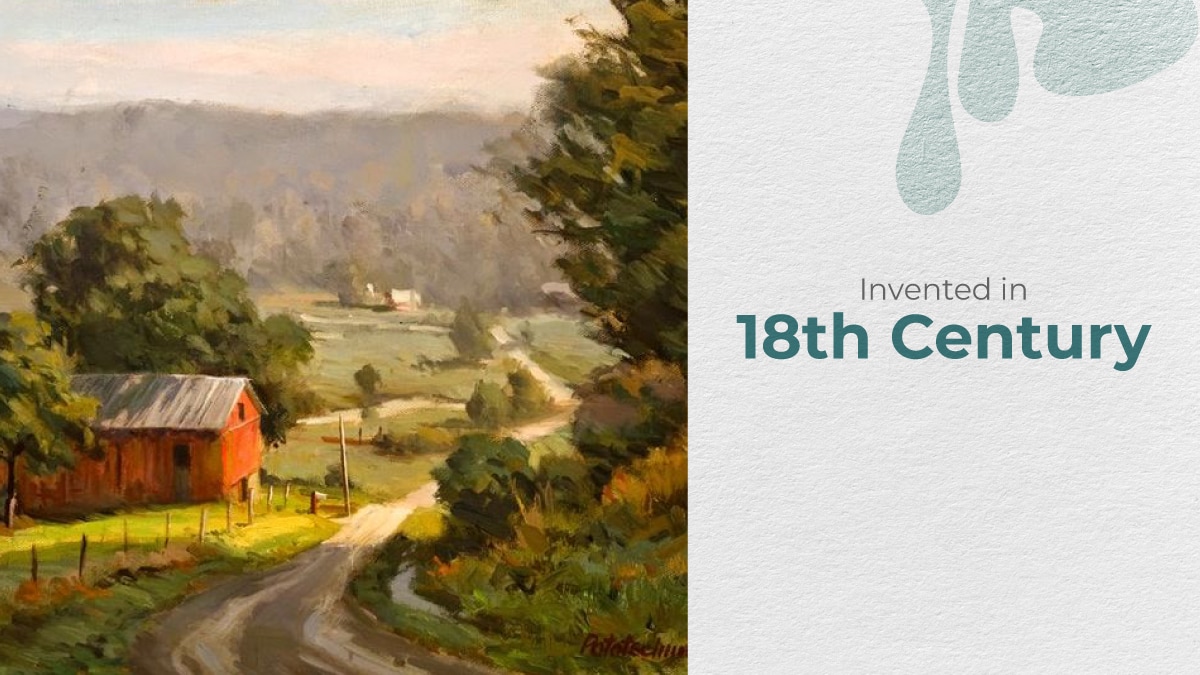
Famous Artists: Edgar Alwin Payne, William Merritt Chase, Alson Skinner Clar
This painting technique originated in France in the 18th century.
Plein-air painting is the method of leaving the studio behind and going out in nature to paint.
In precise terms, this painting style is the practice of painting outdoors.
(Plein-air painting or En Plein air translates to “in the open air.”)
Doing Plein-air painting lets you create wonderful artwork as the source of light is natural outside.
It will let you accurately recognize colors and how they differentiate from others.
23. Sand Painting
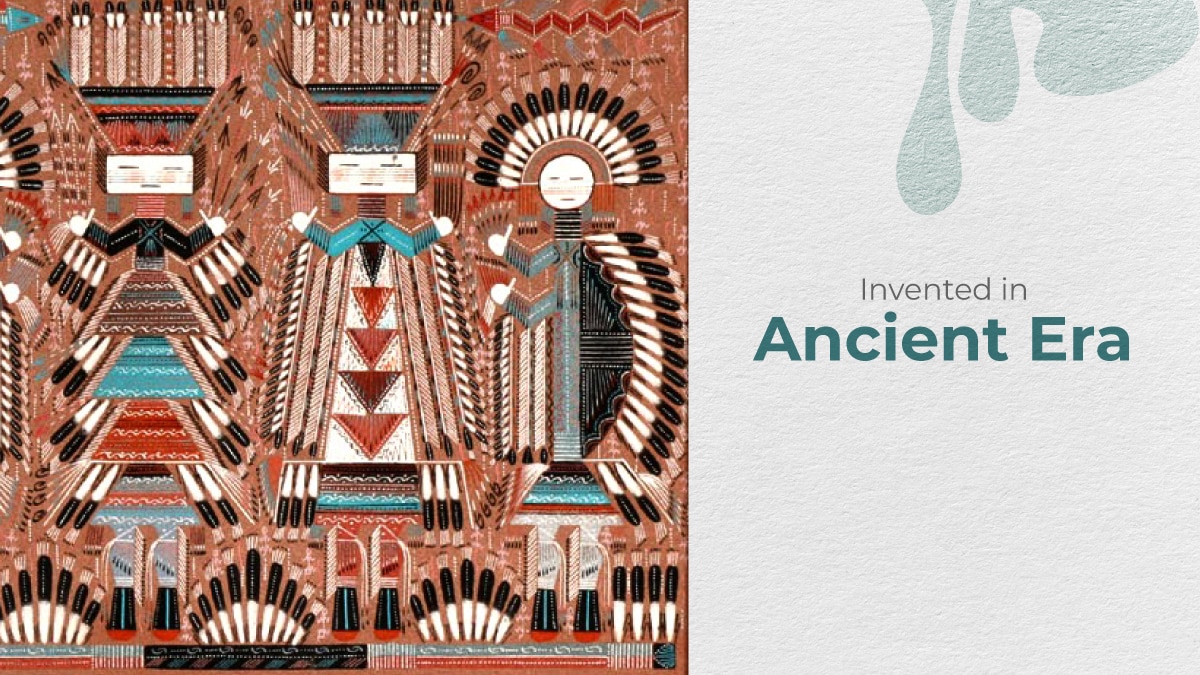
Famous Artists: Tim Bengel, Kseniya Simonova
Sand painting technique has been associated with numerous cultural groups around the world since ancient times.
Sand painting or dry painting is one of the unique forms of painting art that involves pouring colored sand to create a painting.
The paint used in sand painting is made by mixing crushed, colored sandstone; charcoal, pollen, or other dry material.
Sand painting involves precision and intense control over the movement of the hand. To sand paint, you’ll need a lot of practice and patience.
The sand painting lets you create impressive and vibrant artwork which can be on fixed or unfixed media.
24. Scroll Painting
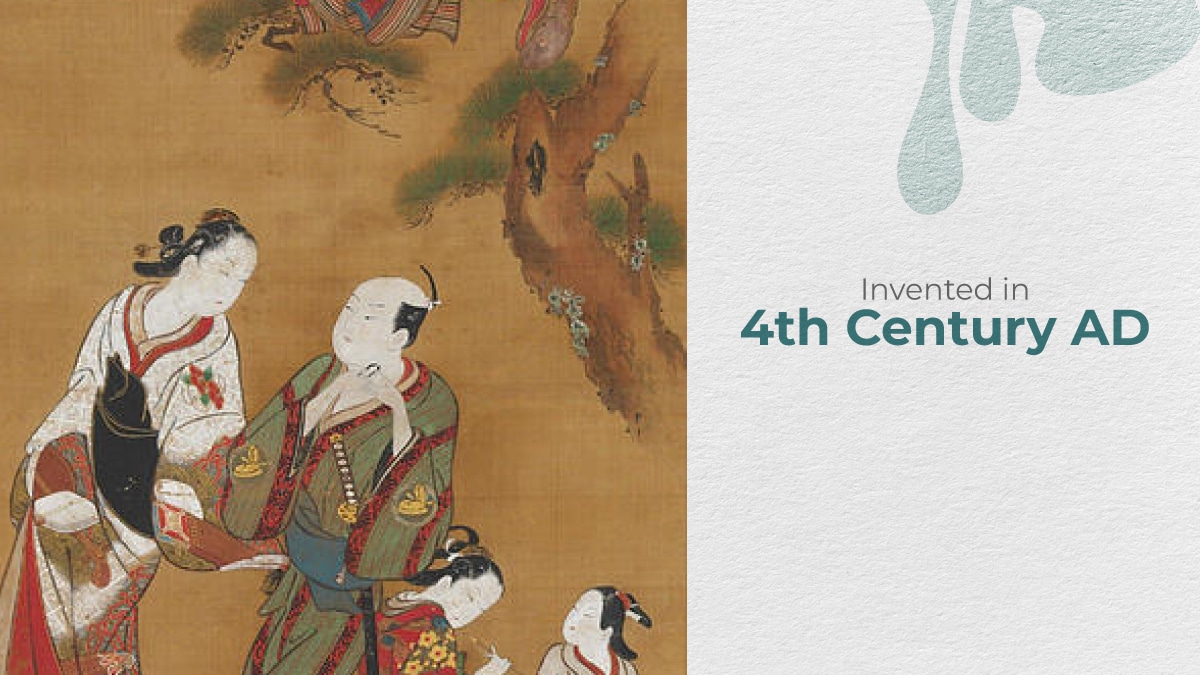
Famous Artists: Ma Yuan
Chinese “illustrative” scrolls, the forerunners of narrative scrolls, first appear in the late 4th century AD and impart Buddhist moral values.
East Asia is the main region for this painting technique.
The Chinese landscape scroll is the culture’s greatest contribution to the history of painting.
Even the Japanese narrative scroll, which established the storytelling potential of painting, can serve as an example of the two dominating styles.
These paintings give the sense of traveling through time and space, making the viewer into a traveler.
Roads and routes are frequently portrayed, and they appear to guide the viewer’s sight into the piece.
25. Sfumato
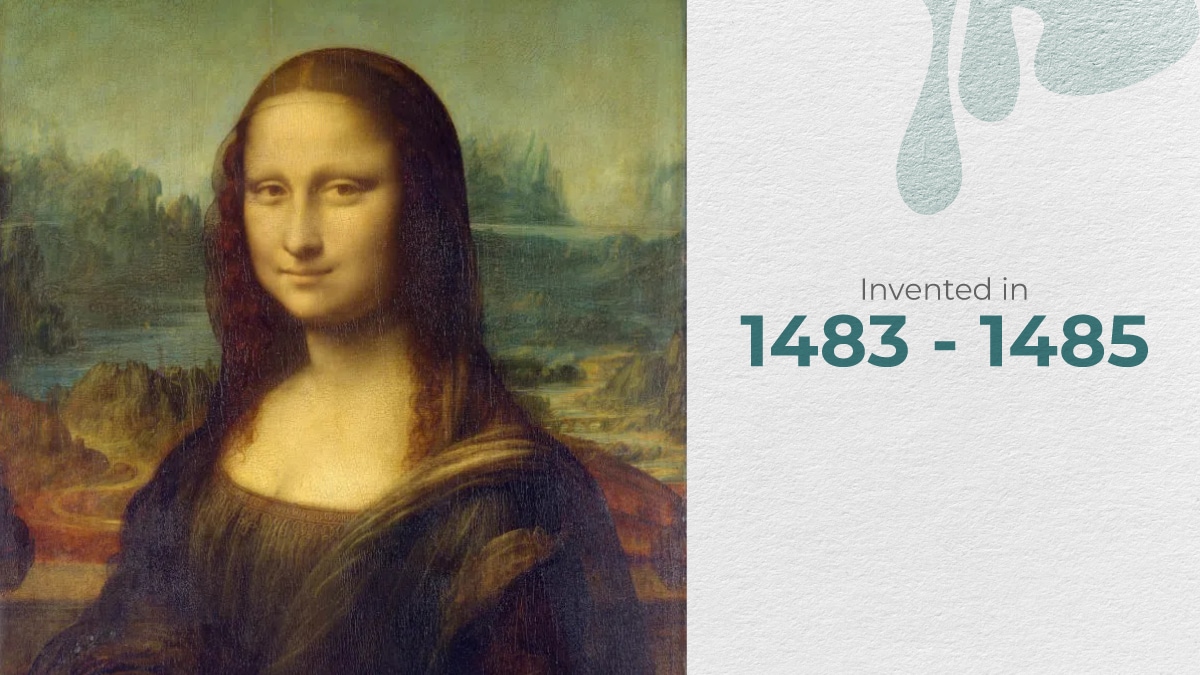
Famous Artists: Leonardo da Vinci, Correggio, Raphael
According to the art historian Giorgio Vasari, Sfumato was first invented by the Primitive Flemish school in the year 1483 -1485.
Sfumato is a type of painting technique in which colors and tones are blended to give a smooth look without leaving any mark of transition, edges, or lines.
Also, the transition between light and dark shades is invisible.
When you use Sfumato, the final artwork will appear as a flawless smooth painting.
Oil paint is most commonly used for making Sfumato, although other mediums like tempera can be used.
26. Sotto In Su
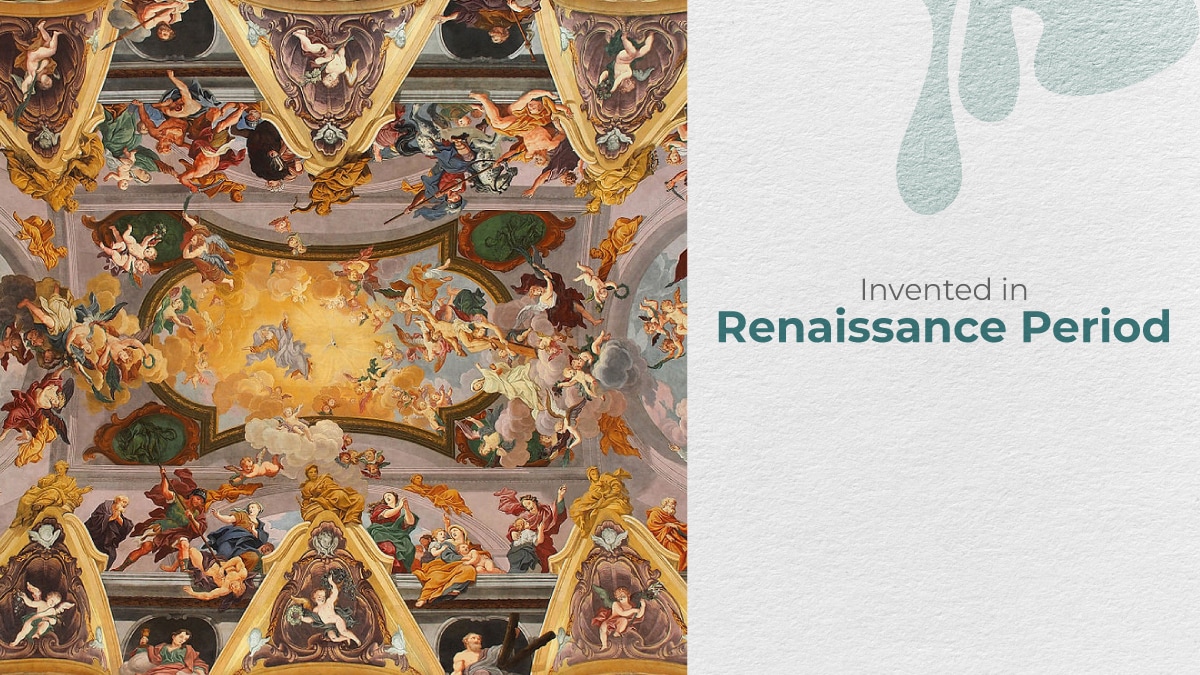
Famous Artists: Correggio, Giovanni Battista, Andrea Mantegna
Sotto In Su, meaning “seen from below,” is an Illusionistic ceiling painting.
In this painting technique, the artwork is painted upon a ceiling or other higher surface which gives an illusion to the observer.
Most of the Sotto In Su paintings were created to give an illusion of an open sky.
The advantage of Sotto In Su is that it unites architecture, painting, and sculpture together.
27. Spray Painting
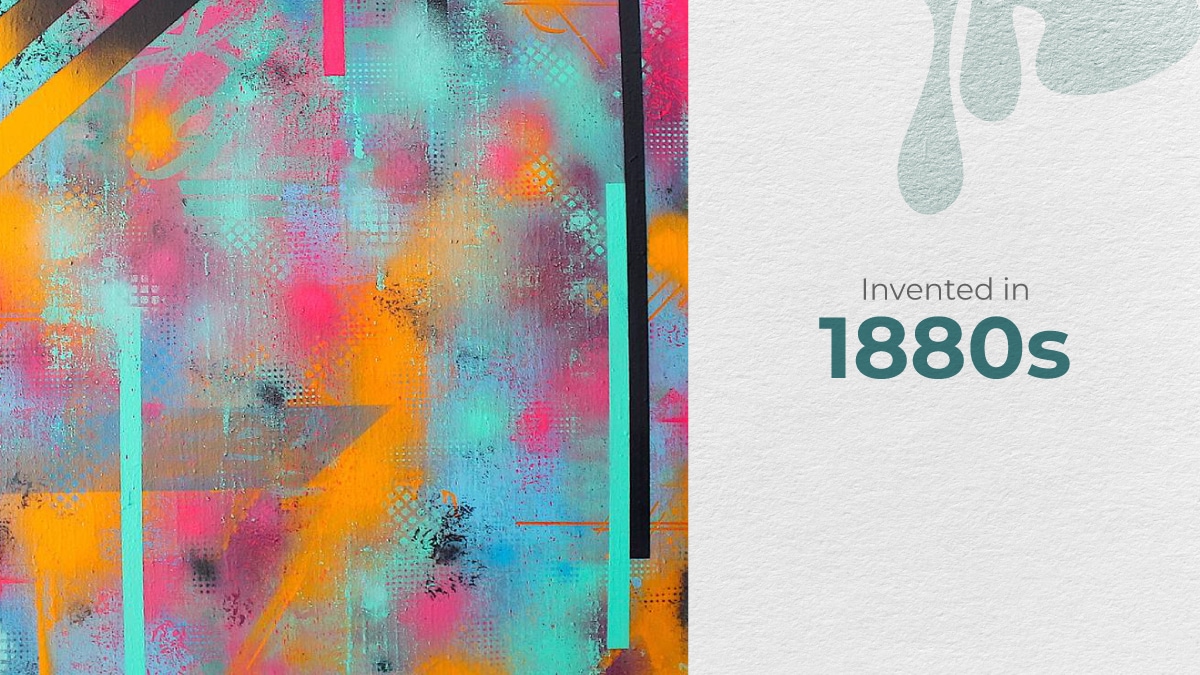
Famous Artists: Bansky, Jean-Michel Basquiat, Shepard Fairey
Spray painting techniques can be traced back to the 1880s.
Spray painting is a different painting style that uses a device to spray the paint.
Aerosol paint is commonly used as a medium in spray painting. Tools like a spray gun, spray booth, spray can and spray brush are used for painting.
When you use an aerosol spray to make art, it will leave a smooth and even coat of paint.
There may be different painting styles but spray painting is one for graffiti and street art.
28. Stone Painting
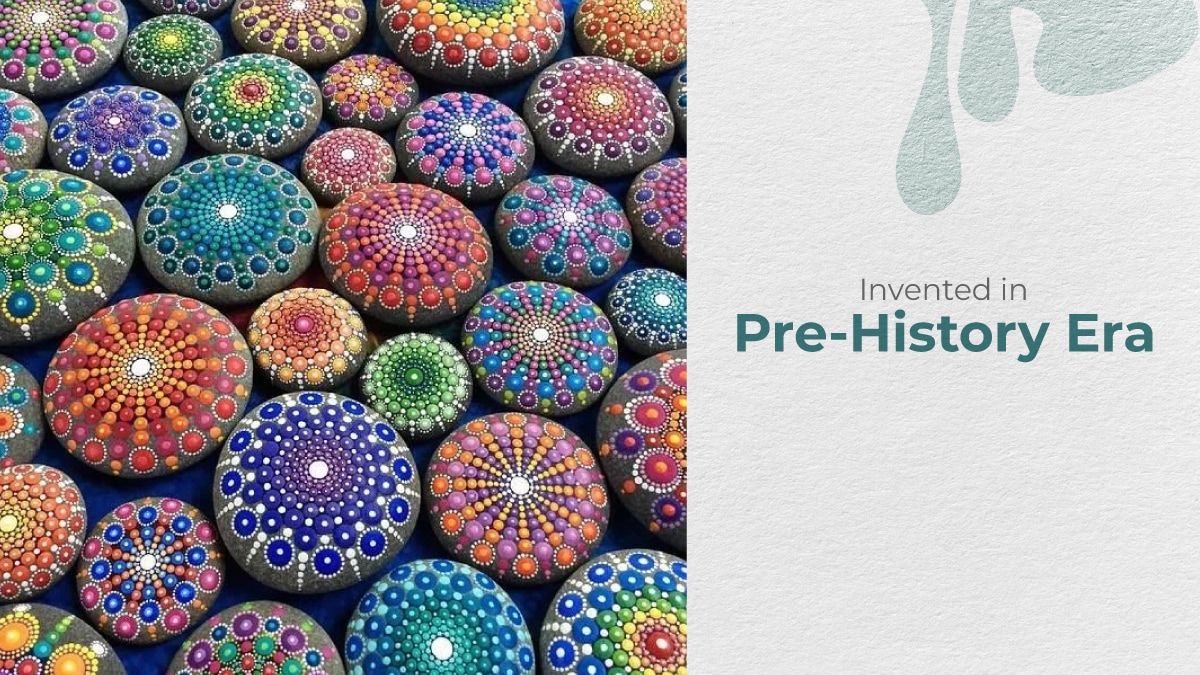
Discovered during the pre-historic ages but has seemingly evolved throughout the decades.
This is one of the independent painting techniques a.k.a rock painting.
Stone painting is nothing but making art on a stone surface by using strong and durable paint.
The most preferred stones for this painting technique are the riverbed stones that have a distinctive round figure.
The most common painting style used in this type of painting is mandala art.
Stone painting is usually made up of many bright colors.
29. Tachism
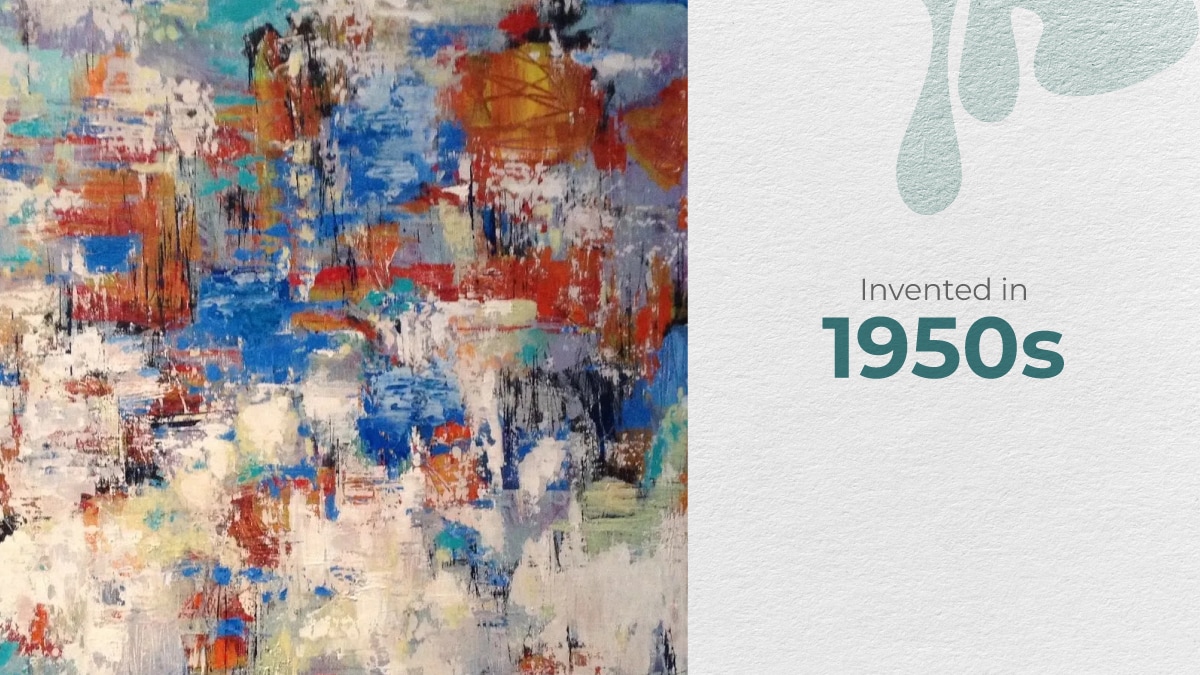
Famous Artists: Jean-Paul Riopelle, Wols, Jean Dubuffet
Through the 1950s, this painting technique was used in Paris following World War II.
Tachism was a painting technique that enhanced the painting with intuitive and impulsive brush strokes.
Using a loaded brush, enormous paintings with sweeping brushstrokes, drips, blots, stains, and color splashes were created.
Those who practice this technique are known as Tachists.
30. Tenebrism
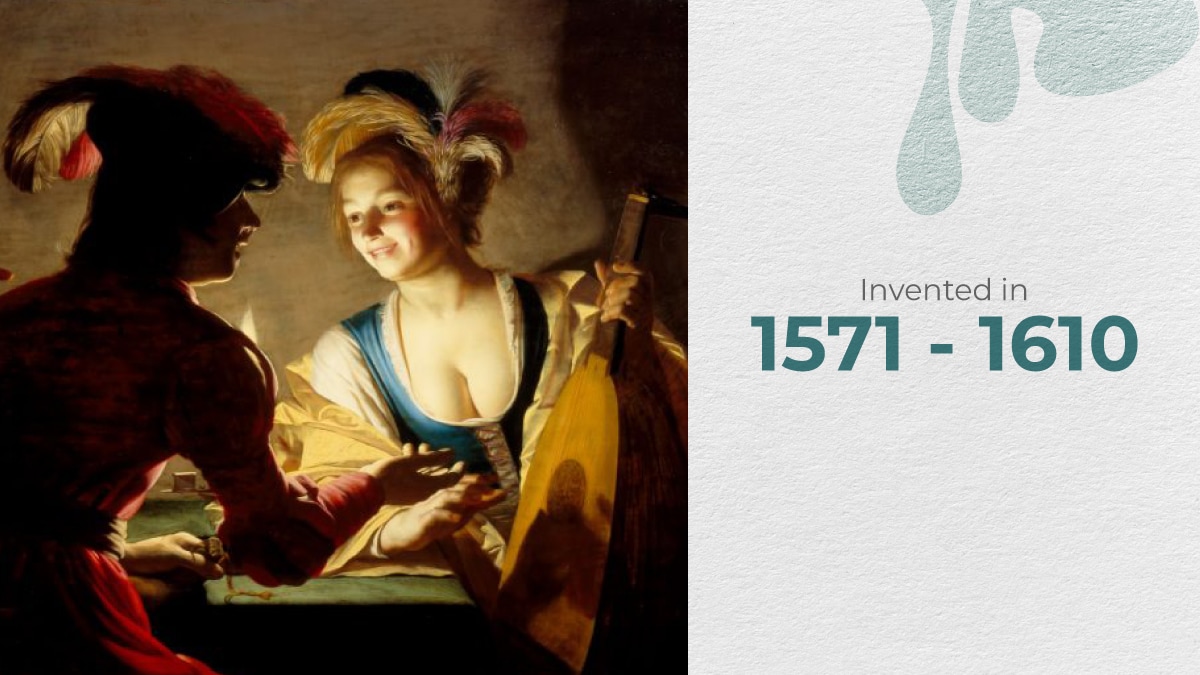
Famous Artists: Caravaggio
Tenebrism is one of the most drastic painting techniques in the art world introduced to us through the paintings of Caravaggio.
Tenebrism is a term that comes from its Italian counterpart “tenebroso” which quite literally means dark and obscure. It is a type of painting technique that uses illumination and details on faces and hands placed contrasted to a predominately dark backdrop.
It uses stark contrasts of light and dark to enhance the dramatic impact of figurative compositions.
The figures in tenebrist paintings are frequently depicted against a background of extreme darkness.
The figures on the other hand are lighted by a bright, searching light that sharply yet masterfully controlled chiaroscuro that highlights their three-dimensional forms.
31. Tromp L’oeil
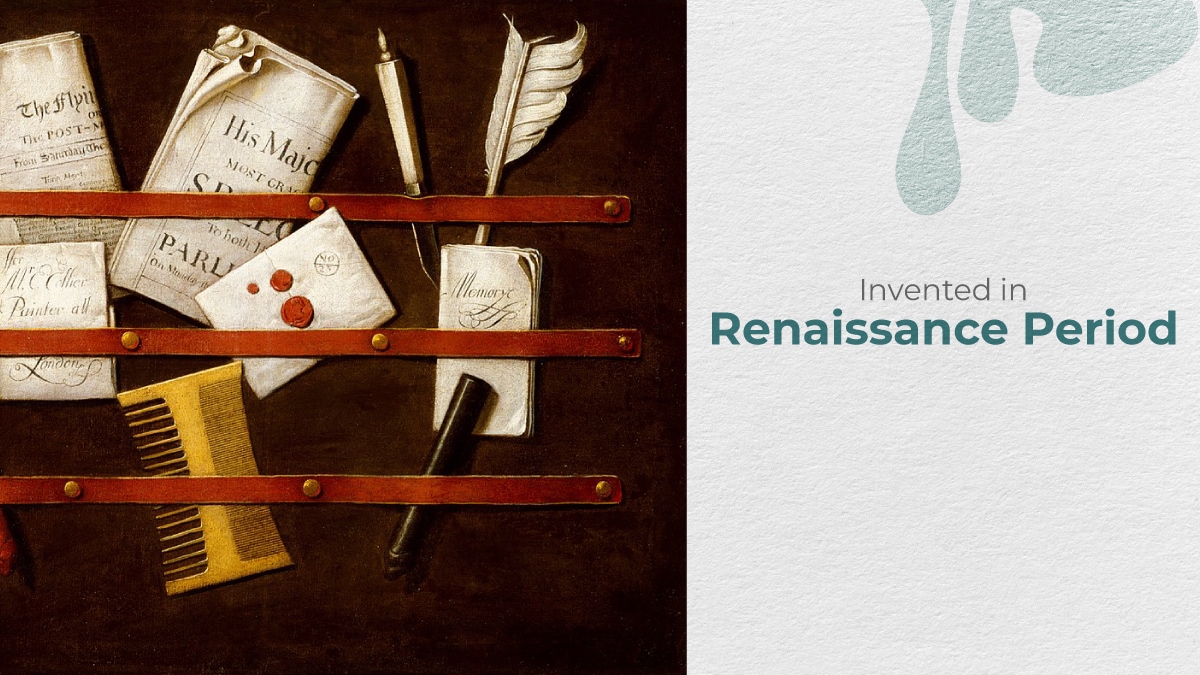
Famous Artists: William Harnett, Cornelis Norbertus Gysbrechts, John F. Peto
Trompe l’oeil is a French painting type that translates to “deceive the eye.”
The main purpose of this painting technique is to create an optical illusion of the subject existing in the three-dimension.
Trompe l’oeil focuses on creating a realistic painting with a twist in perspective.
Zexius, one of the famous painters of ancient Greece, was known for his realistic painting styles.
“The painting is so realistic that the birds tried to eat the grapes from Trompe l’oeil.”
32. Veduta
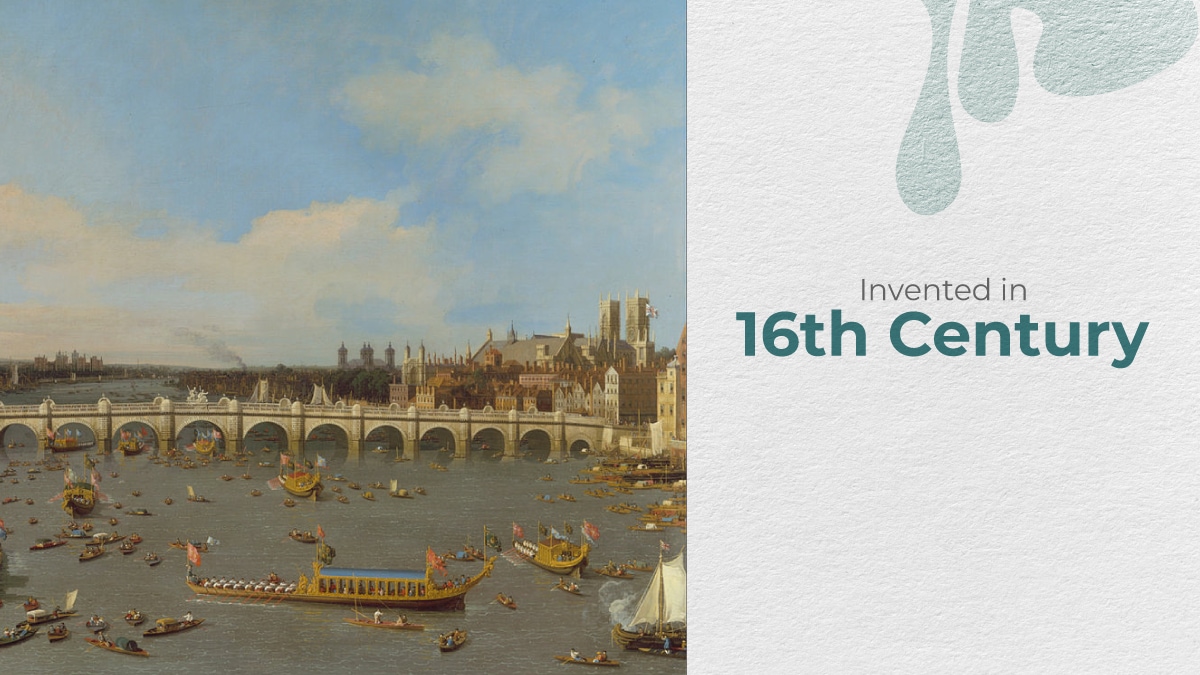
Famous Artists: Canaletto, Francesco Guardi, Paul Bril
One of the many techniques of painting, Veduta is a highly detailed painting type that depicts a city or town or any part related to the city.
It is a type of landscape painting where the size of the painting can be large, so as to accommodate the whole cityscape.
Those who practice this style of painting are called Vedutisti.
33. Replica Art
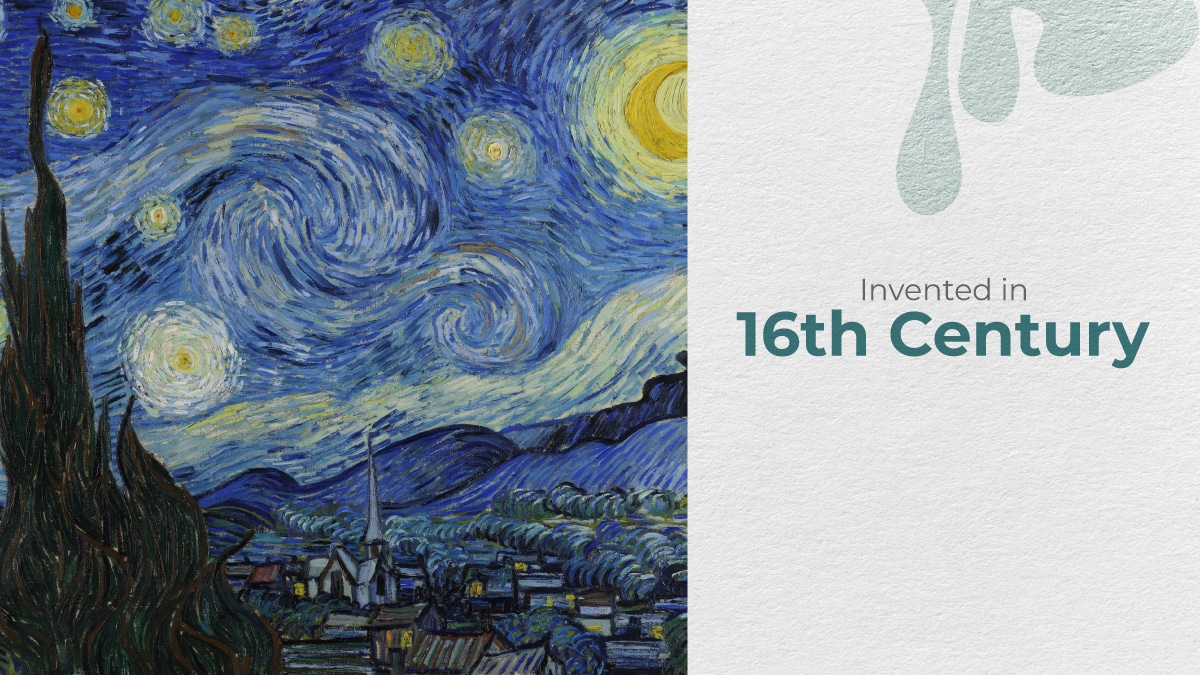
Did artists always earn from the paintings that were auctioned or sold? Not really!
With each painting of the famous artists selling for more than a million dollars, failing to be easily available to mass, artists found a better way.
Reproduction of famous artworks.
Regular artists skilled themselves by learning the medium, style, and painting techniques of these renowned artists.
This led them to create replicas of famous paintings.
Reproductions often increased the value of the original painting. The easy availability of the famous painting also helped the original artist earn some royalty!
In fact, the resemblance was so uncanny that one could not differentiate between the original and the replica.
From van Gogh painting copies to even maestros like Leonardo da Vinci can be replicated.
And if kept for a longer period, it has the potential of earning a worth.
The best thing is, artists at PortraitFlip are equipped enough to copy the famous styles of these artists.
You don’t have to go searching the internet, what you are looking for is right here!
How to Find Your Art Style
This brings me to the last part of the article, how to find your art style?
Now, choosing an art style is a no-brainer. What is more important is to choose and become an expert in a medium.
If you are just beginning, then you should definitely start with the pencil sketch medium. It will give you enough space to make mistakes.
Next up, choose a type of painting. Landscape paintings or representational art should be the best choice. It is easier to replicate than to innovate.
Chalk down the art styles and techniques that go best with the pencil medium and voila! you have found your style.
Once you get a hang of it, you can slowly spread your roots across other mediums that entice you. With exposure to different mediums, many different techniques can be used too.
That’s it! It just takes you to decide what you want to paint.
Now I can finally take a breather *sigh*.
Art is a creative endeavor that requires three Ps: patience, persistence, and perseverance.
Attaining mastery of styles and techniques of painting is not easy. You’ll have to spend years perfecting your craft.
But don’t be discouraged, because Rome was not built in a day!
That’s all she said…
Hey creative peeps!
This was our updated list of all types of Paintings, Mediums, Styles, And Techniques.
We hope you enjoyed learning about the variety that art is and the ways in which it is practiced in the world.
If we have missed any style or techniques, please let us know in the comment section below
My personal favorite painting style is Divisionism because we love Vincent and his madness.
You can follow us on Instagram, and subscribe to our Youtube channel.
Which painting style do you like? And why?
Comment down below!
Bonus Tip: How would you react if you knew that you can transform your normal images using different art styles?
Frequently Asked Questions
Starry Night was painted by Dutch painter Vincent van Gogh in the year 1889. Impasto technique was used to paint this masterpiece.
The only way to develop an art style is by experimenting. Explore the different art styles and find the one that suits you the most. Start practicing and add your personal touch to it. Soon, you’ll have your unique art style.
The painting medium is the substance in the paint that acts as a binder. It forms the base of the paint and gives it a particular characteristic. Famous painting mediums are oil, acrylic, watercolor, and tempera.
Mona Lisa, The Scream, Girl With a Pearl Earring, Guernica, The Starry Nights are some famous paintings.
There are more than 100 types of paintings that exist. We’ve mentioned the top 49 painting types to get you started.

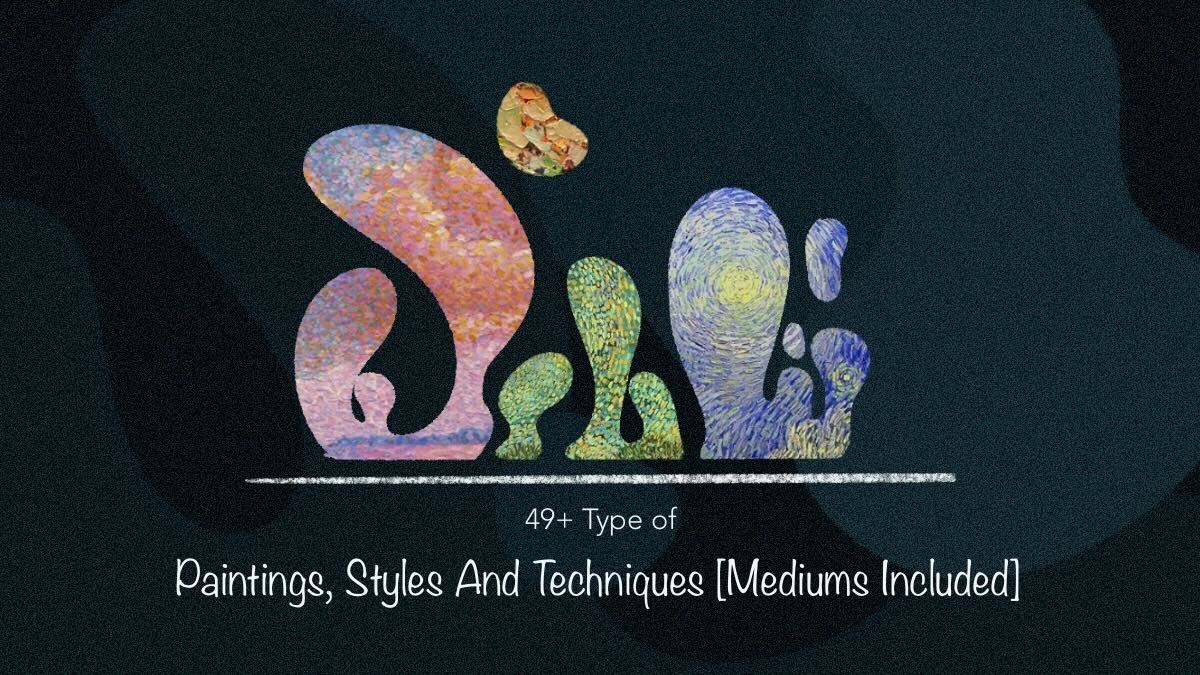

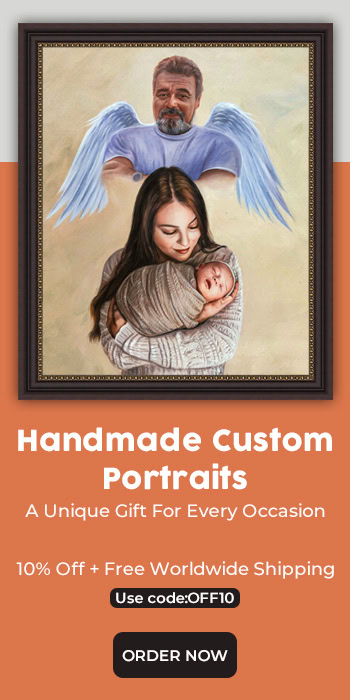
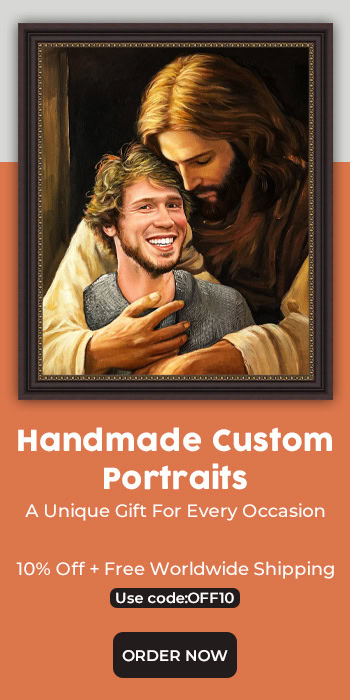
Why wasn’t Porcelain painting included?
Hello Jacqueline,
I’ll definitely try to include Porcelain painting when I update the blog 🙂
What’s up, constantly i used to check website posts here in the early hours in the
dawn, because i like to find out more and more.
Hey,
What’s up! We have more art blogs that you might wanna check 😉
Pingback: 49 Most Famous Paintings Of All Time In The Art History (Ranked)
Very good
Thank you, Shashavali 🙂
It is very useful for the young generation and teaching purpose also good, I like it very much and enjoyed
Thank you, Silas. I’m glad that you found this blog useful
Good day,
It is really informative art information that I have experienced.
Painting art is my hobby, but I earn something for it in everyday life.
Personally, I am working on a self-designed art painting technique (realistic 2D -3D), which I have been actively implementing for 10 years.
Best regards,
Floris
Hello Floris,
Thank you for reading the blog!
it’s good to know that you treasure painting and have been actively working on your own painting technique! It’s just so awesome ❤ Would you like to share more about it?
caricature and cartoon is not included
Hi Gautham,
I’ll definitely try to include caricature and cartoon when I update the blog again. Thanks for your suggestion 🙂
Awesome😄🌈
Thank you, Surendran 🙂
Superbb
Thank you, Pooja
Pingback: All You Want to Know About Artwork
They are actually 50!
49 right? xD
Awesome👍
Thank you, Anamika 🙂
Thank you for sharing, I learnt so much about painting techniques that can assist me in my class work and add to my vocabulary.
Hello Hermin,
I’m glad that you found the blog useful. You can check out our other blogs on art as well that may help you with your class 🙂
Pingback: Traditional Art vs. Digital Art: Which One Is Better?
Pingback: Traditional Art vs. Digital Art: Which One Is Better?
This was helpfull thanks 😊
I’m grateful that you found this helpful, Connie 🙂
Thank you for the information I shall pass it along to my children😉 appreciate cha !
Thank you for the information I shall pass it along to my children😉 appreciate cha ! If I may suggest you add cubism?
Hello Sarah,
I’m glad that you find my blog useful! I’ll definitely add cubism when I update the blog again in the future. Thank you so much for your suggestion 🙂
Is paint pouring considered painting? I definitely think it is technical and a technique – but would it still be considered painting?
Hello Kim,
Paint pouring can be done with the use of acrylics. Yes, it is a form of painting that you should definitely try! The results will be mesmerizing ❤
I would like to know the technique of painting with elements and stone. I’ve see paintings, I have never found any info on it.
Hello Helen,
It’s called Stone painting 🙂
Long before the creation of photography (late 1830’s) portrait painting was the only way wealthy people could capture their image for future generations. The skill ensured we could see what kings and queens from centuries ago actually looked like. Your image above is a perfect depiction.
So developed were the skills, that artists of the time will be known forever as great artists and their creations will increase in value because of the moment in history they represent.
Hello David,
it’s absolutely true that only wealthy people were capable of having their portraits painted; but today, anyone can get a custom painting!
Pingback: 23 Famous Painters Who Transformed The Course Of Art Forever
Pingback: 13 Watercolor Painting Tips (Step by Step) For Beginner [That Works]
Pingback: How To Clean An Oil Painting: A Comprehensive Guide (+Dos And Don’ts)
Pingback: Want to make Online classes fun? Here are 6 tips - online classes
Pingback: Gift A Painting And Win Their Heart! 12 Reasons To Gift A Portrait
Pingback: Oil Painting Vs Acrylic Painting: The Differences And Which Medium Is Best For You
Pingback: Top 11 Portrait Painting Trends To Look Out For In 2022
Pingback: Why to Gift a Painting and When: Solving the Gifting Dilemma
Hello Satish,
I’m glad that you found the article helpful! We also have a variety of articles related to paintings that you might wanna check out 🙂
Informative post! This is a great share thank you
its really amazing list of art style
Thank you so much for the art information!
Thank you for this informative post! I really enjoy looking at and discovering paintings with different techniques. I like graffiti the most since one can express their emotions in a freestyle or abstract manner, almost like trippy or psychedelic artworks. I’m just curious if digital paintings can also be printed in several sizes as other wall arts or paintings?
Hi,
Art is malleable. If you want physical proof of digital art or something that you have created; it can be printed. Although it depends on what surface you want to get it printed on. if you find an industrial-sized printer then a 12 ft print is also possible.
Did you also know to get the painting effect you can even get the digital art printed on a canvas?
Let me know if you have any other doubts.
To add 2 painting techniques
1.Bottle painting
Inner surface of transparent glass bottle, using enamel paint with small curved brush
2Sand treated cloth surface painting.
Firstly cloth is coated with plastic paint.Sand spared on the cloth and coated with glue,then painting using plastic paint or water color
You can study them in Bagan, Myanmar.